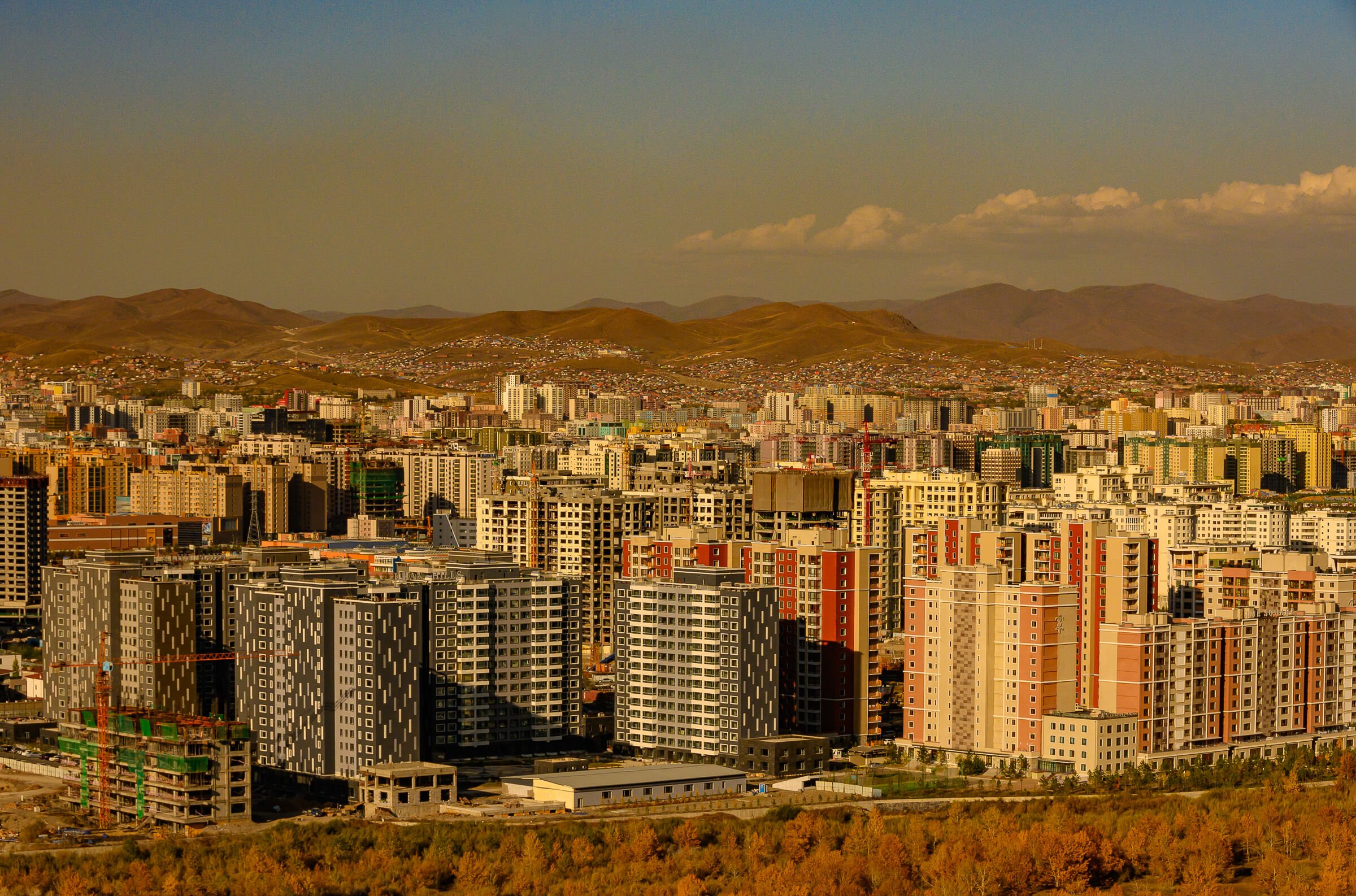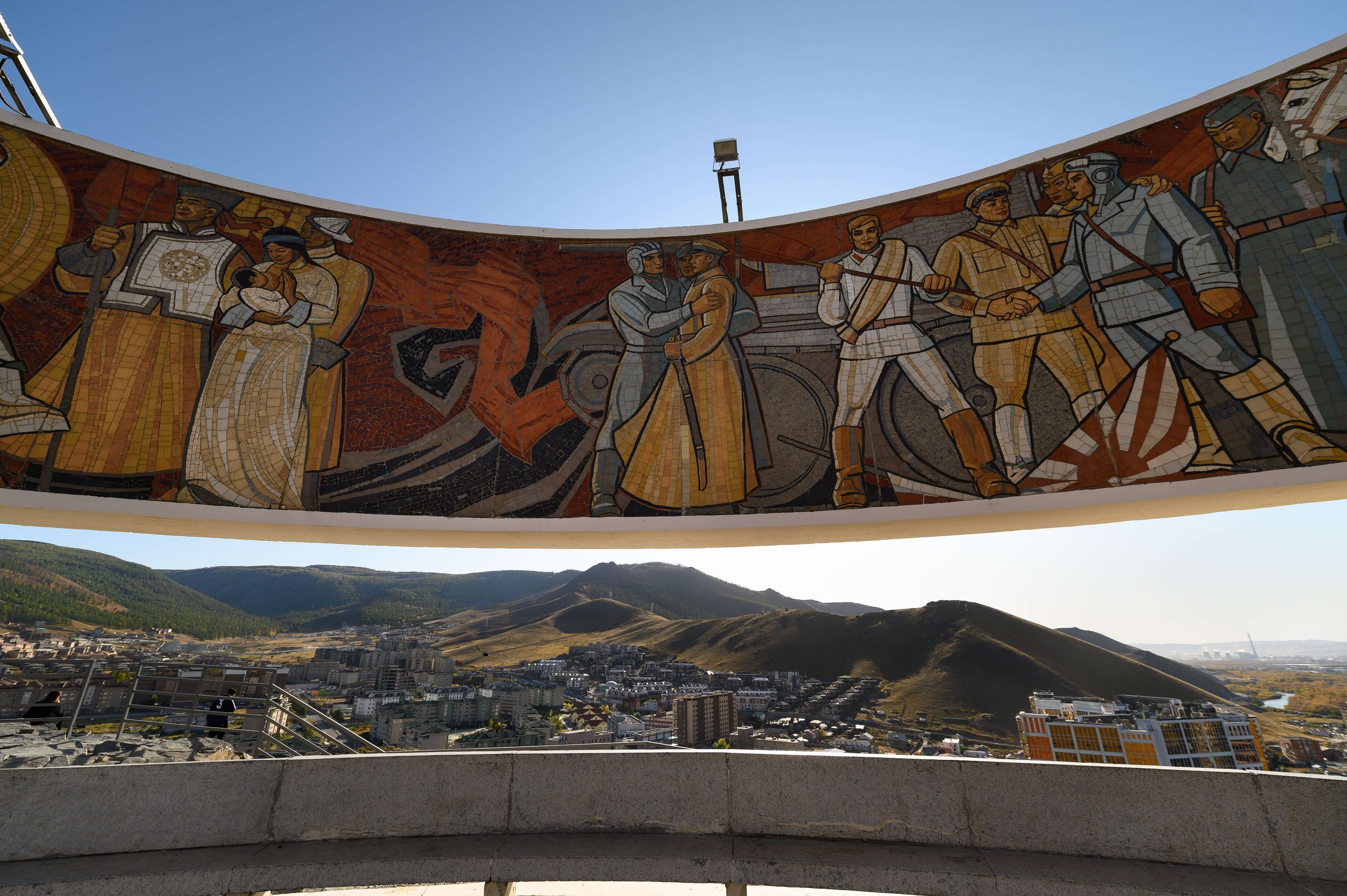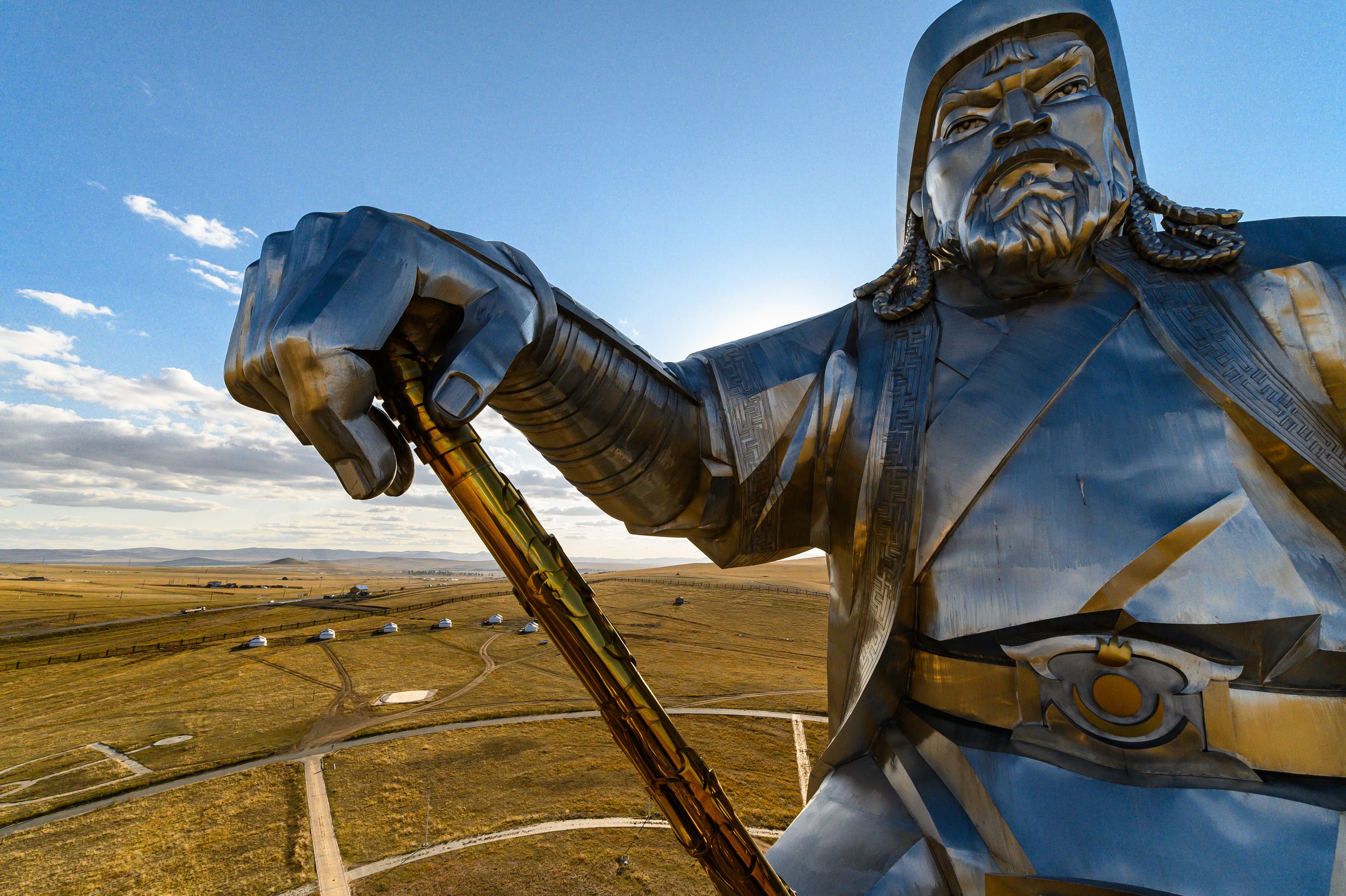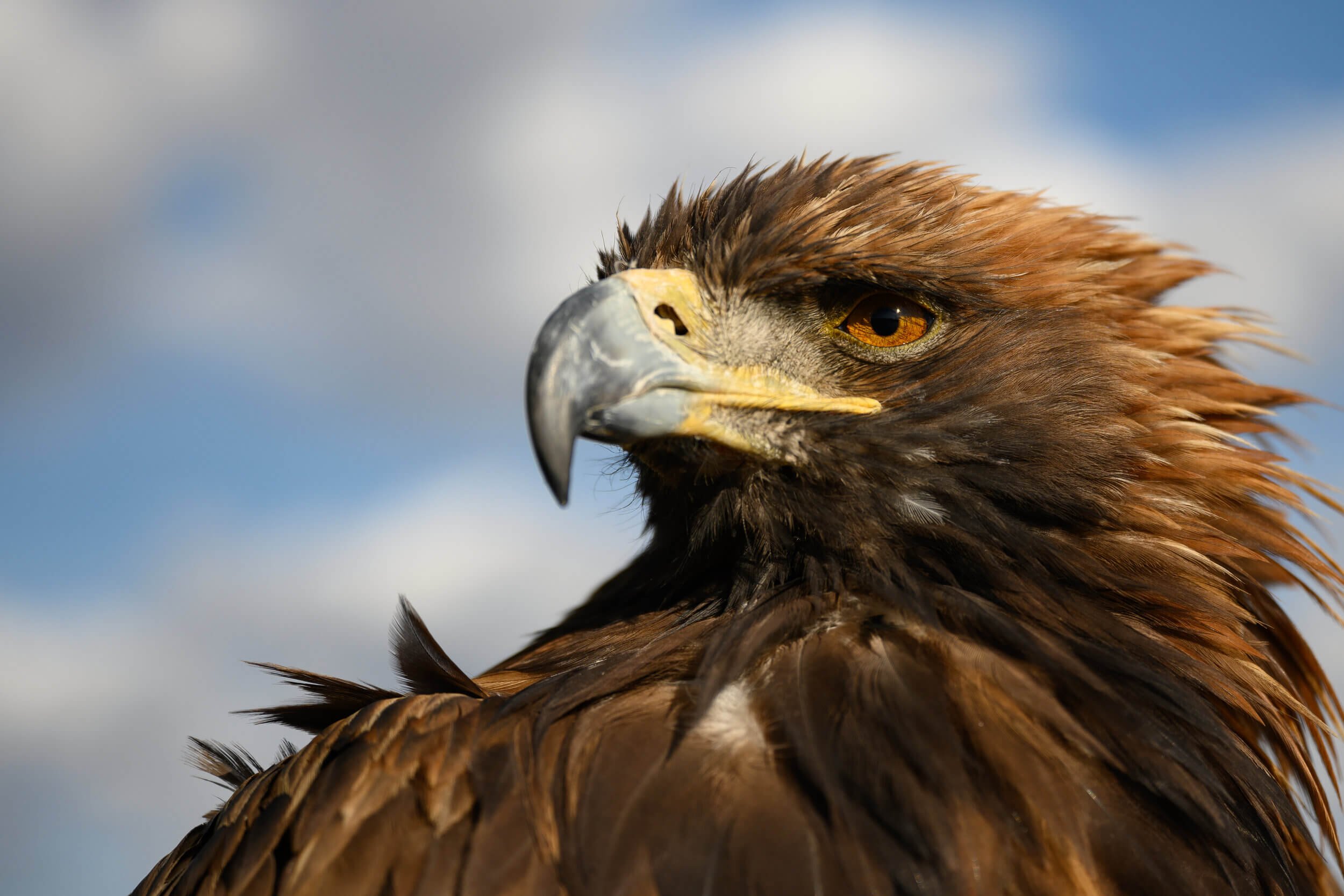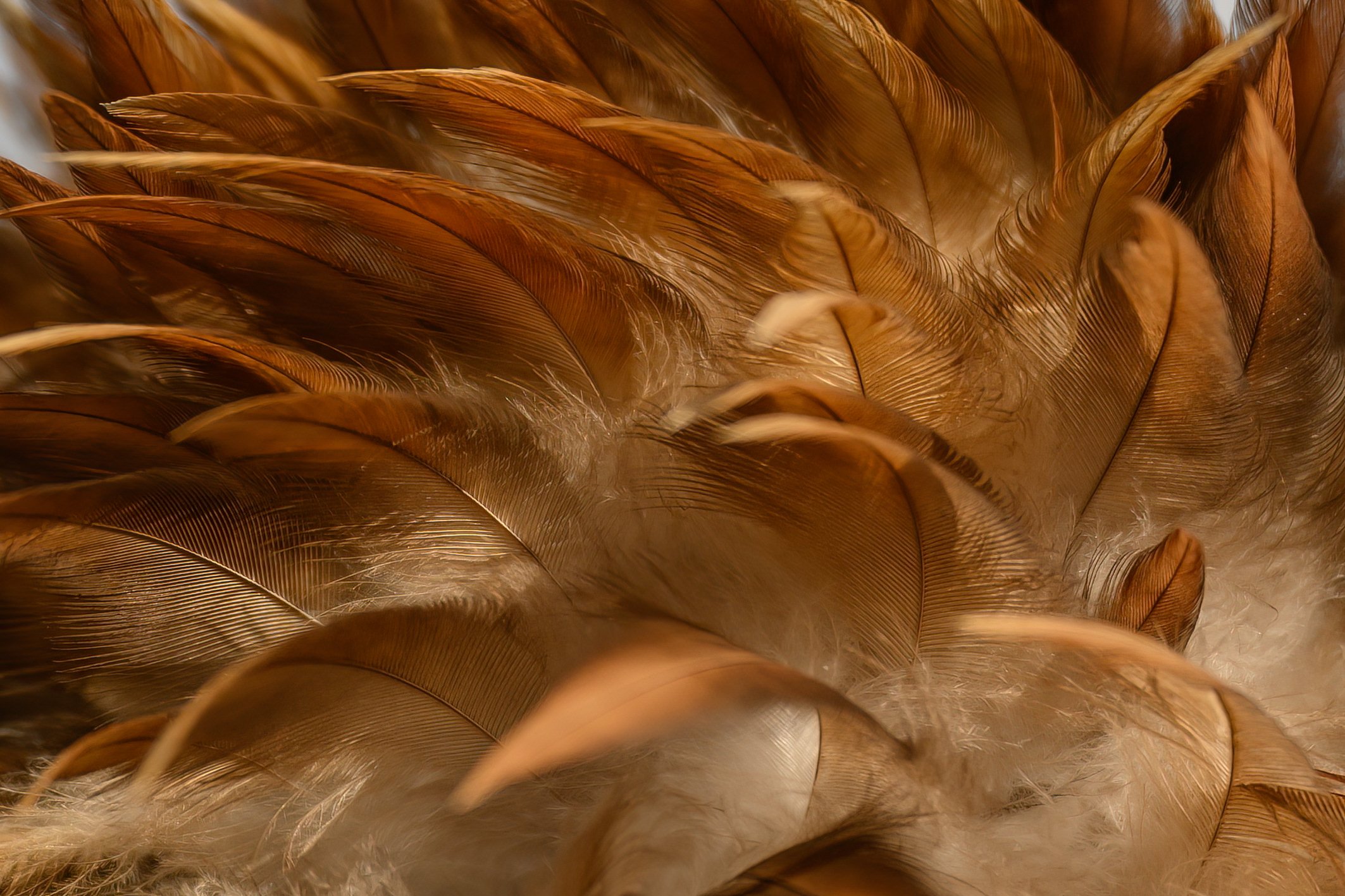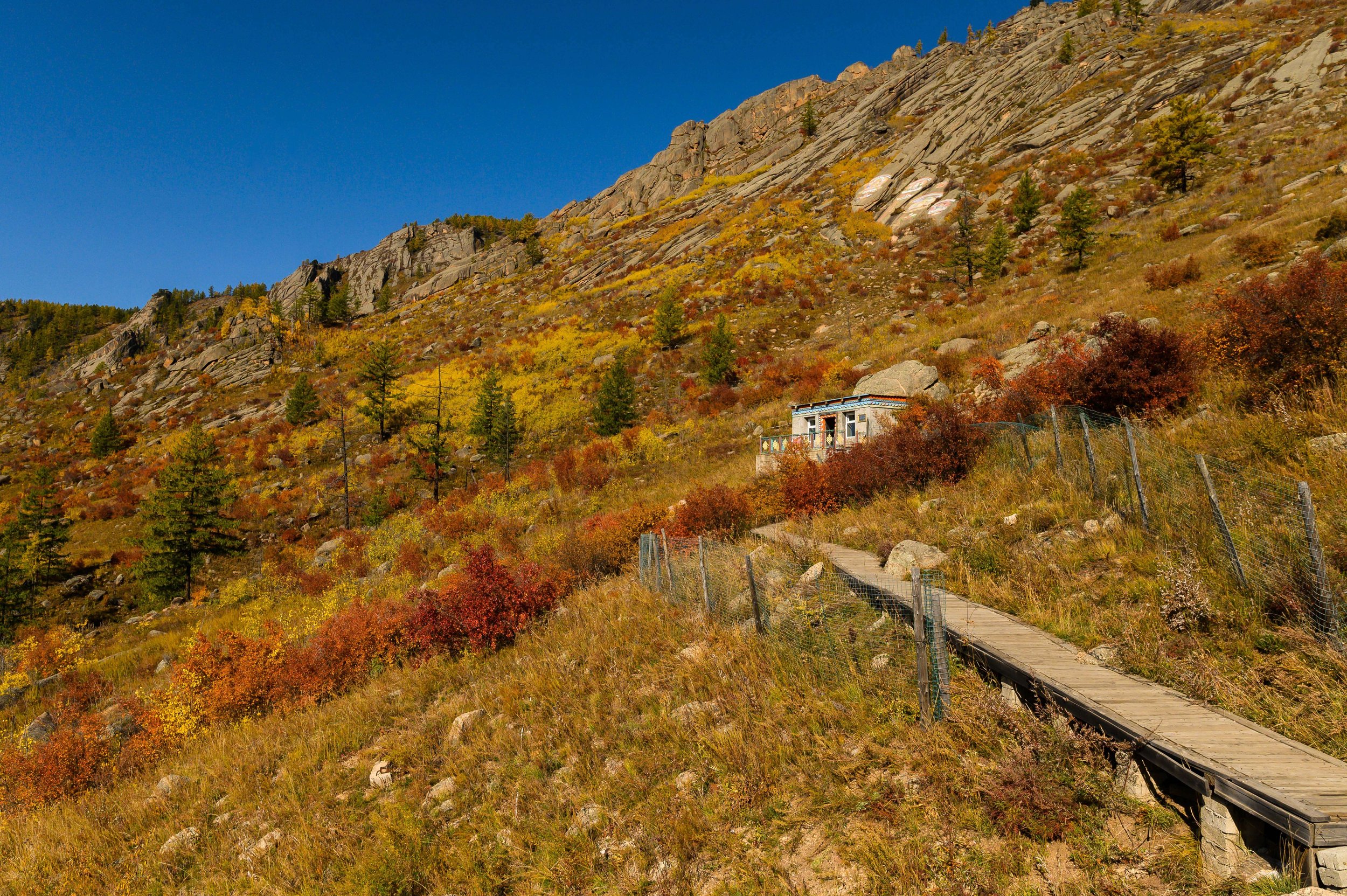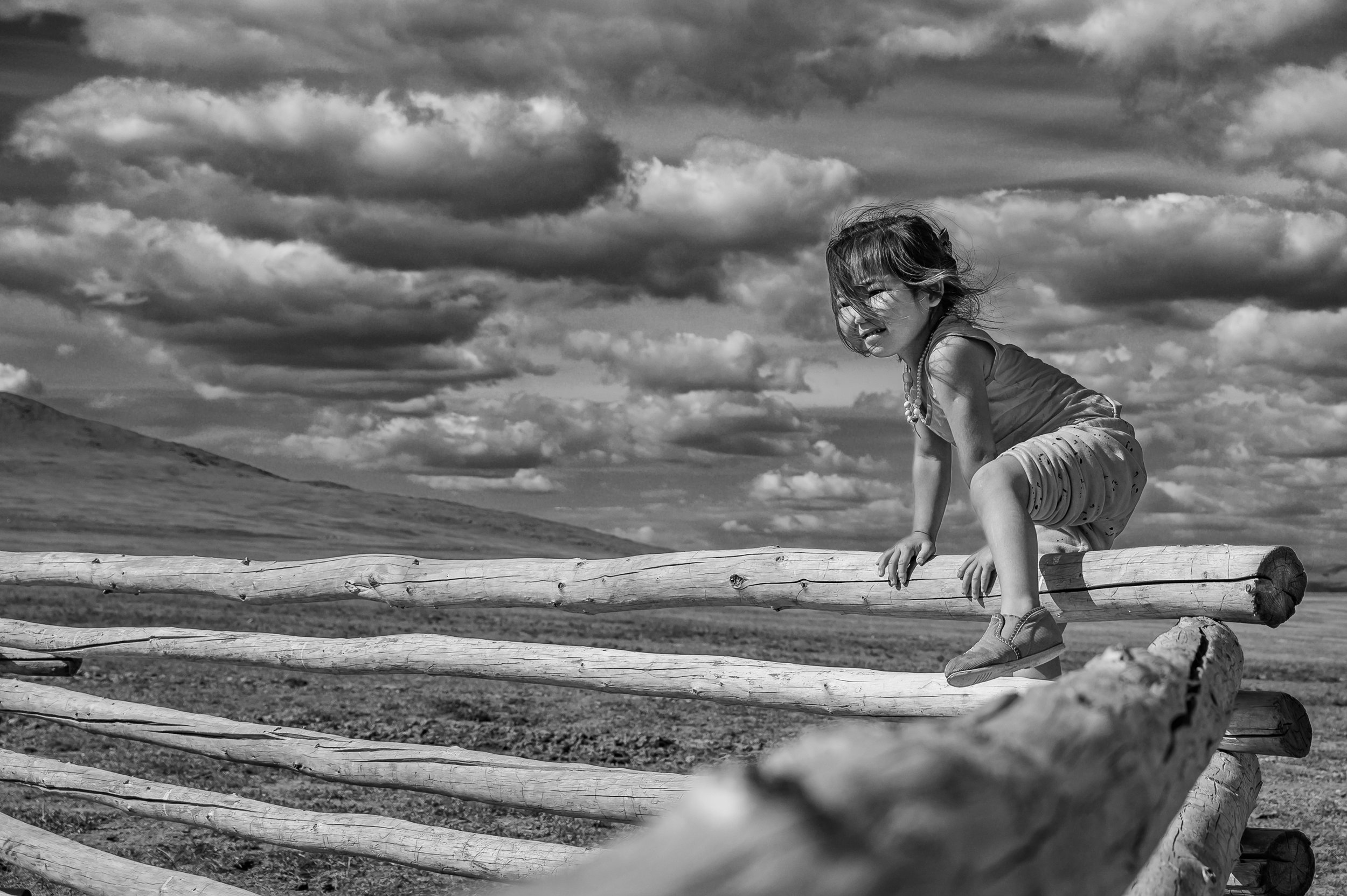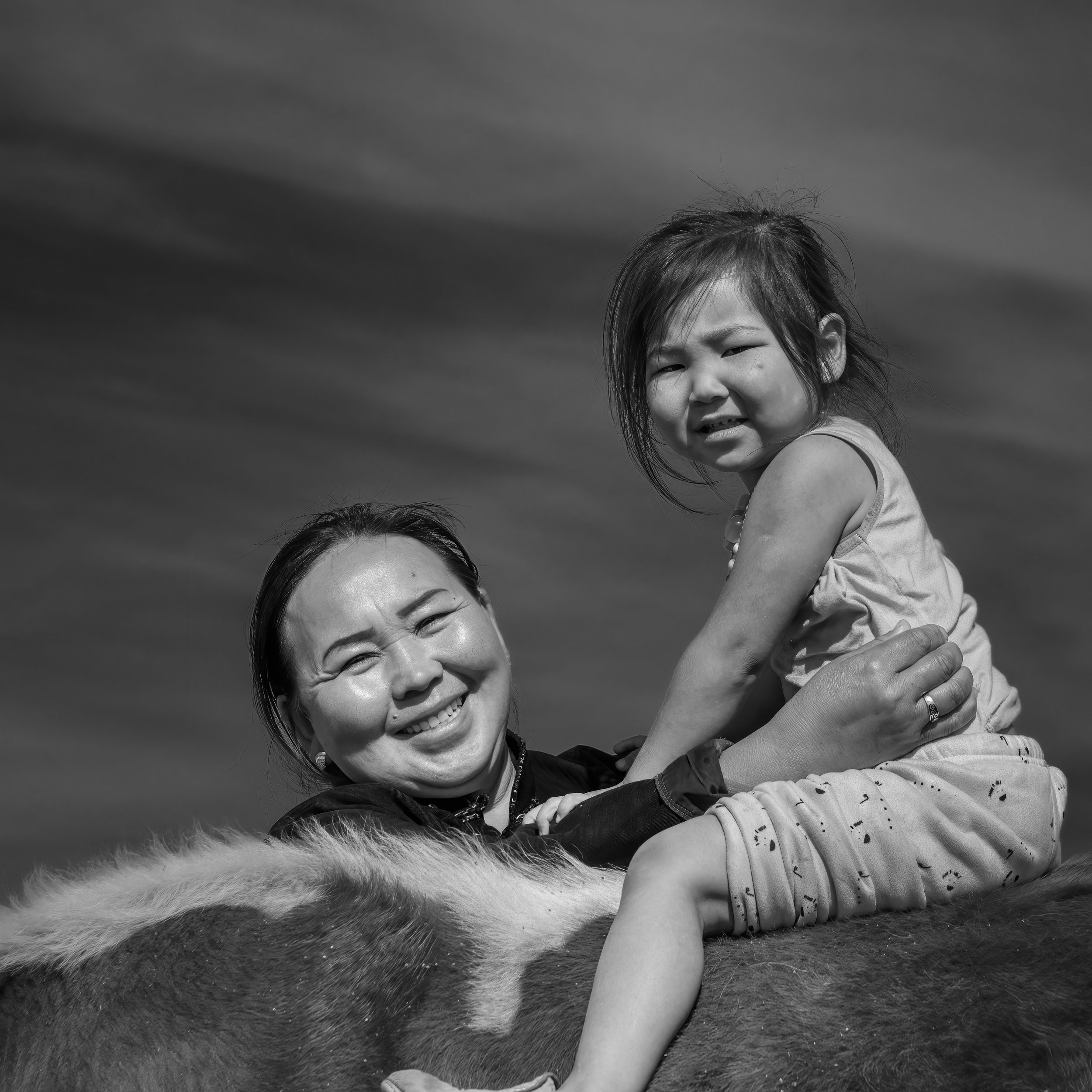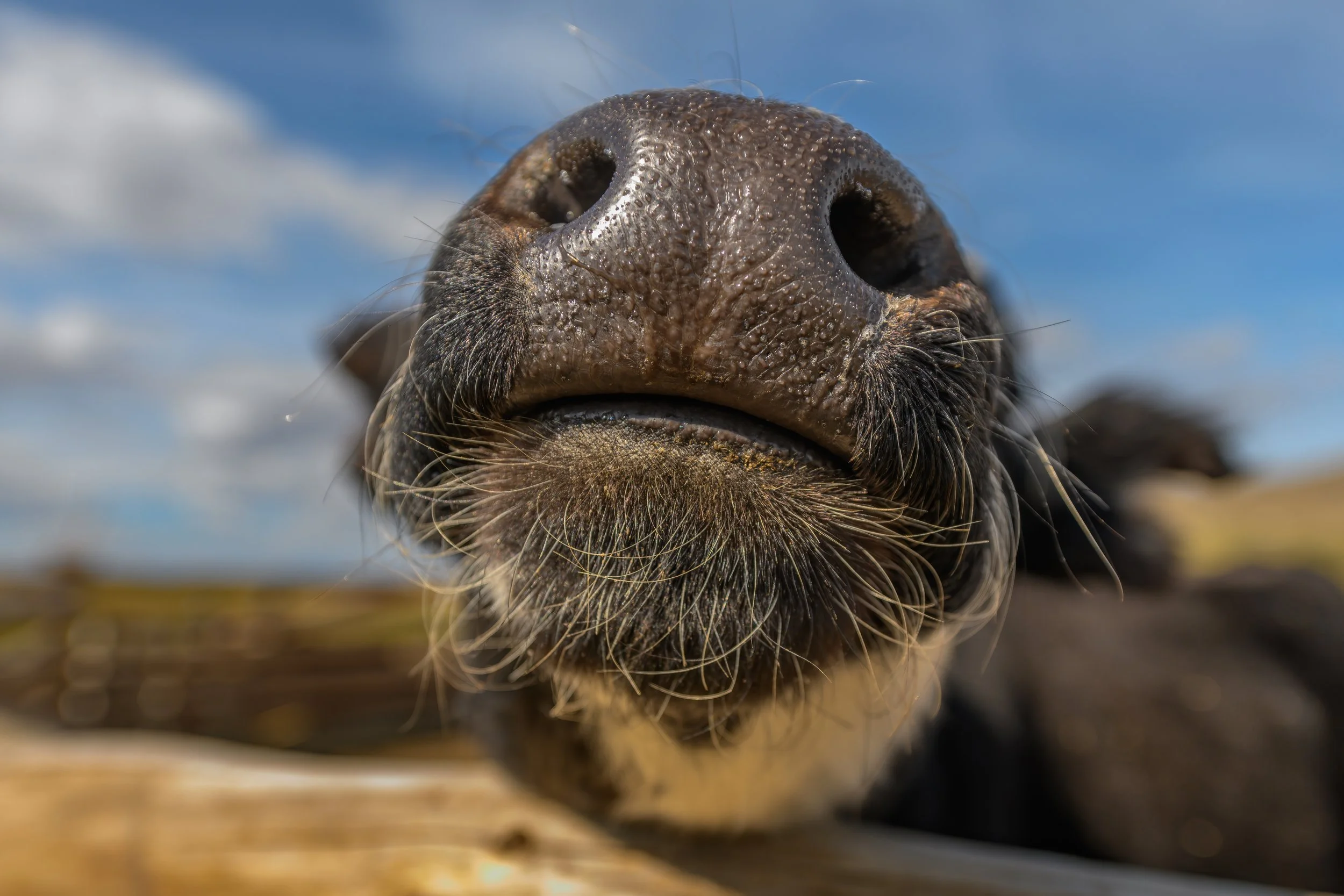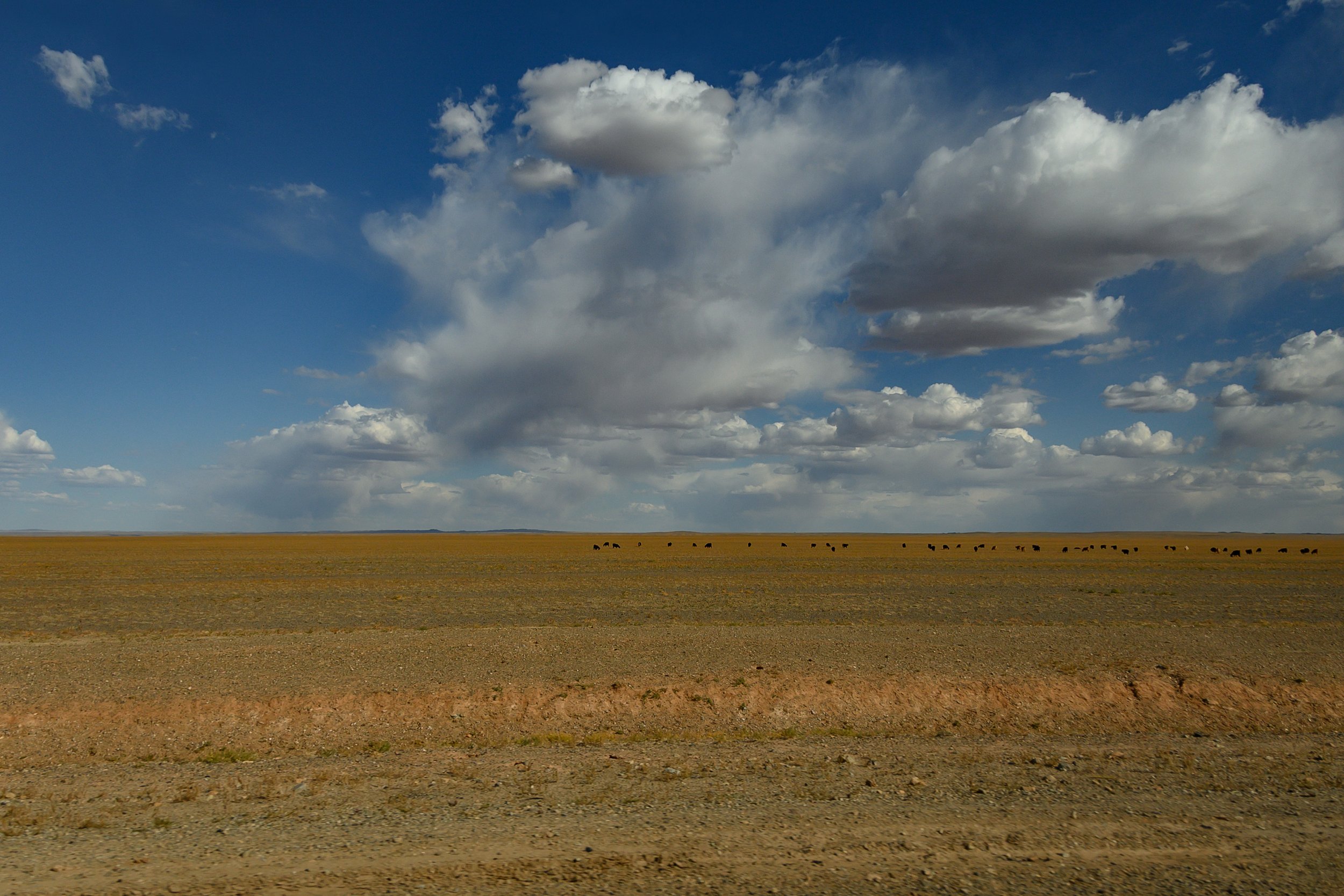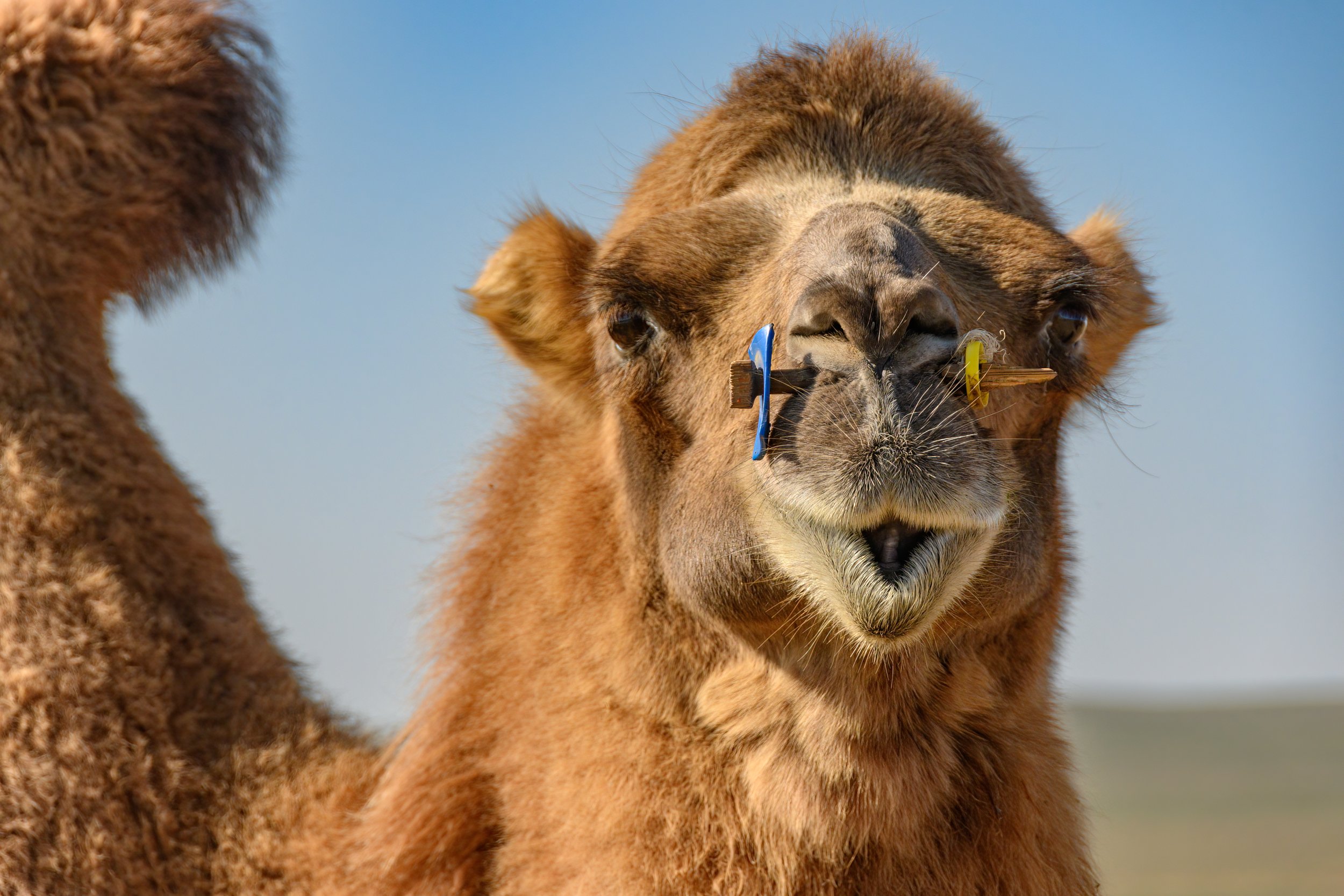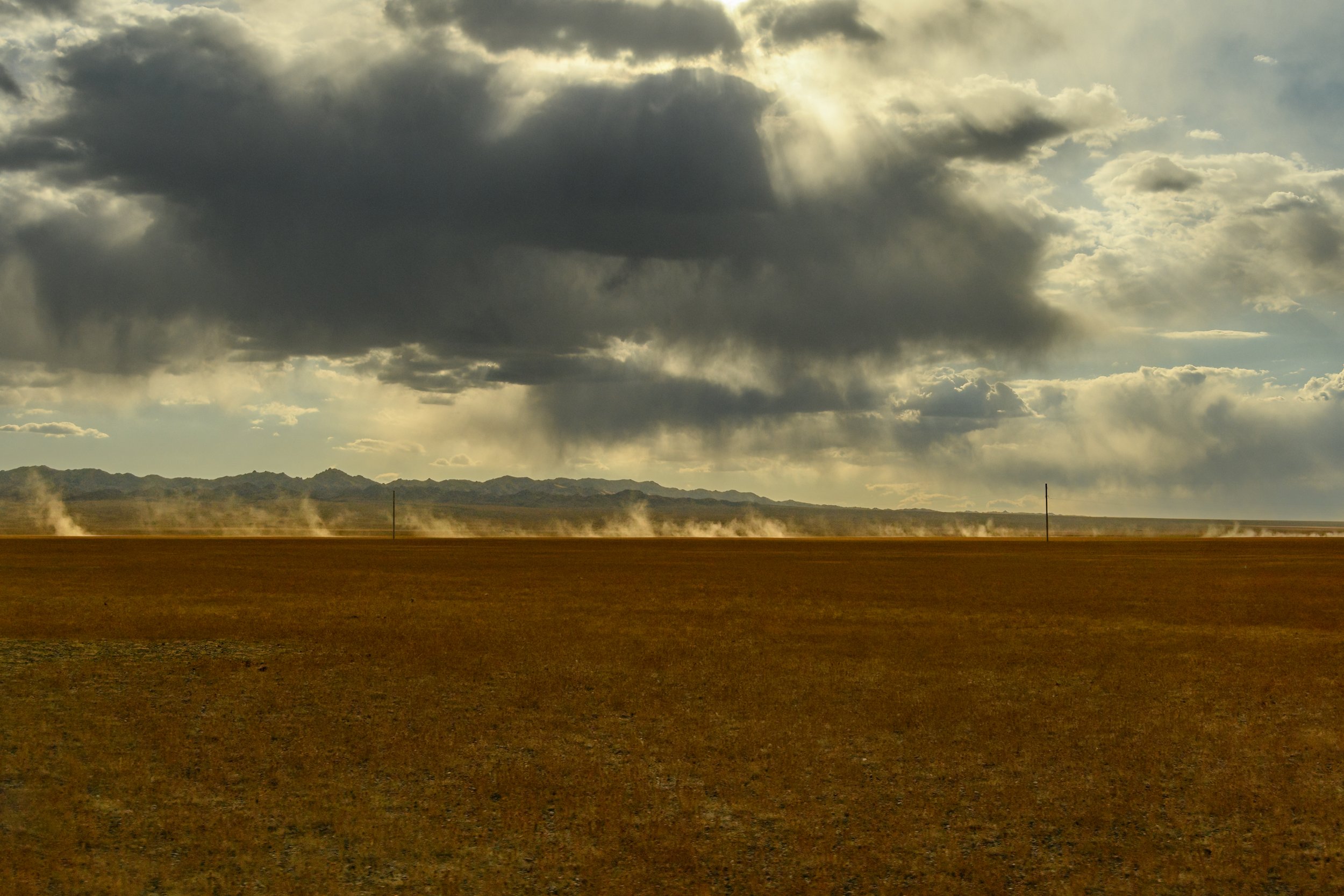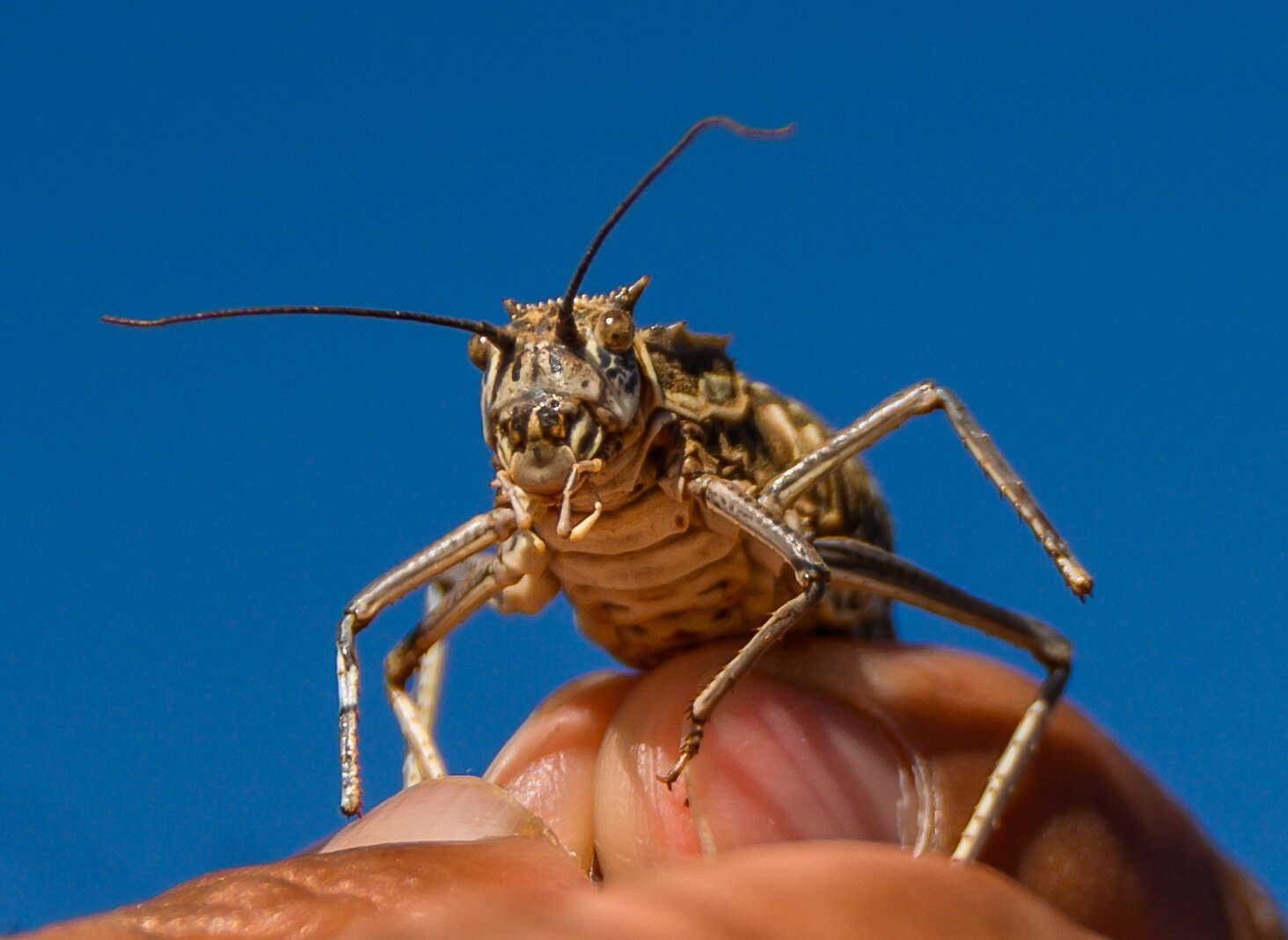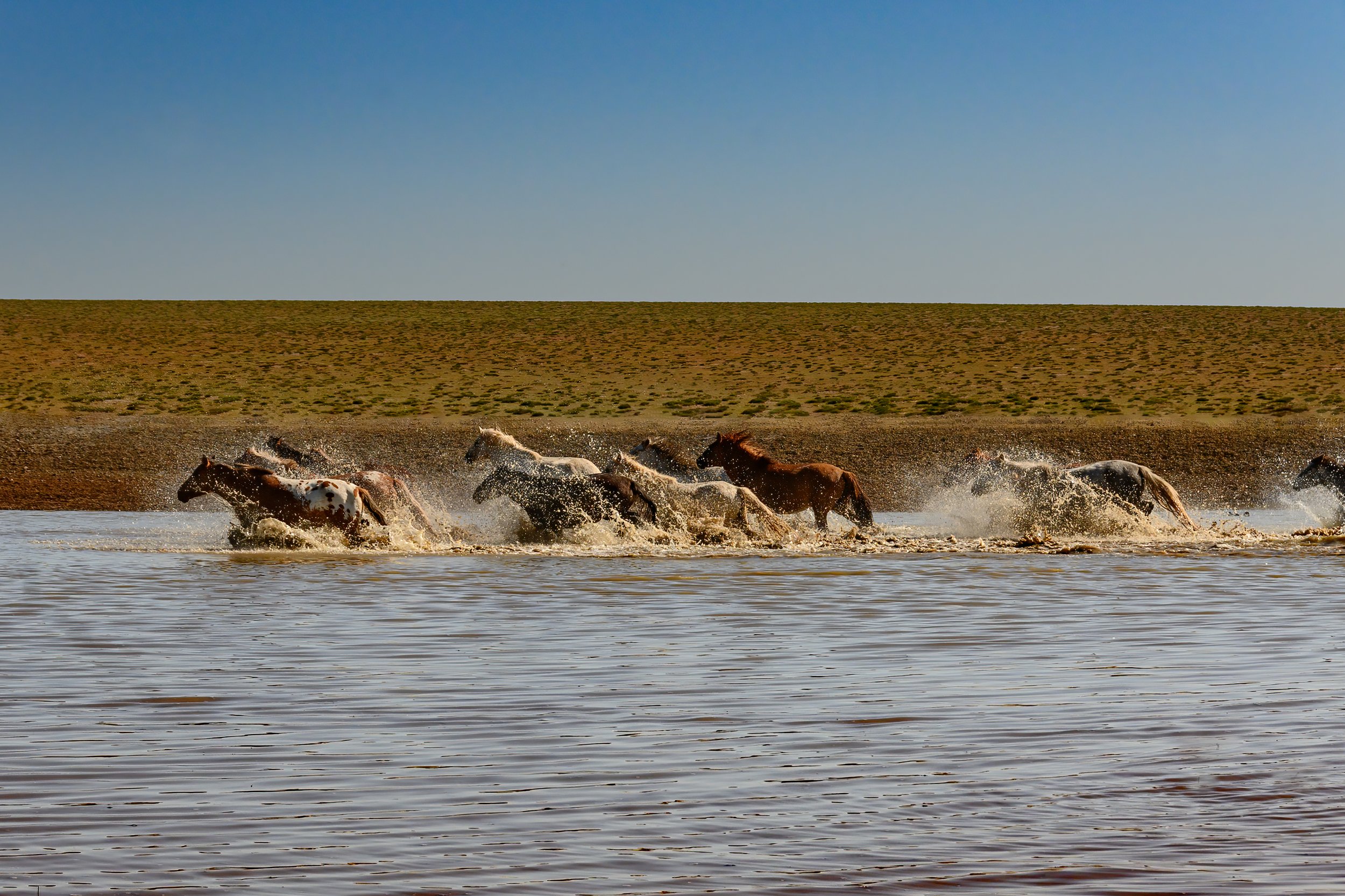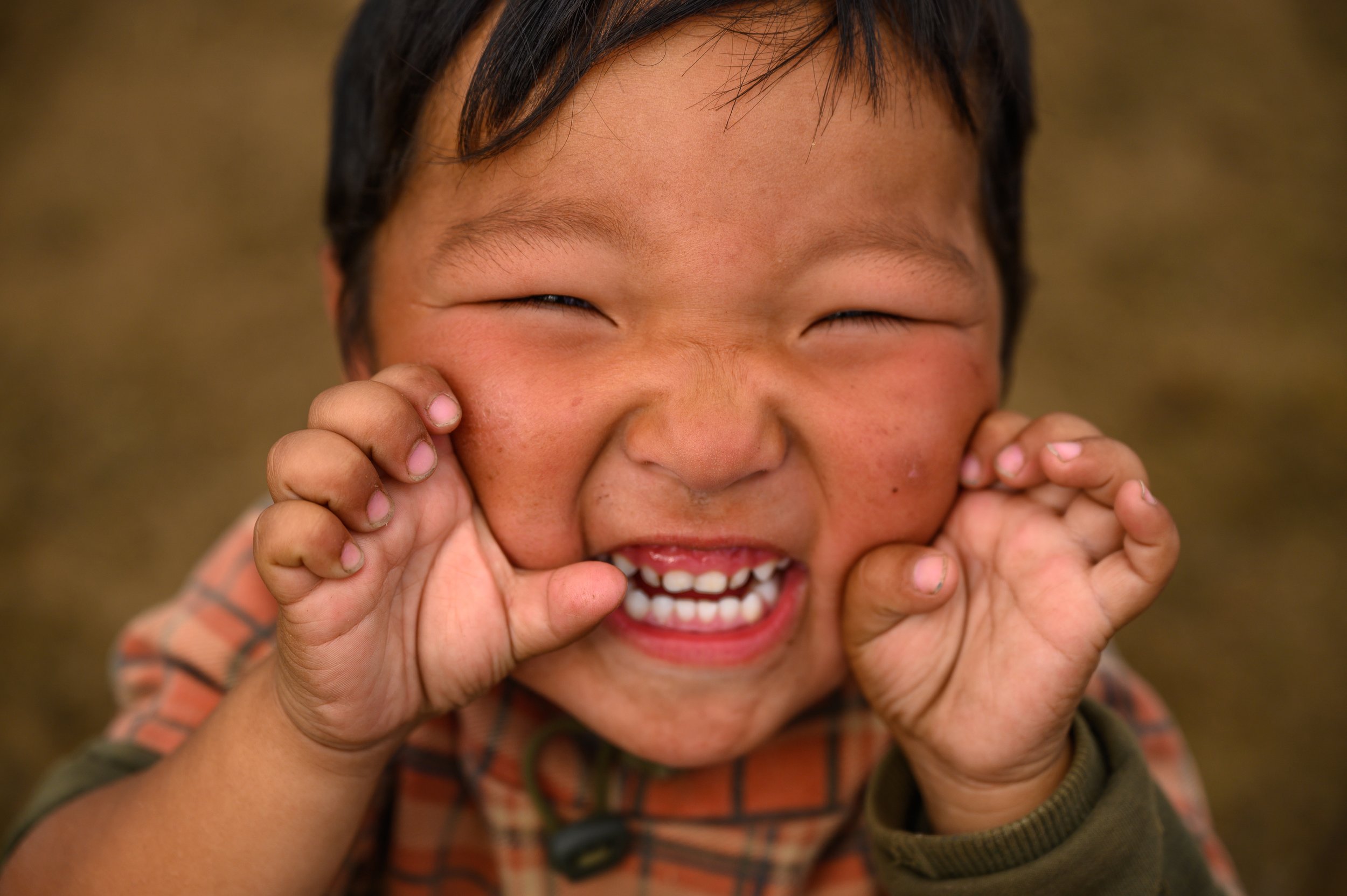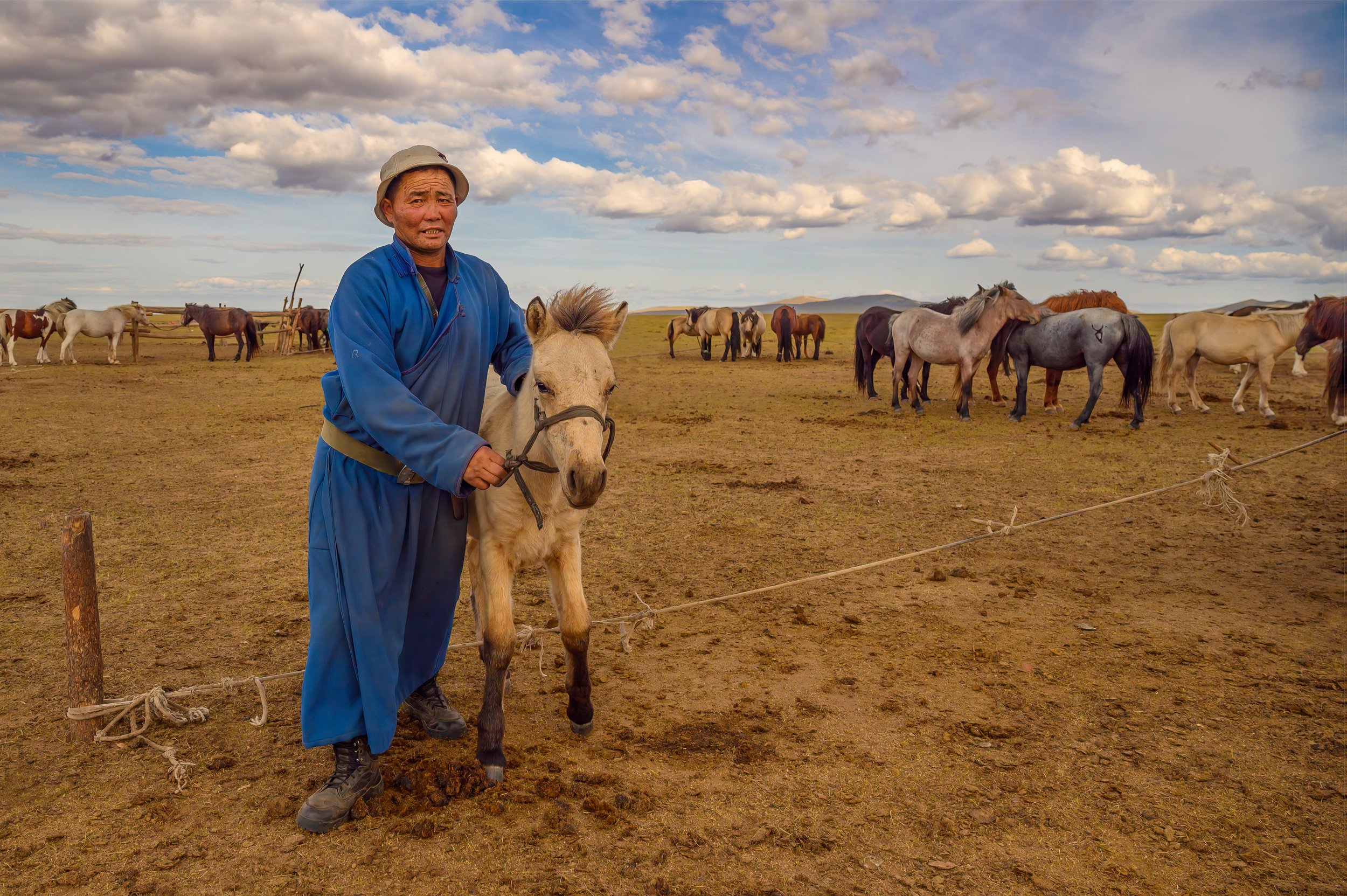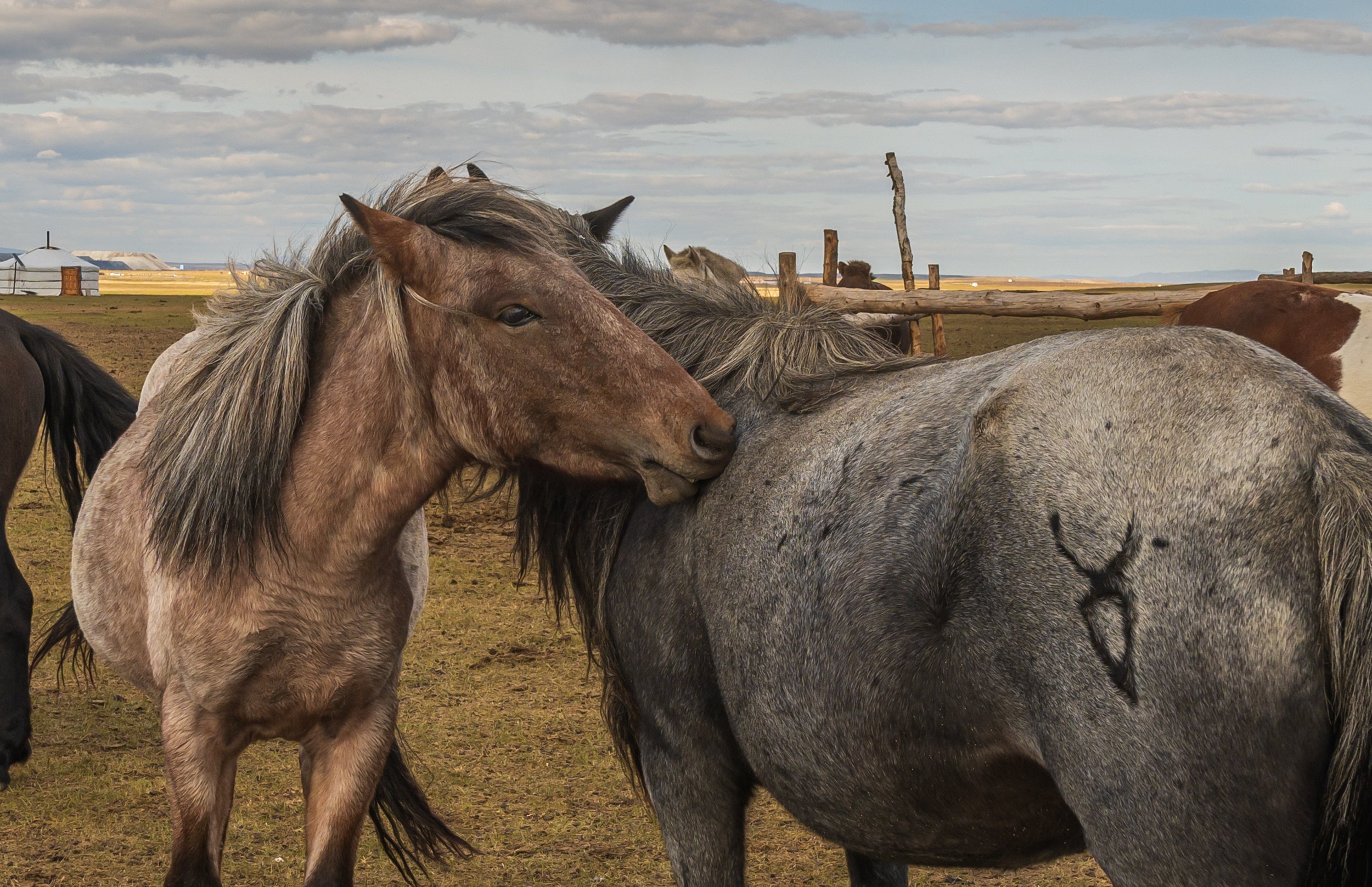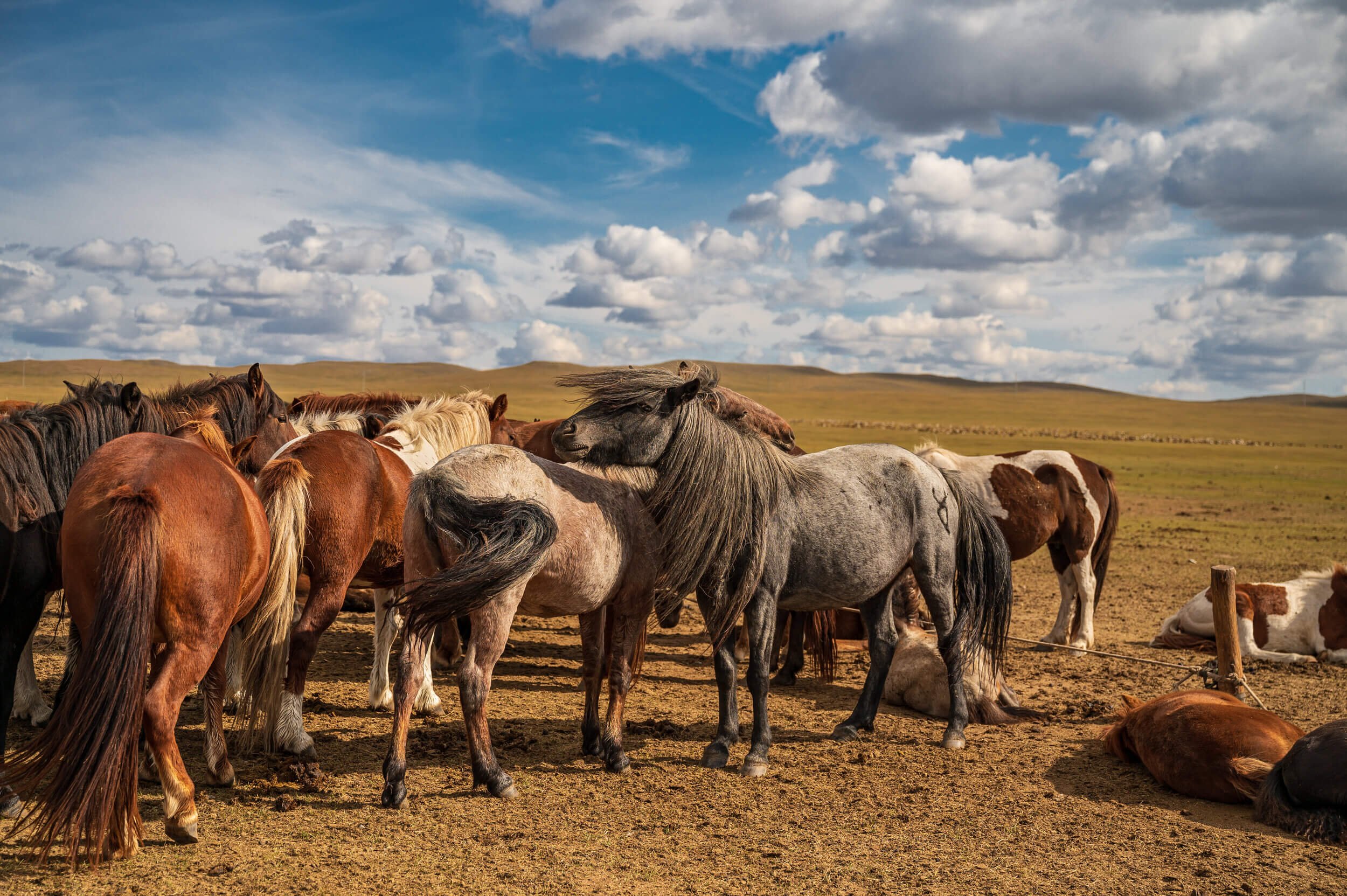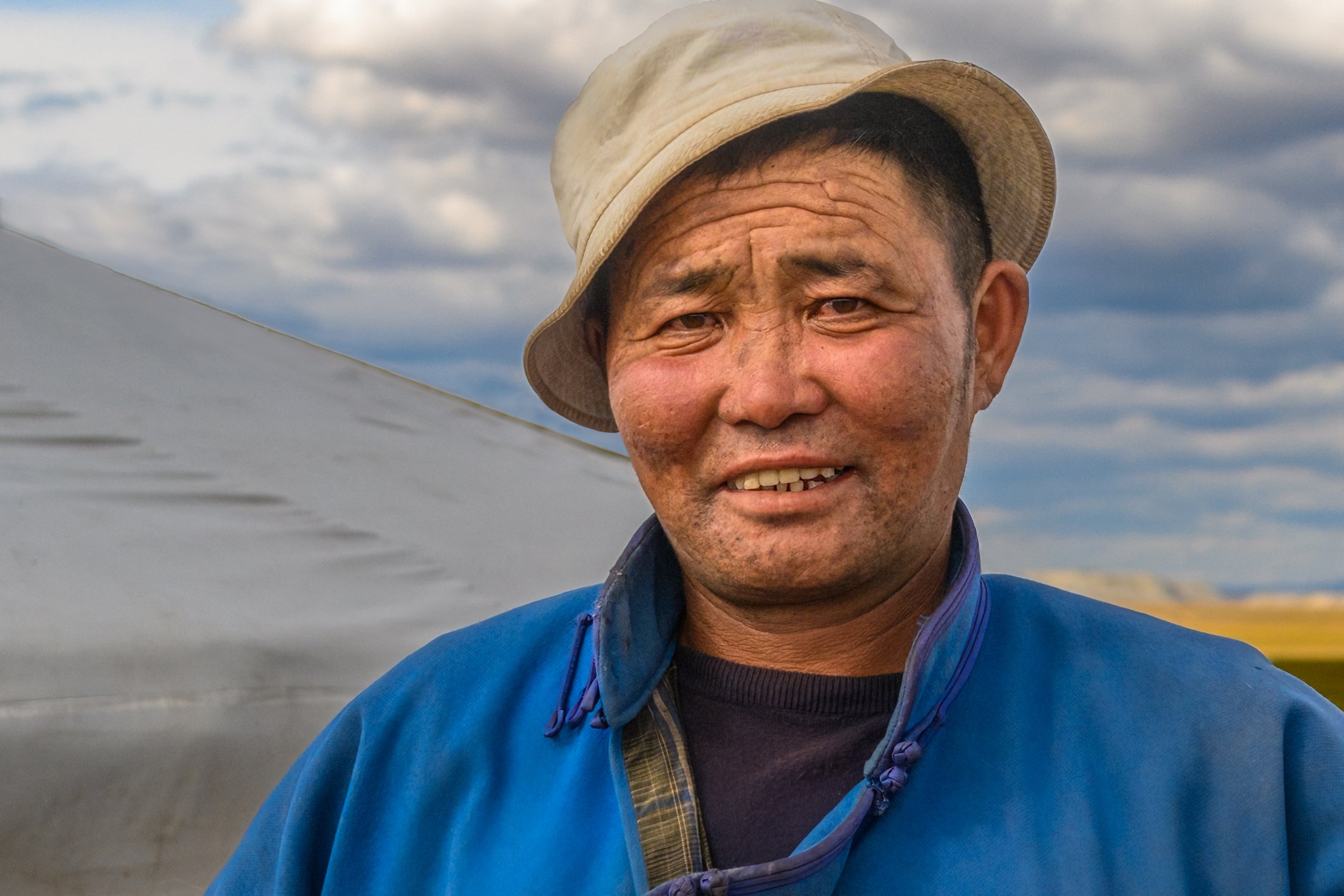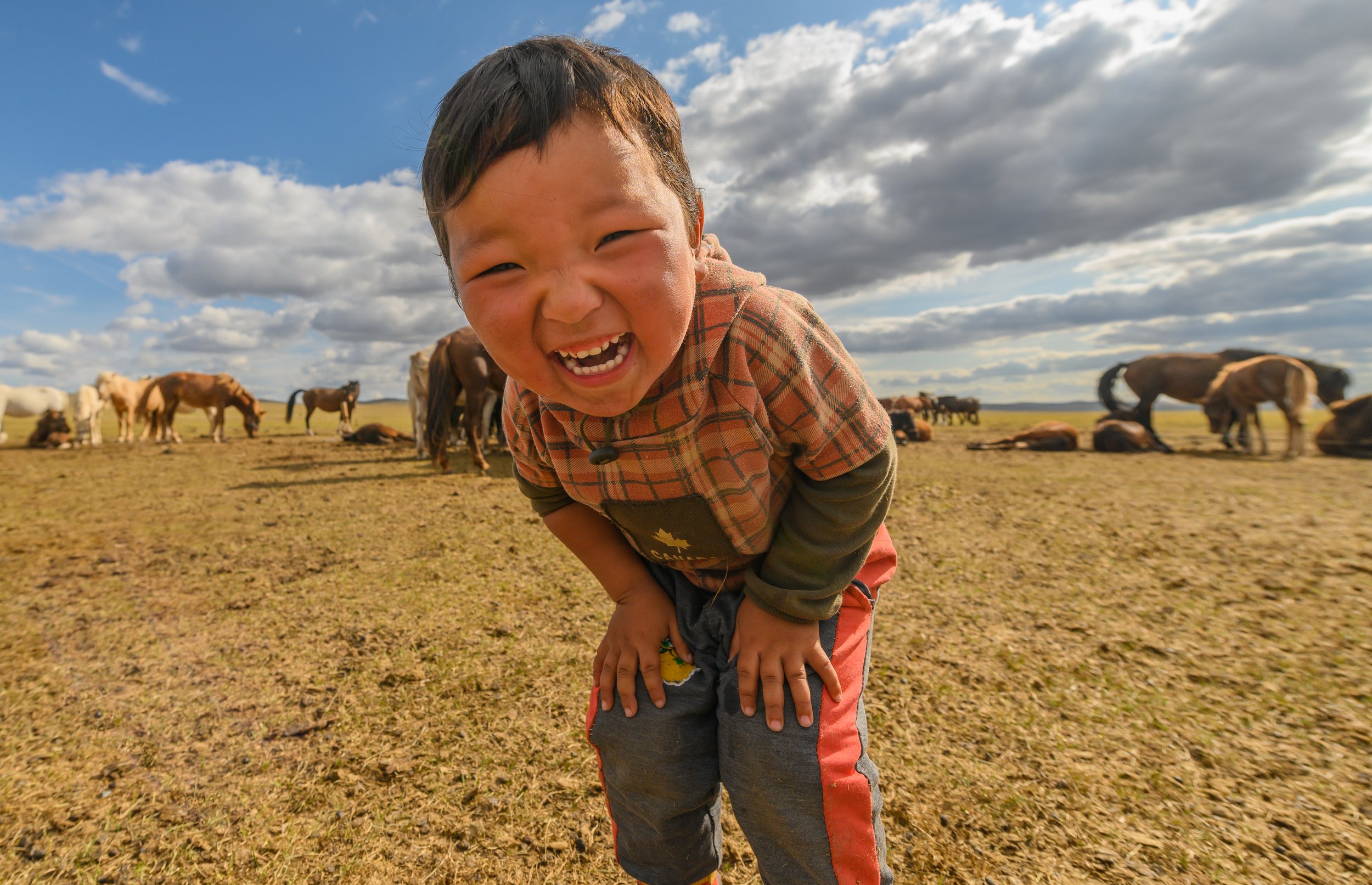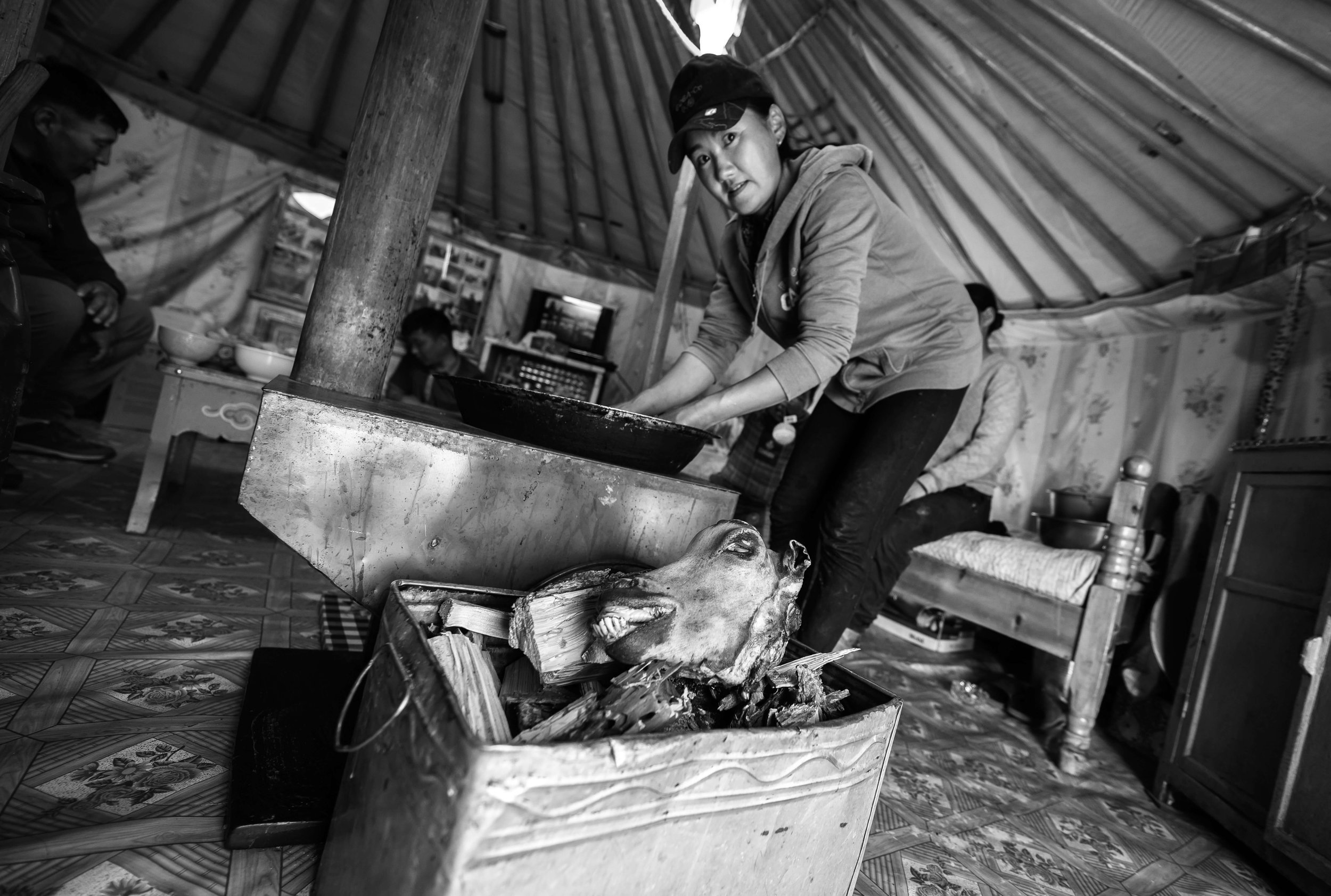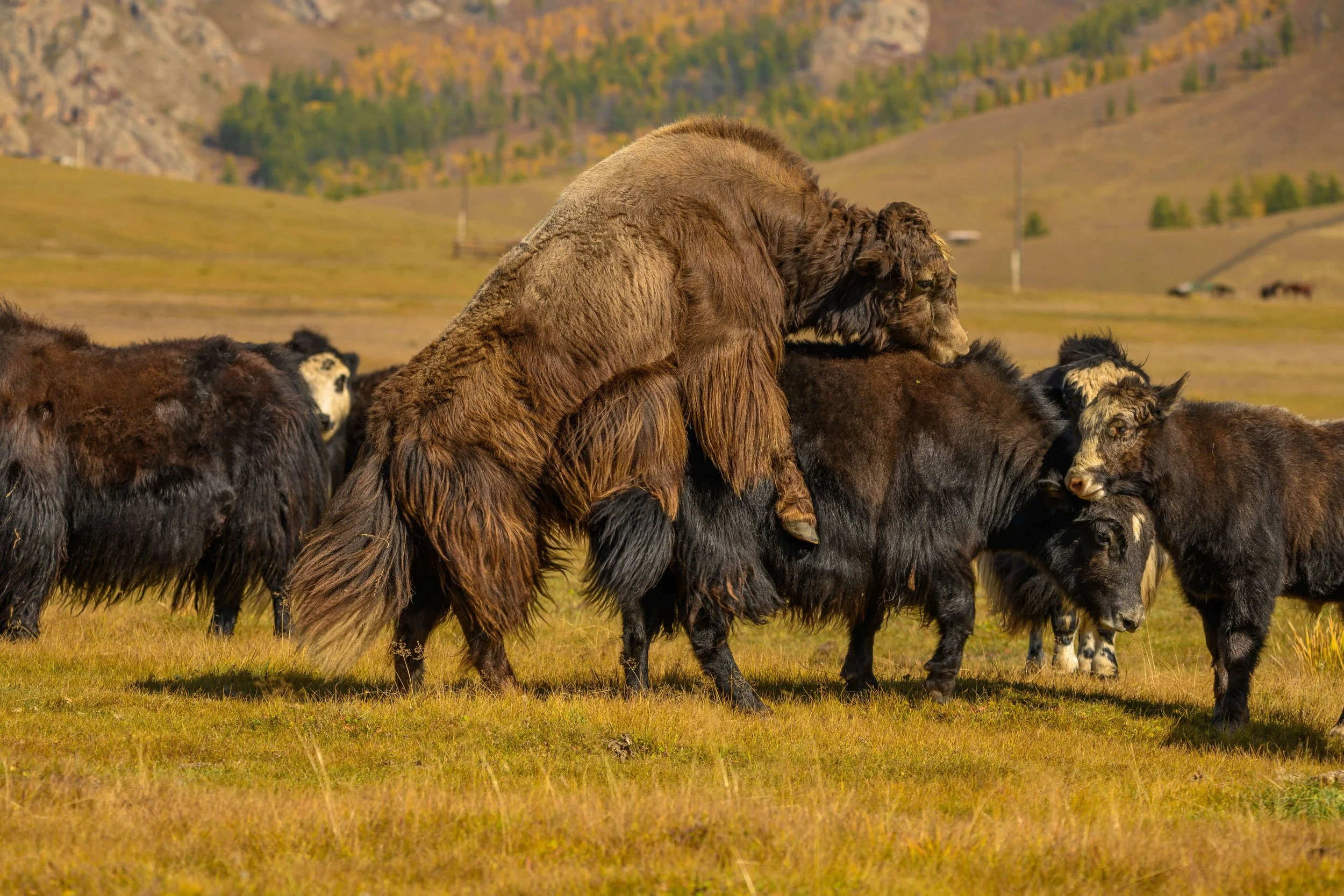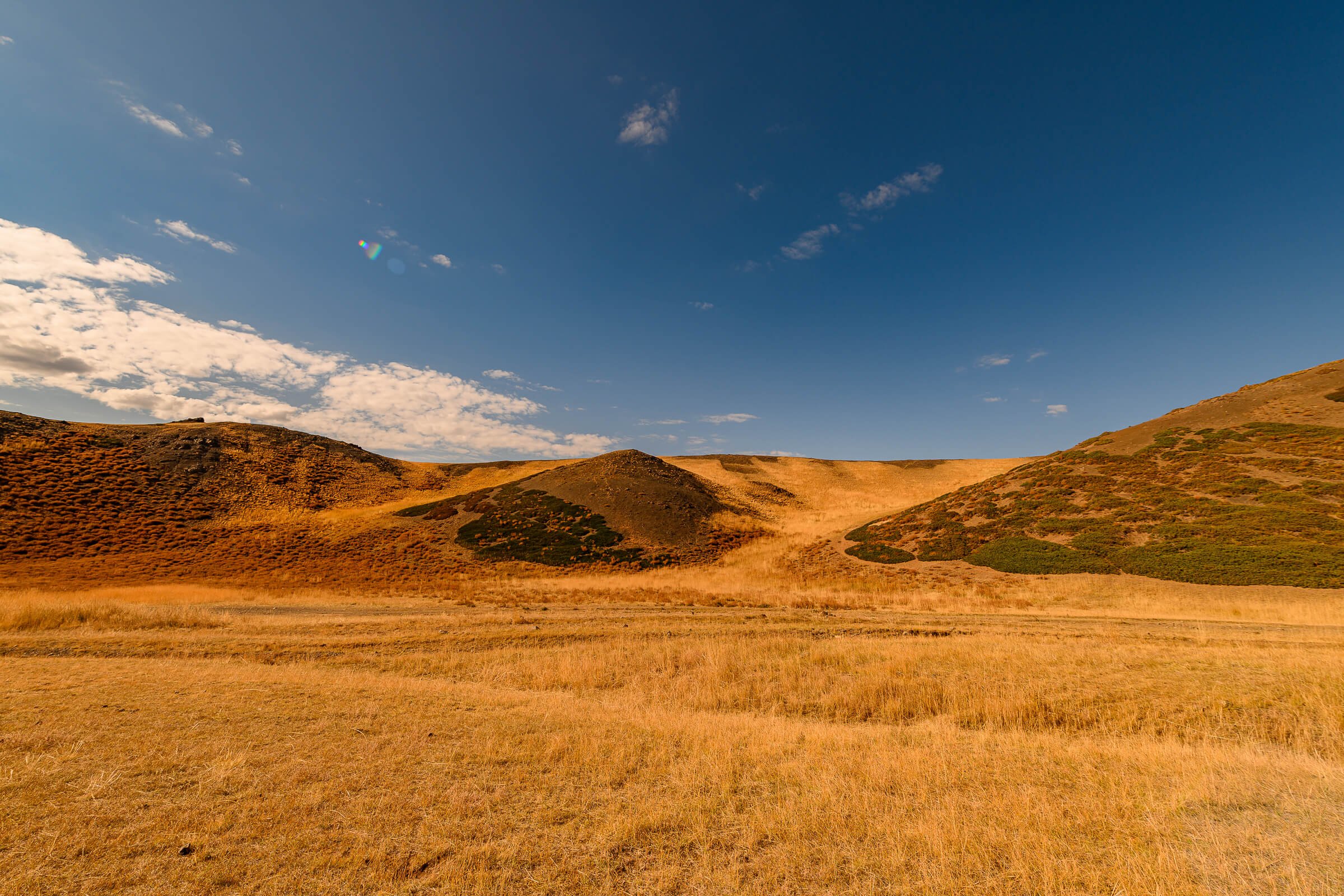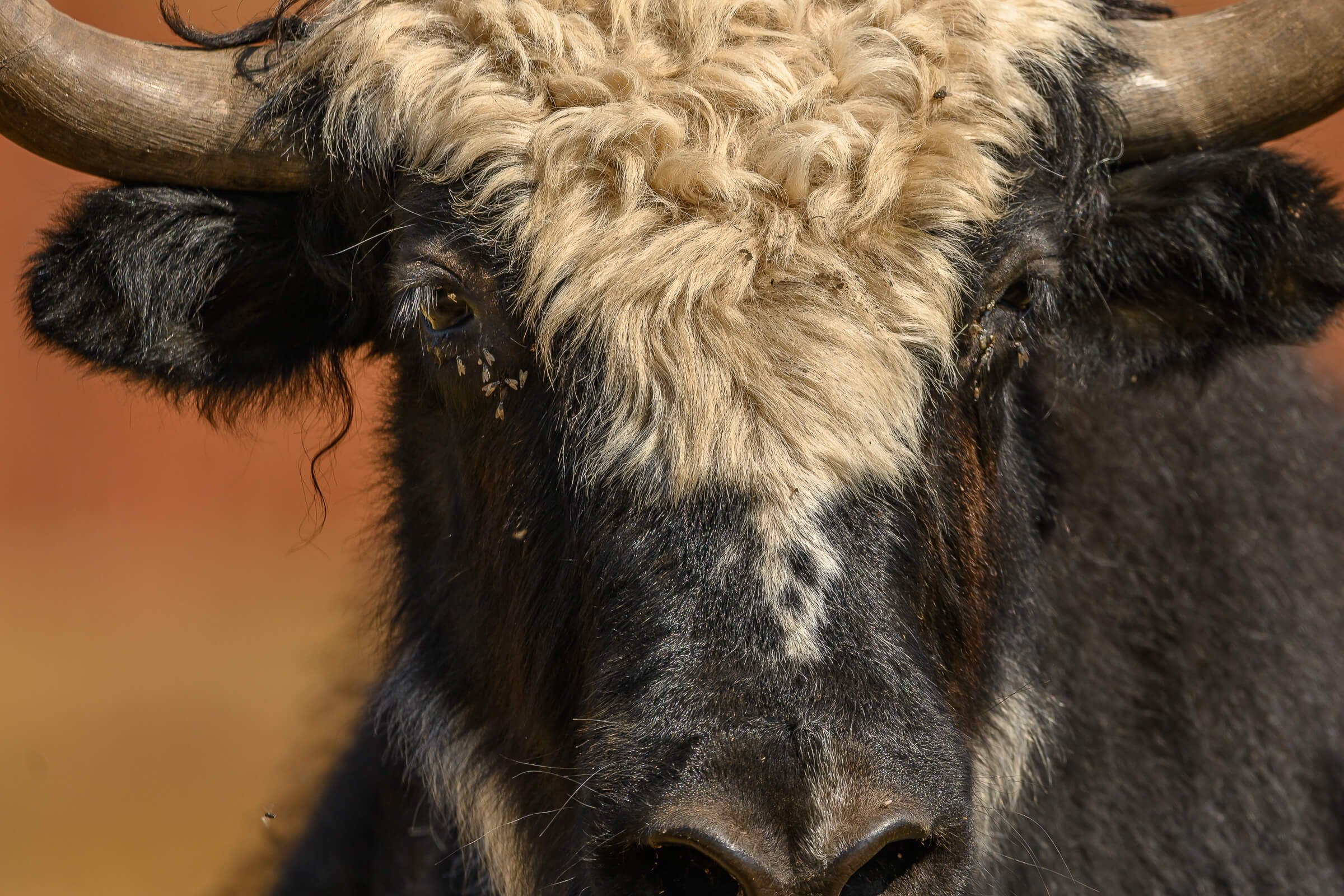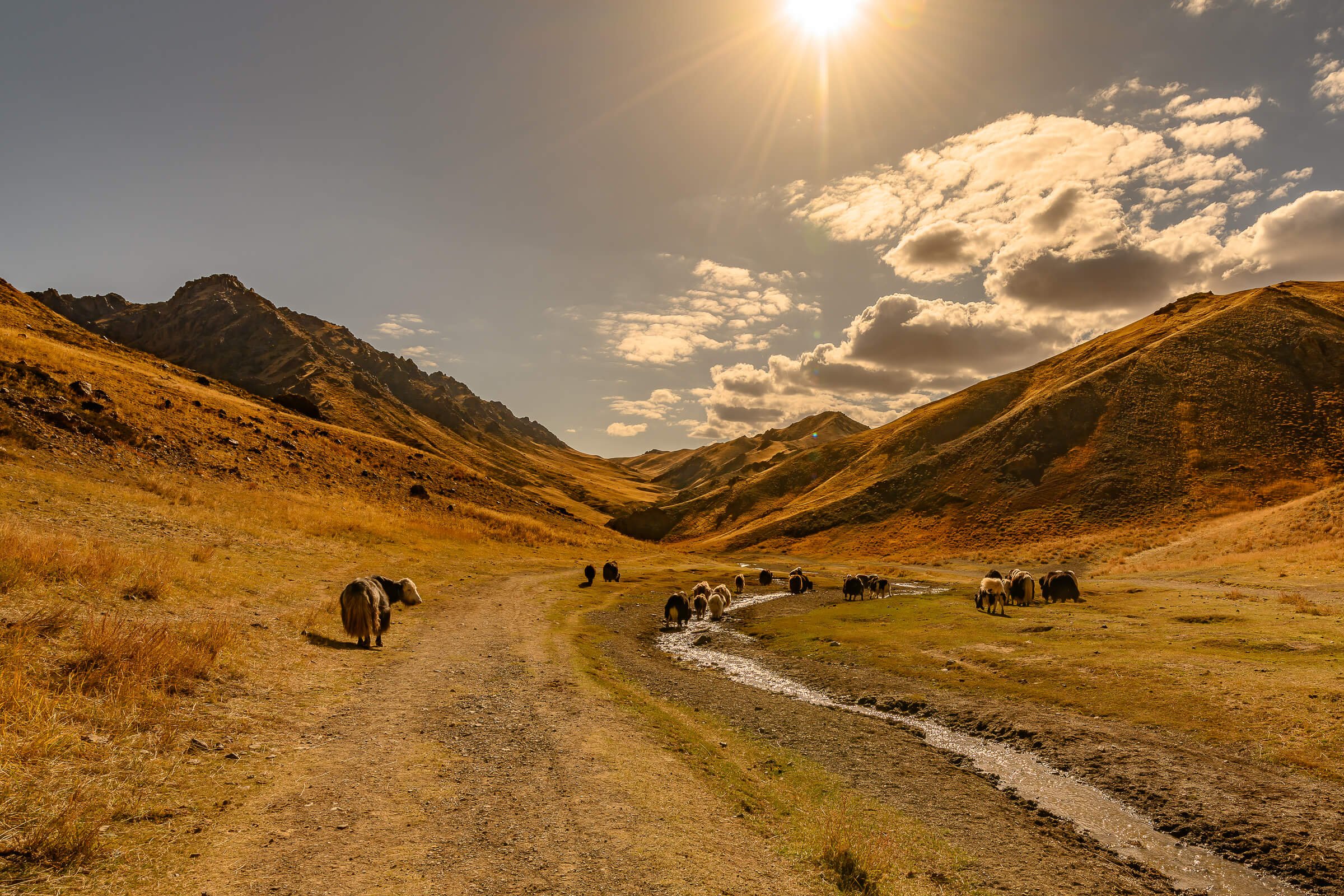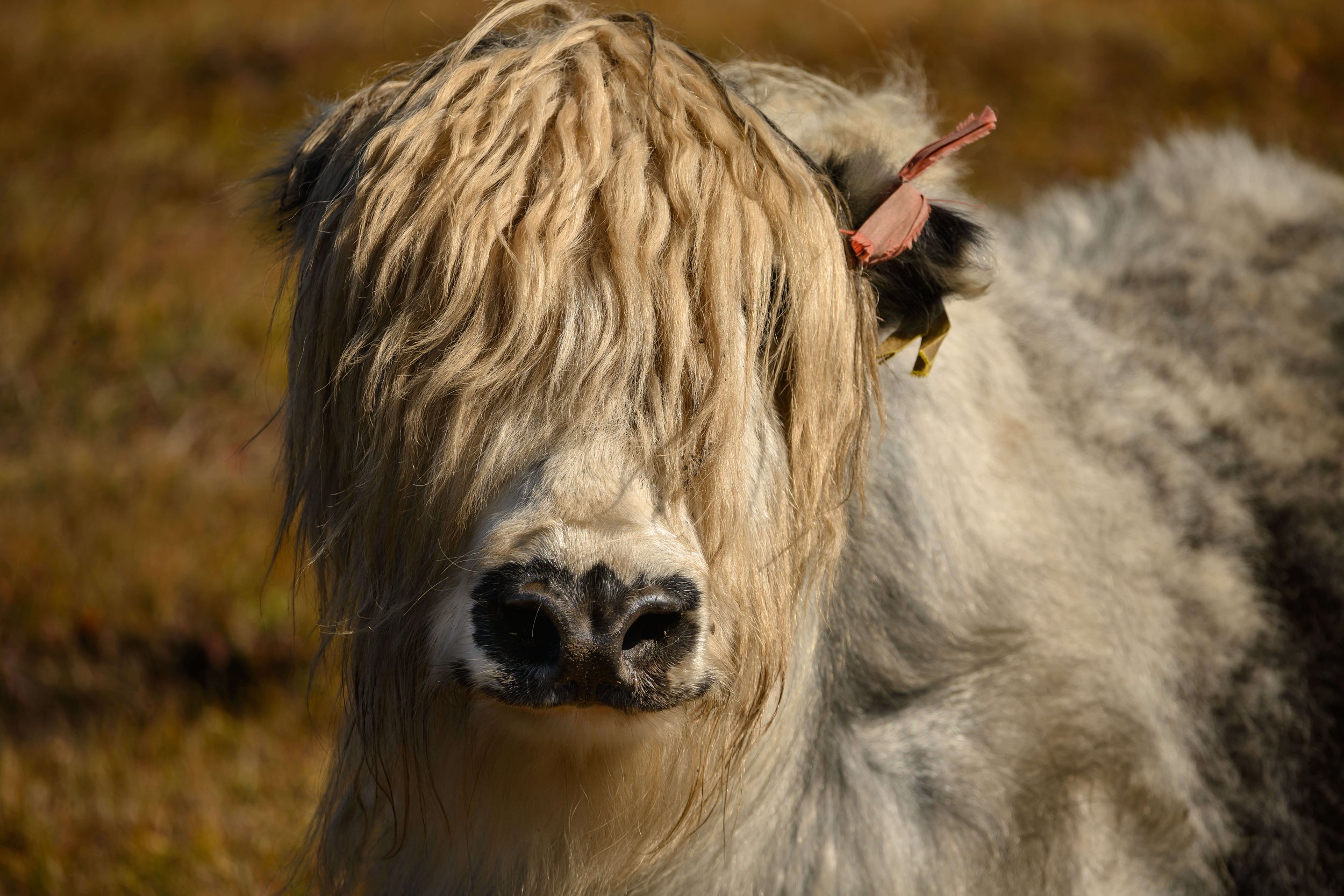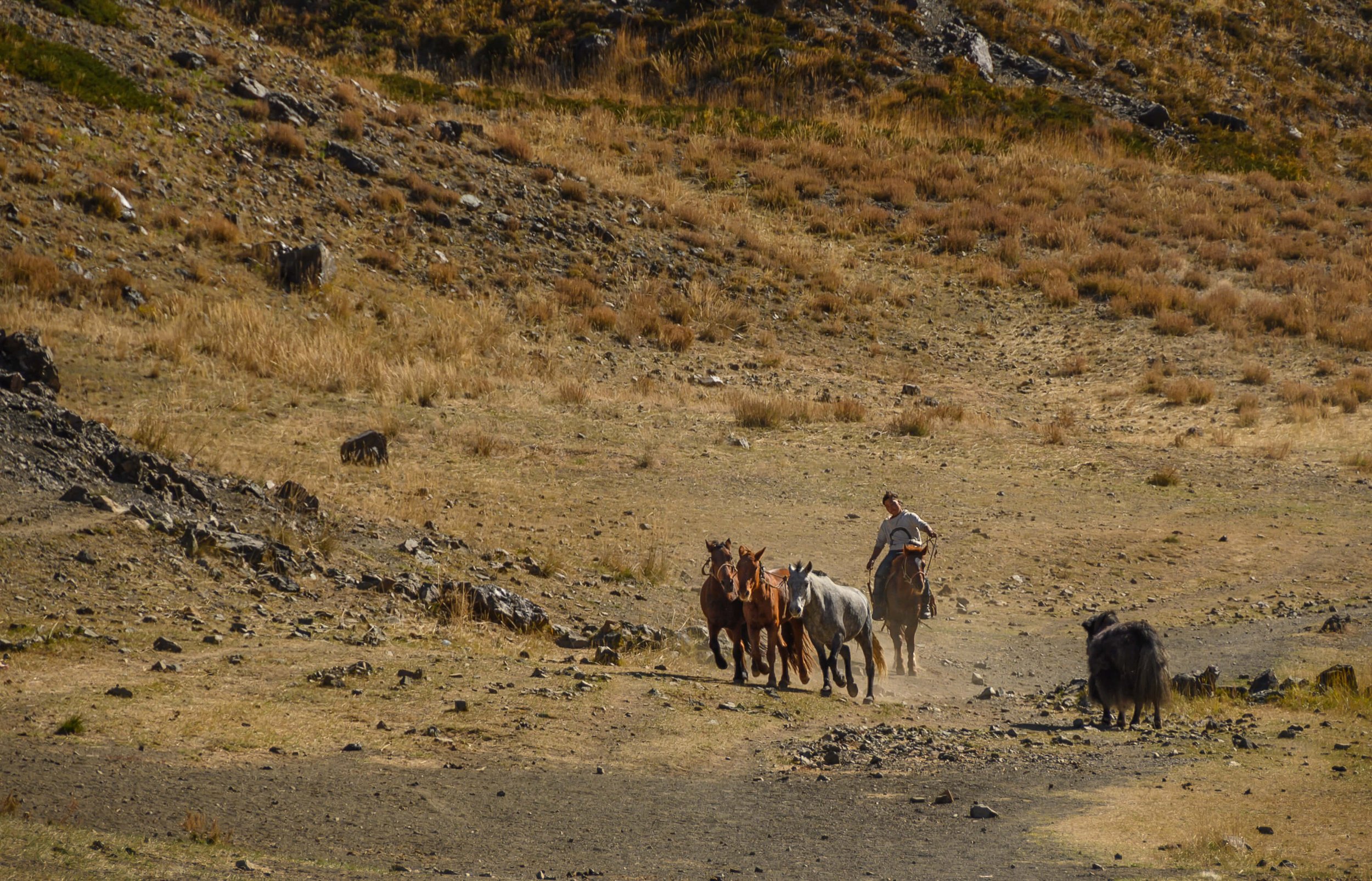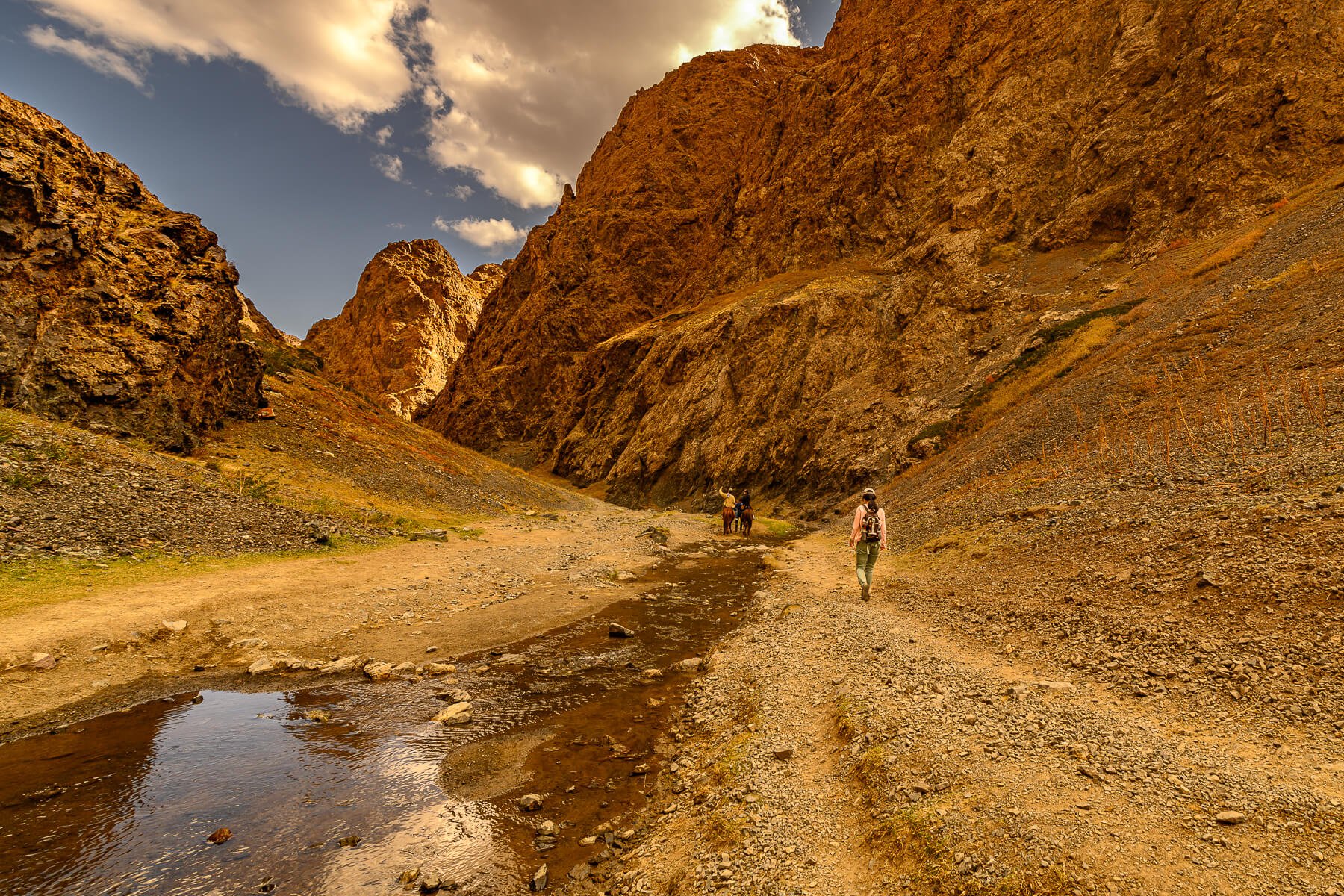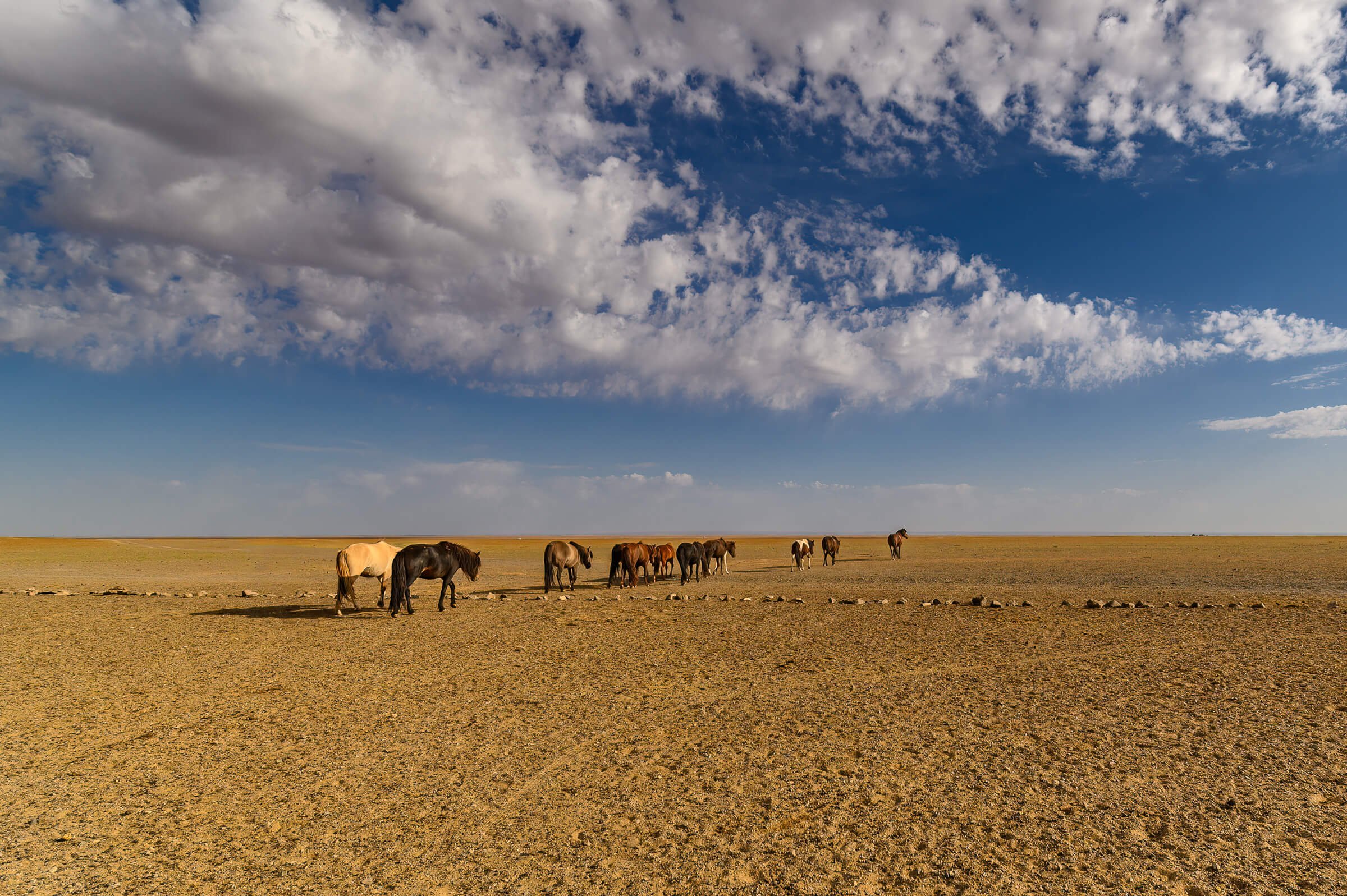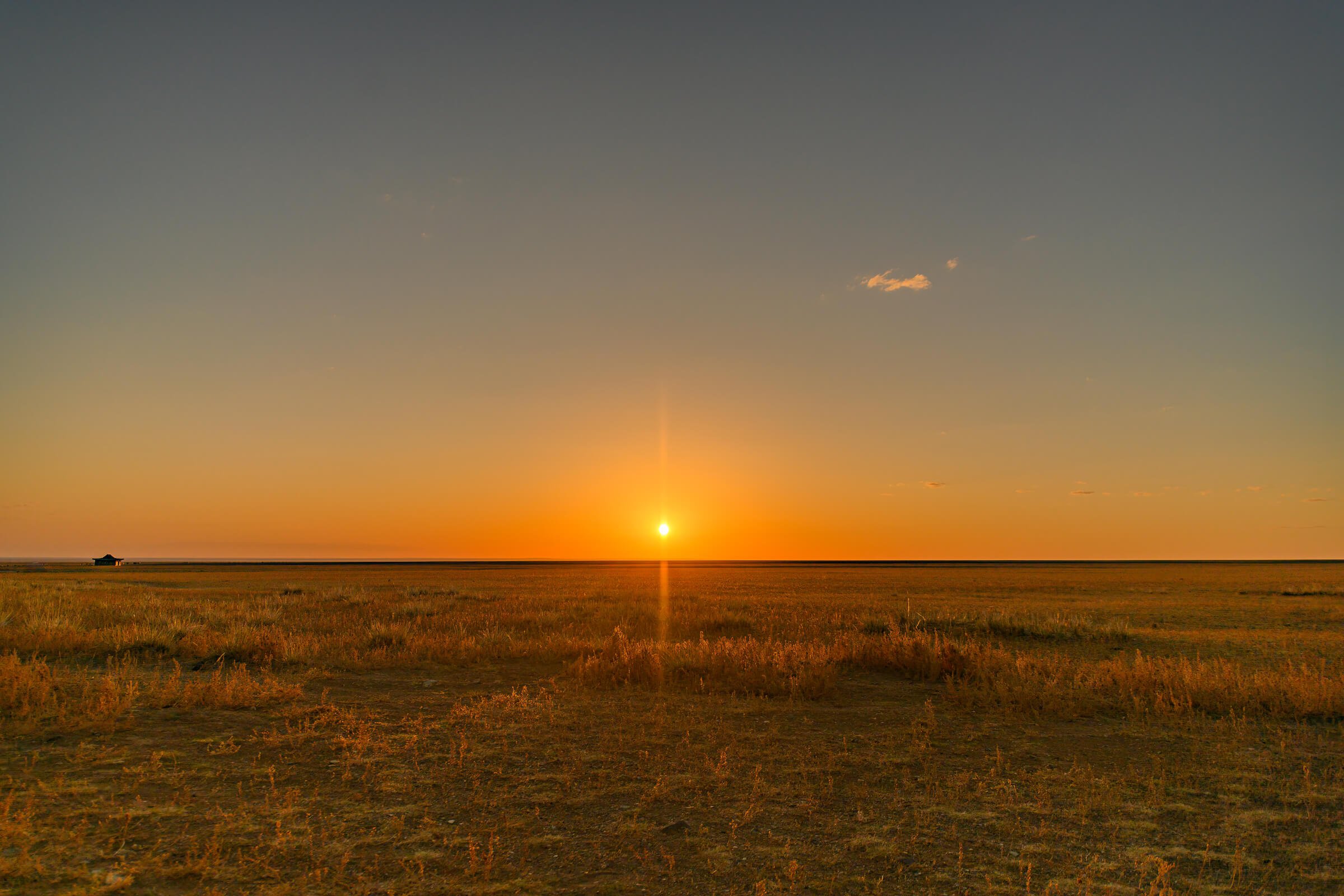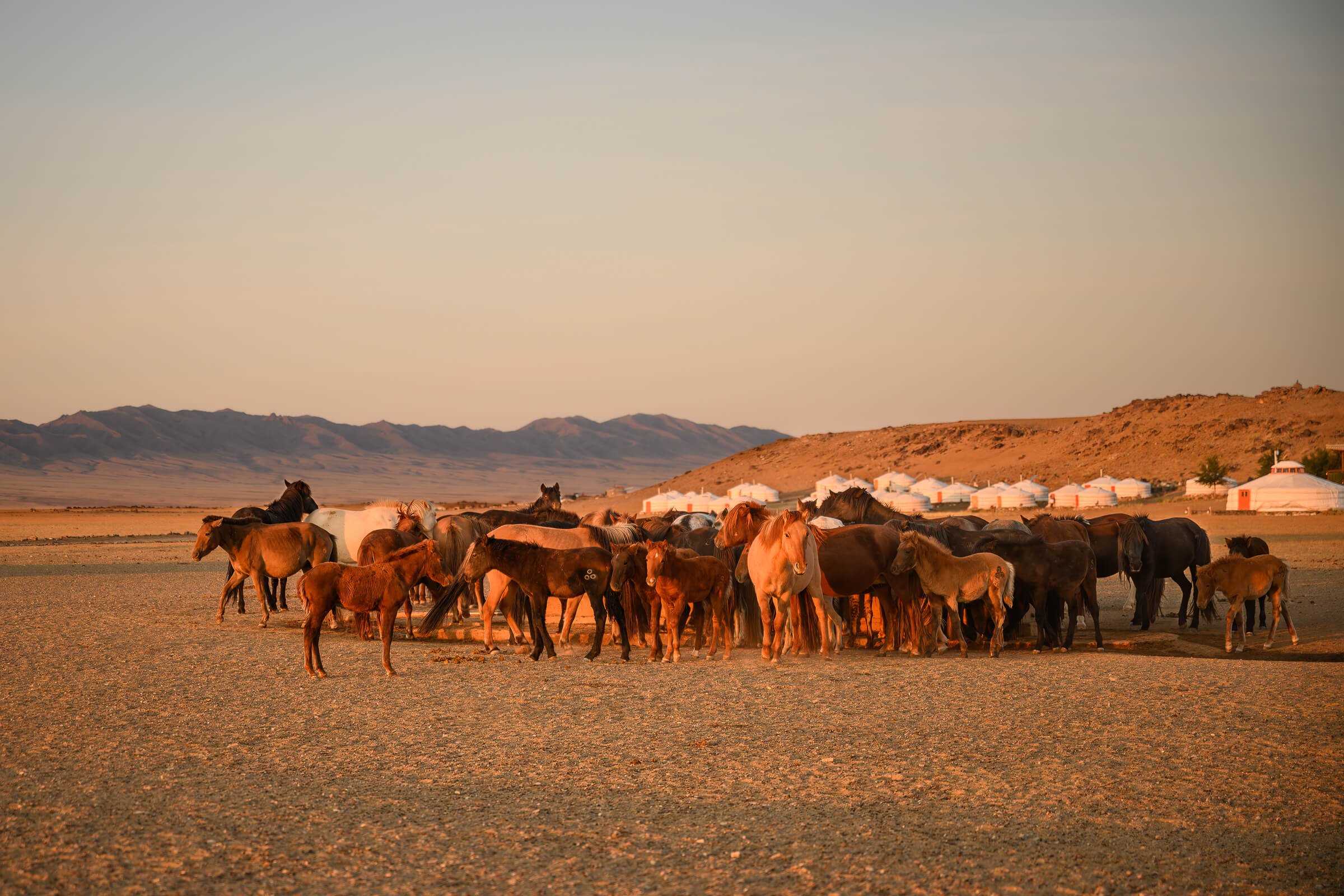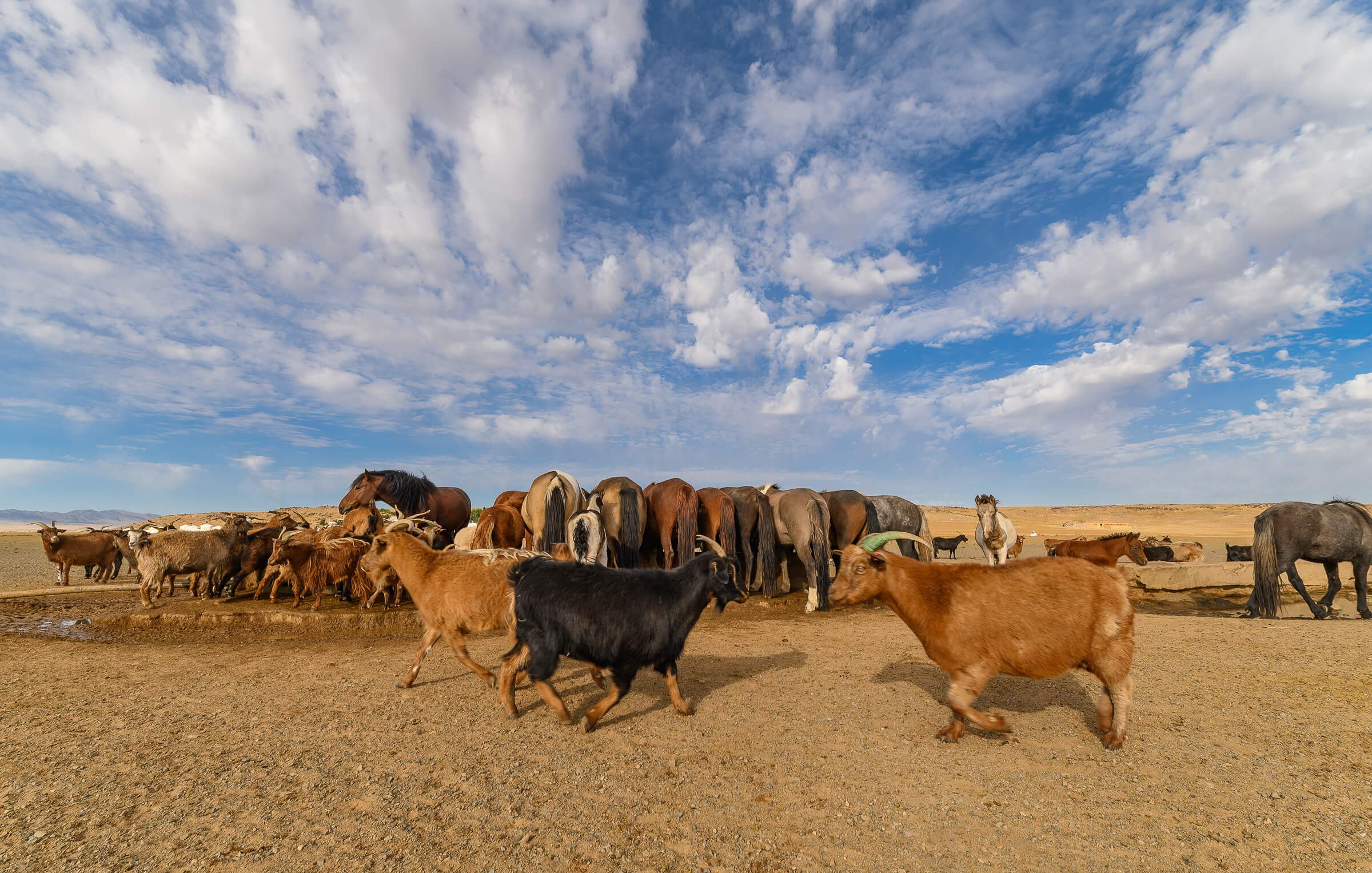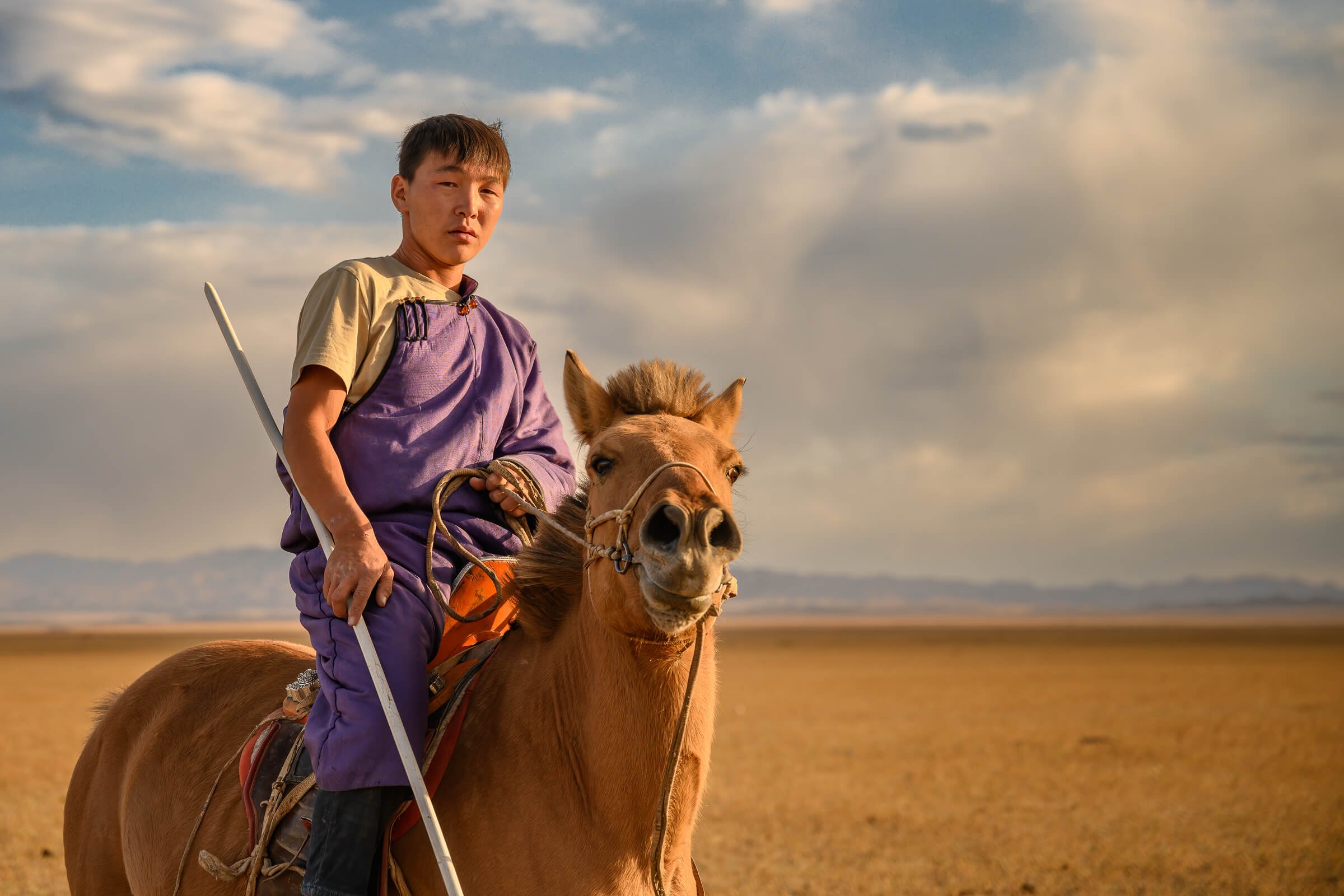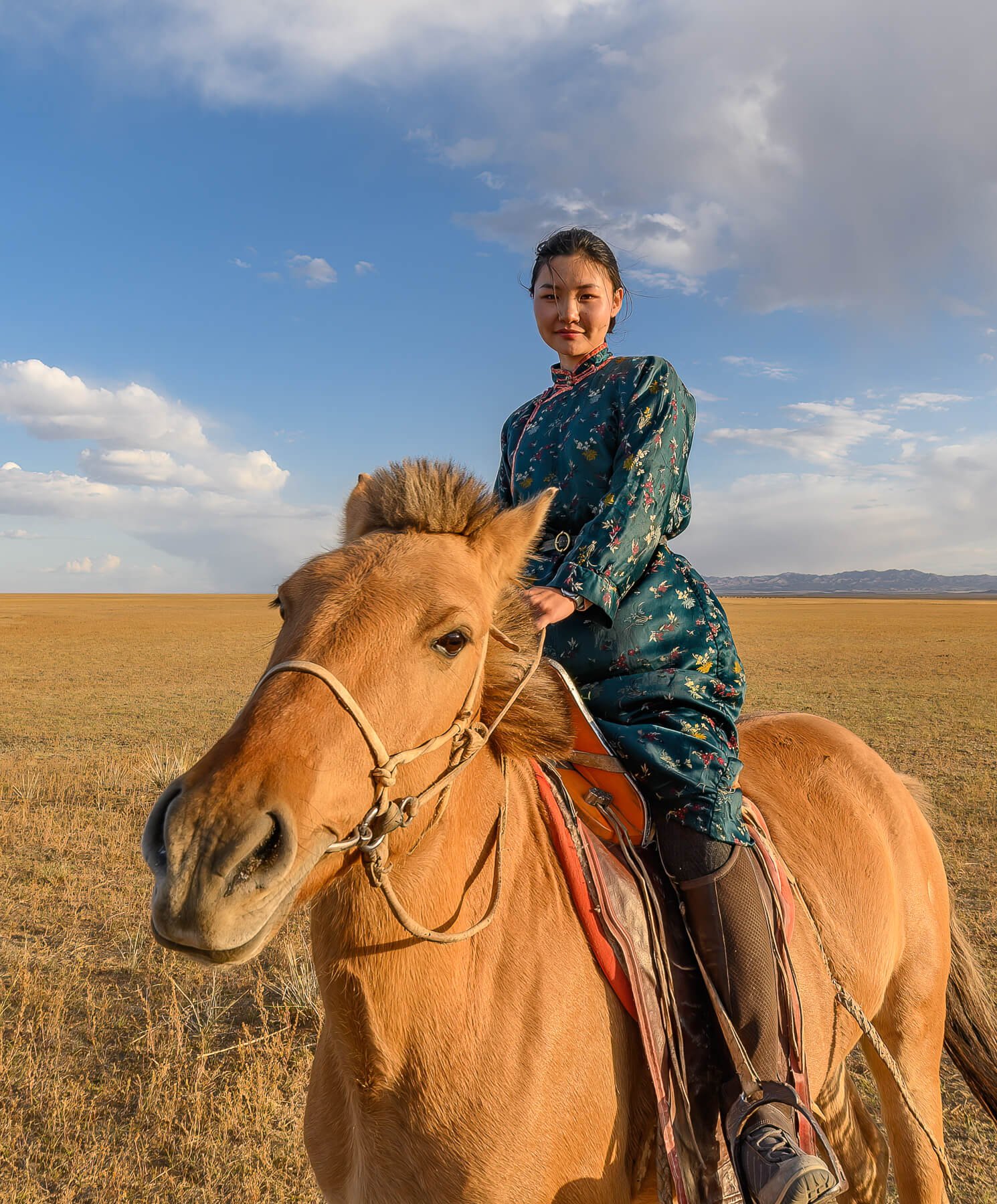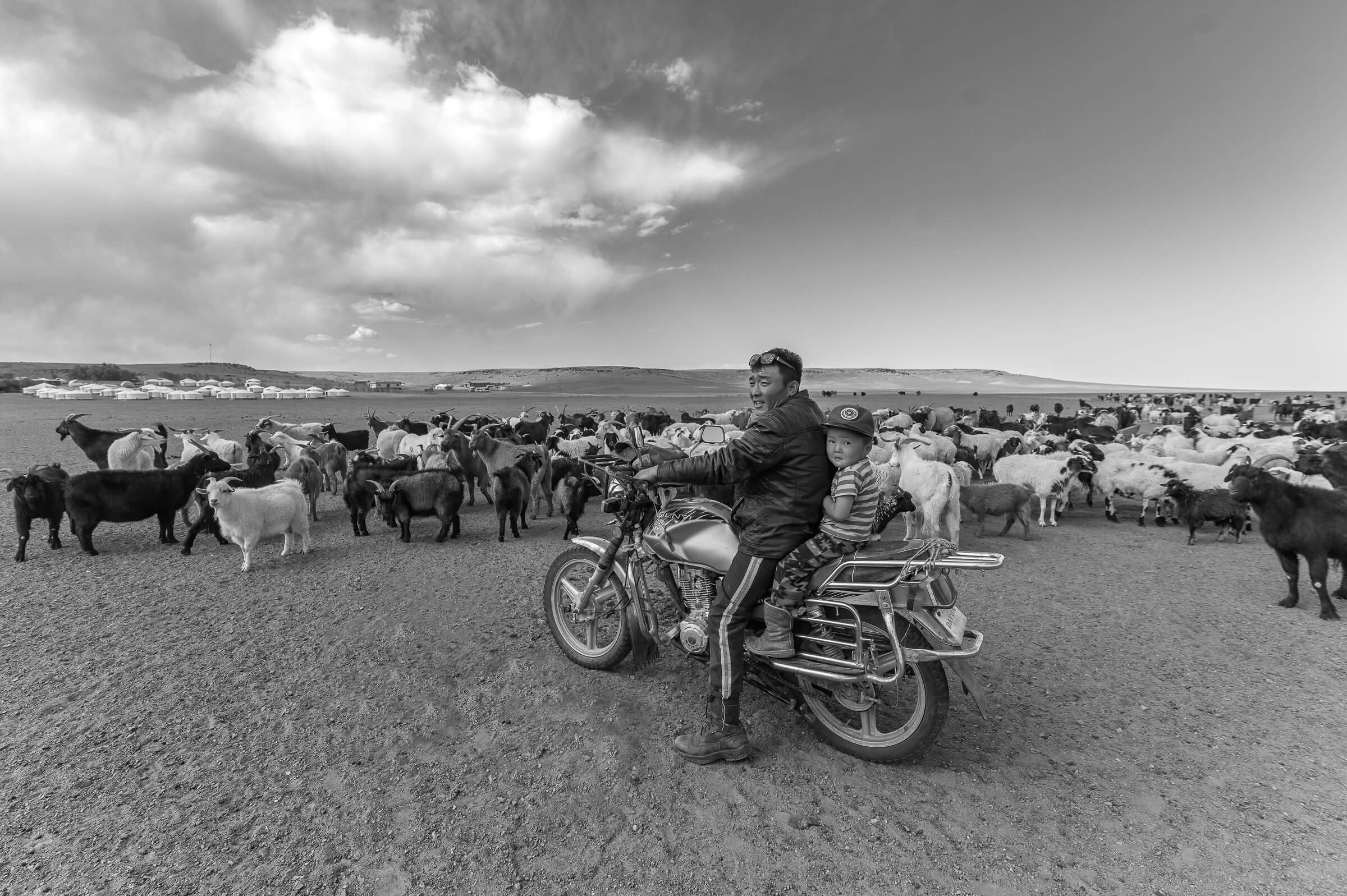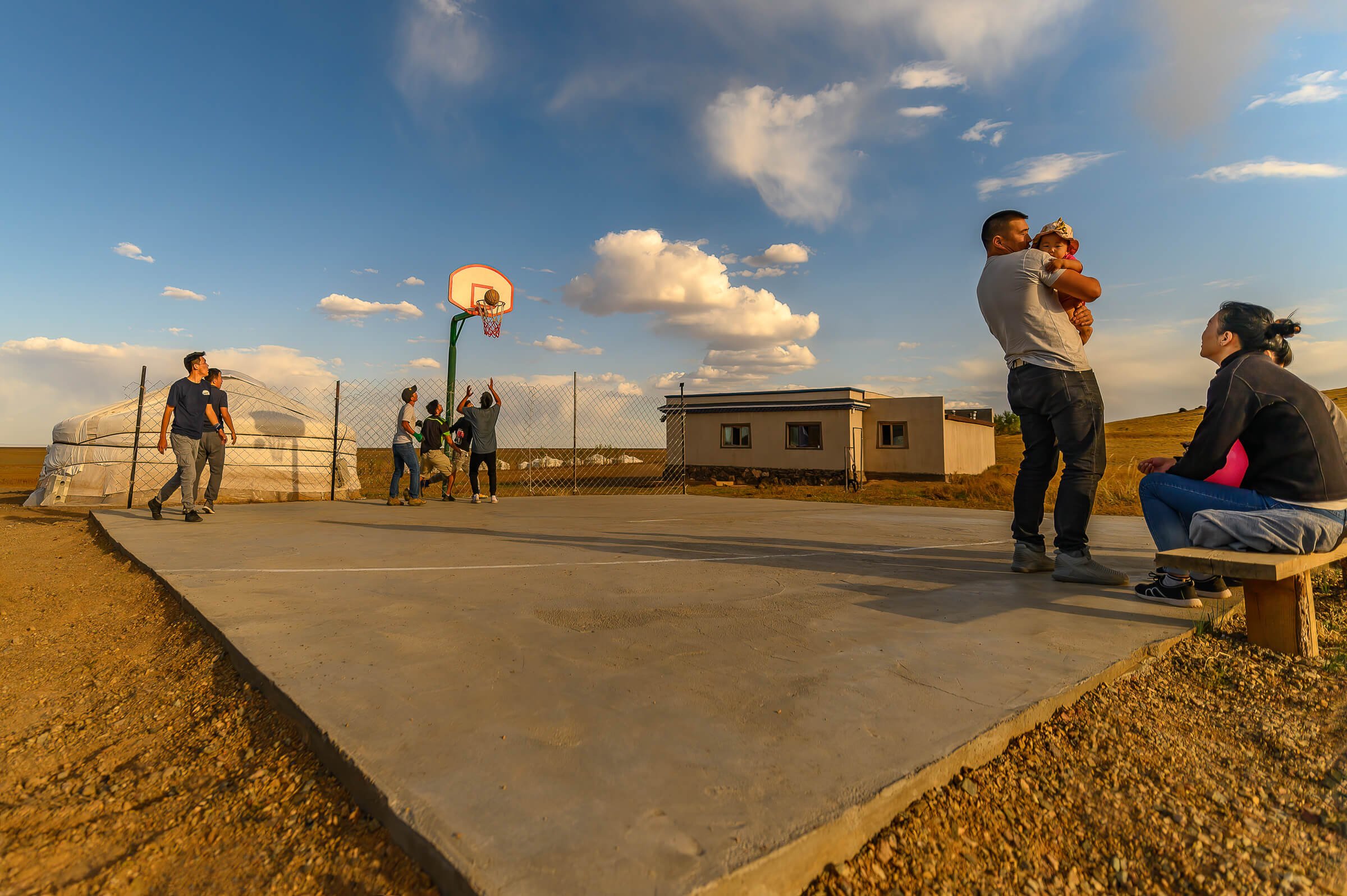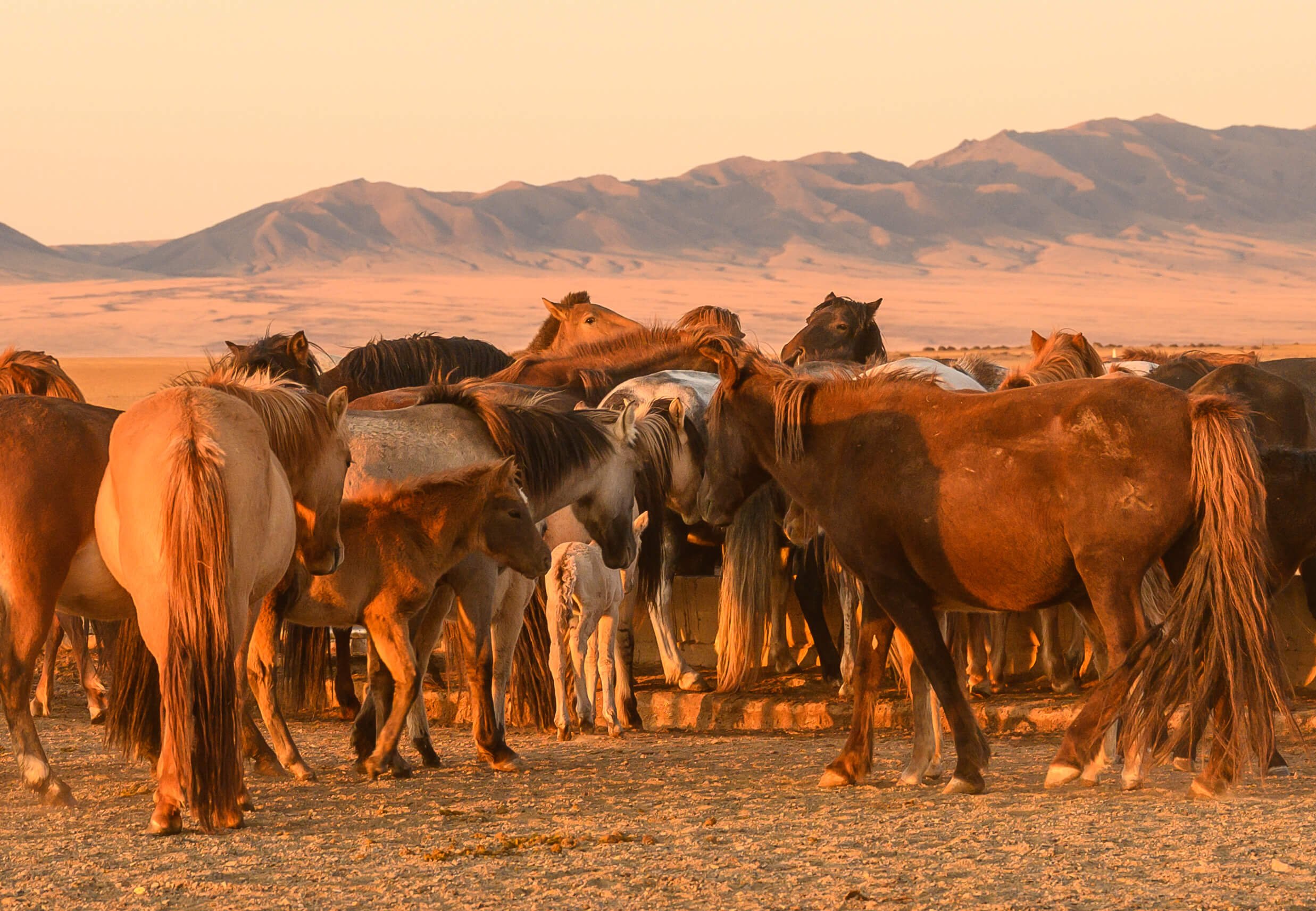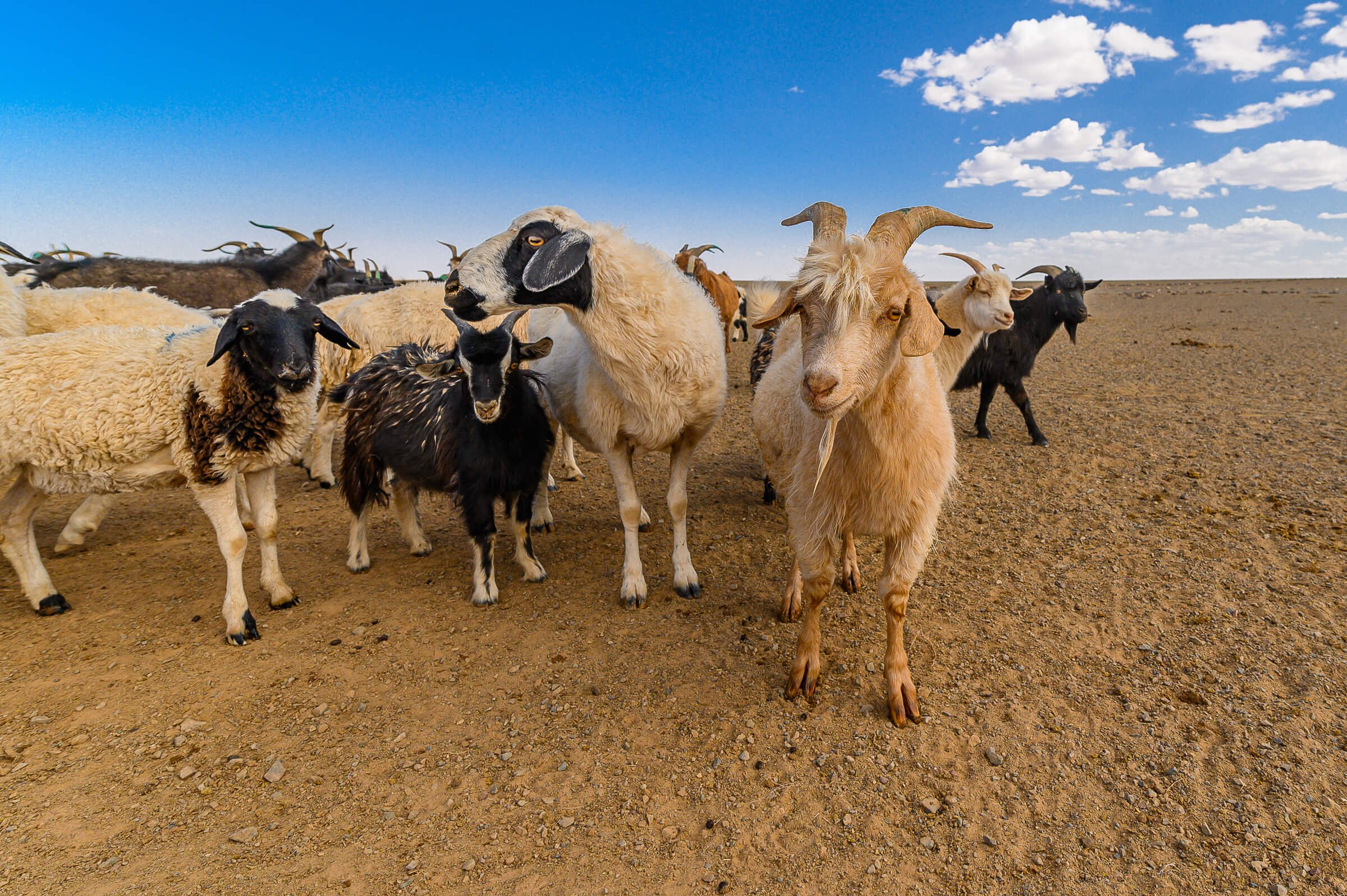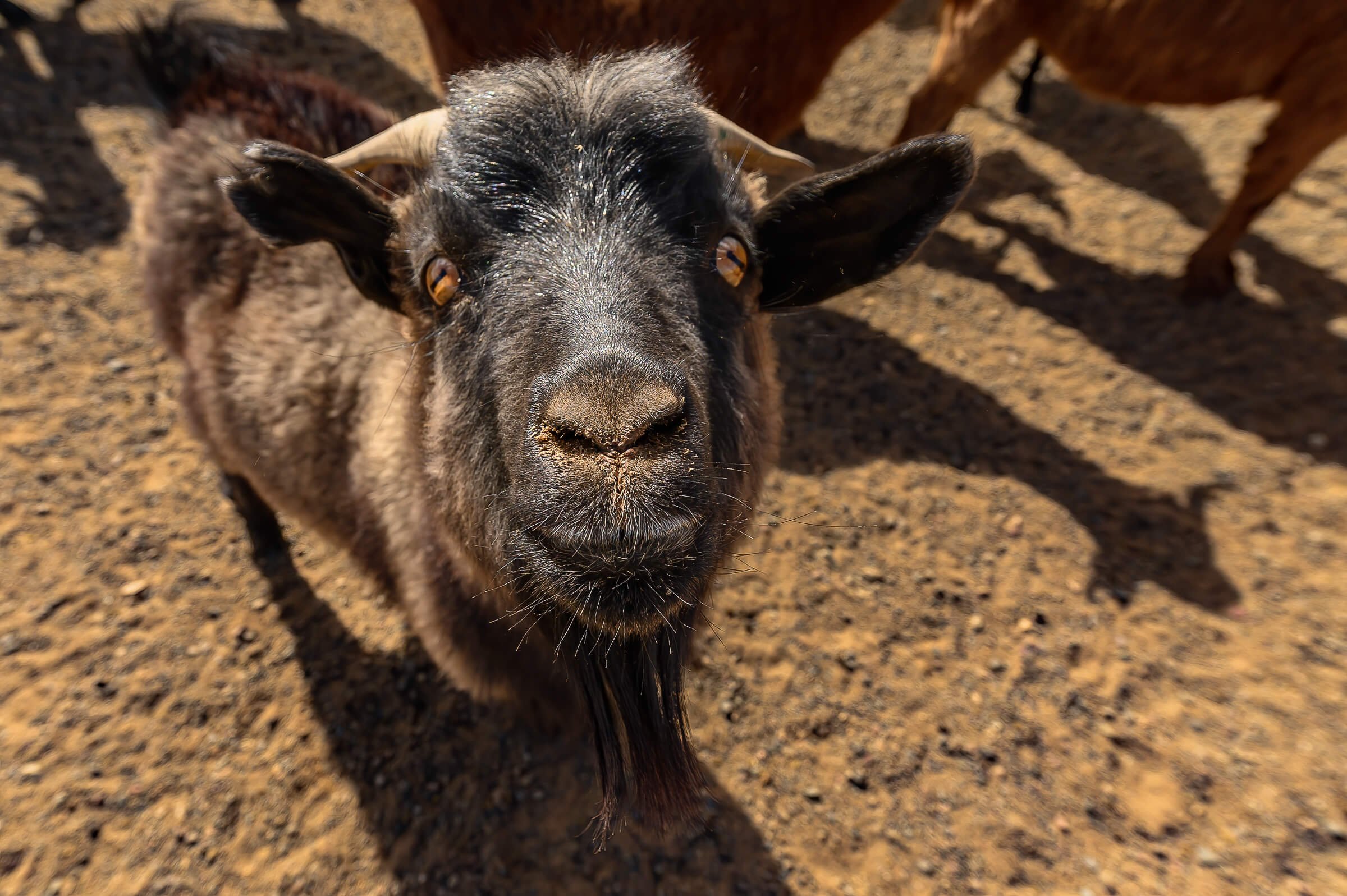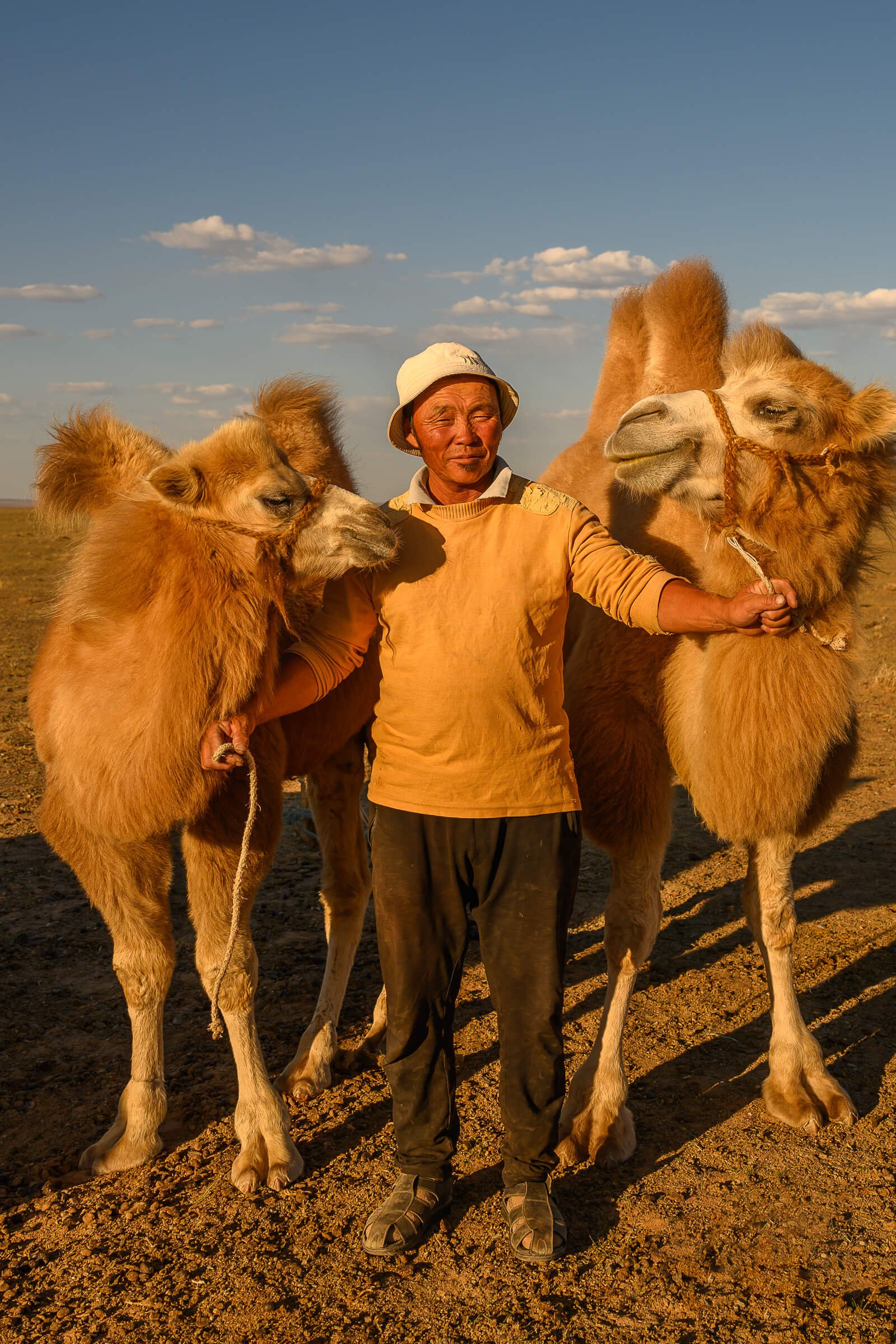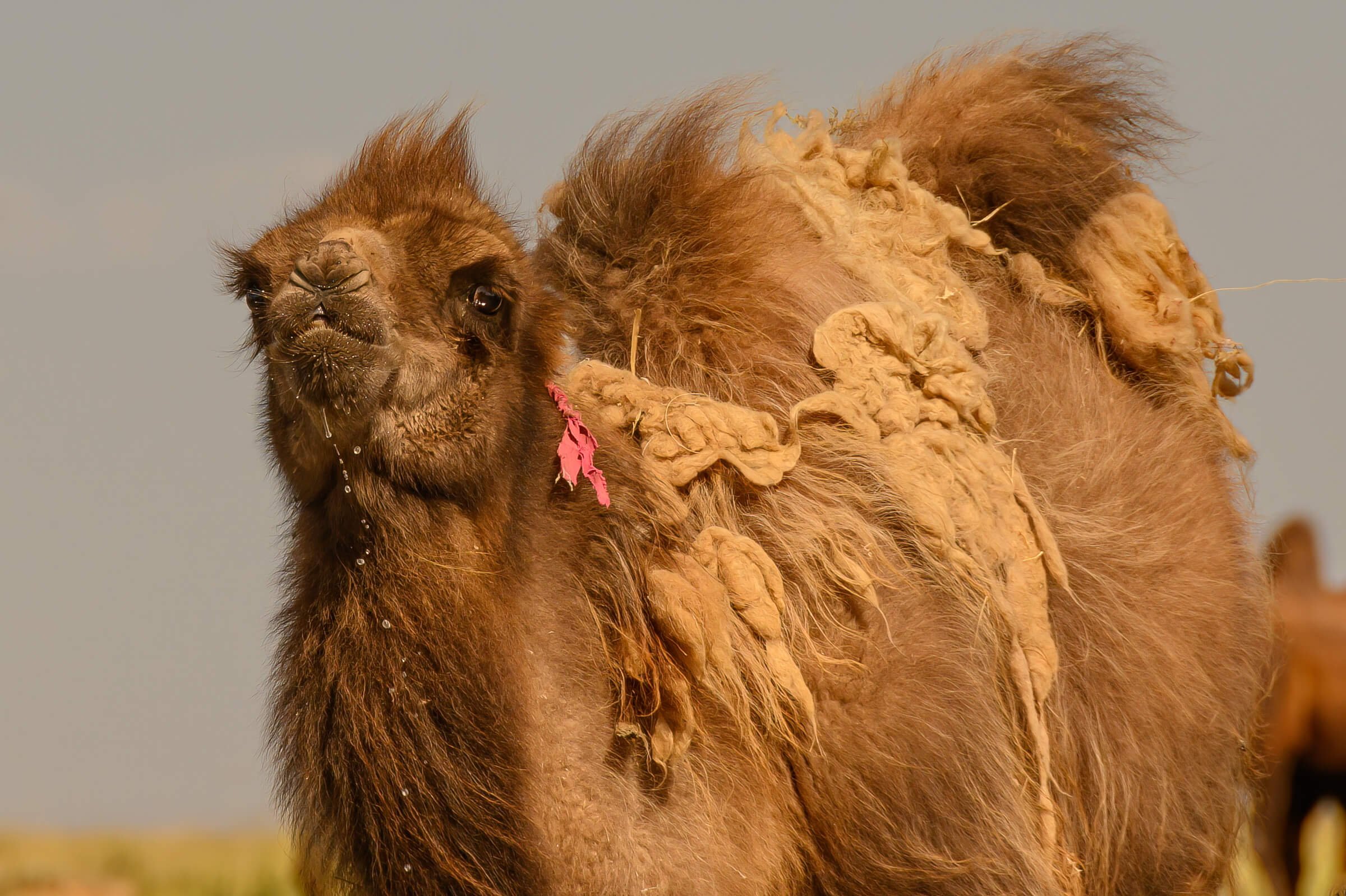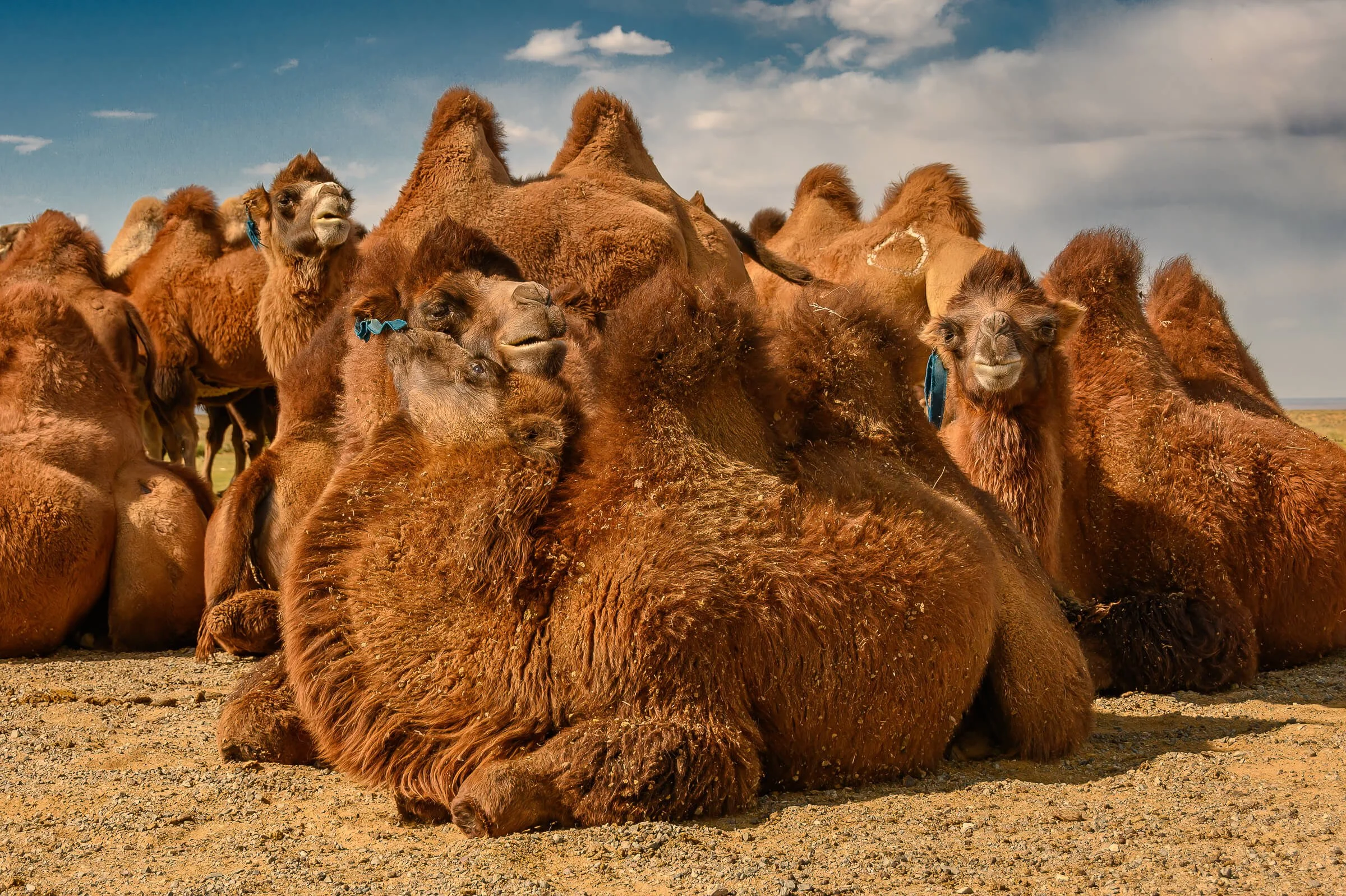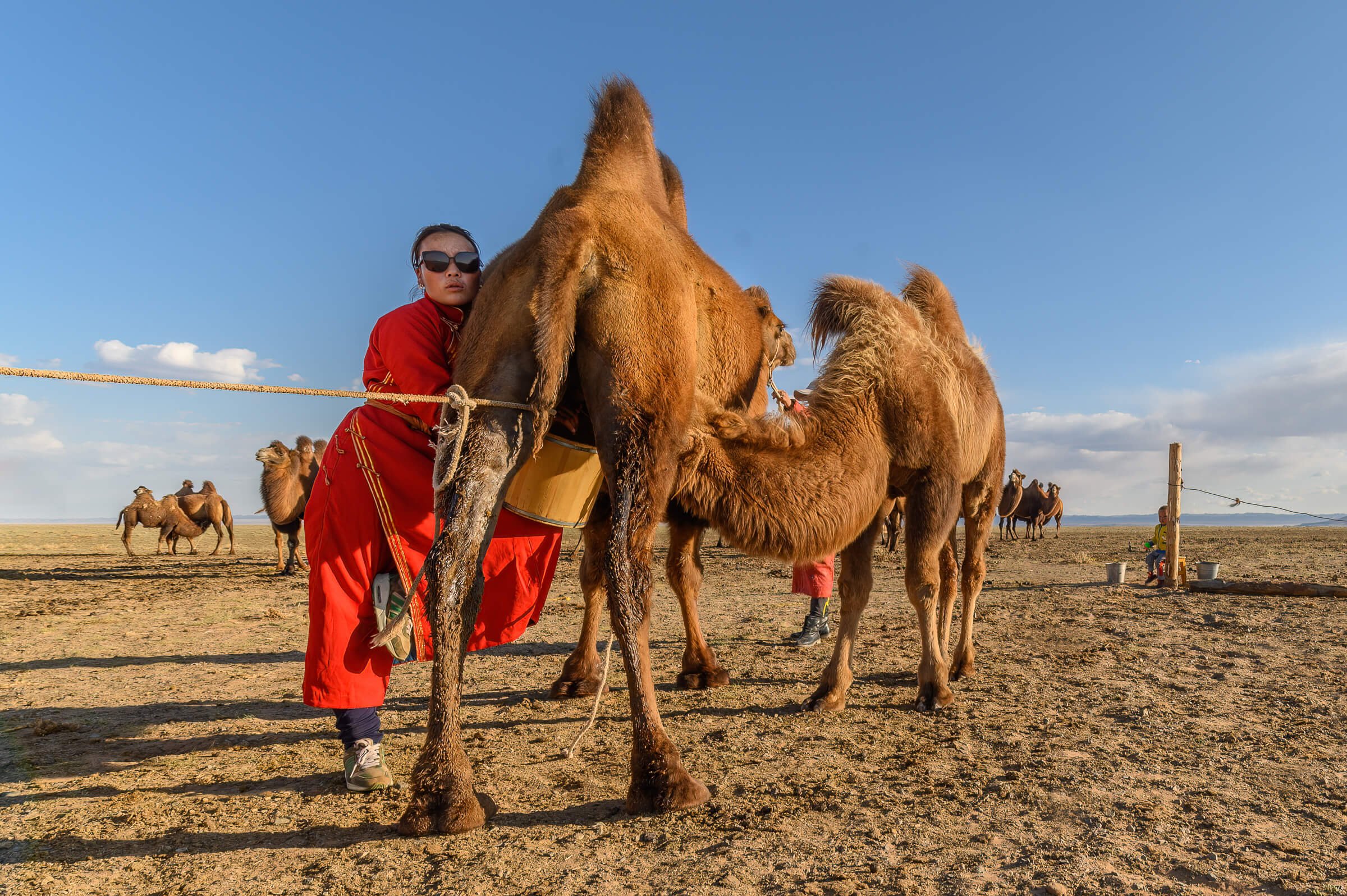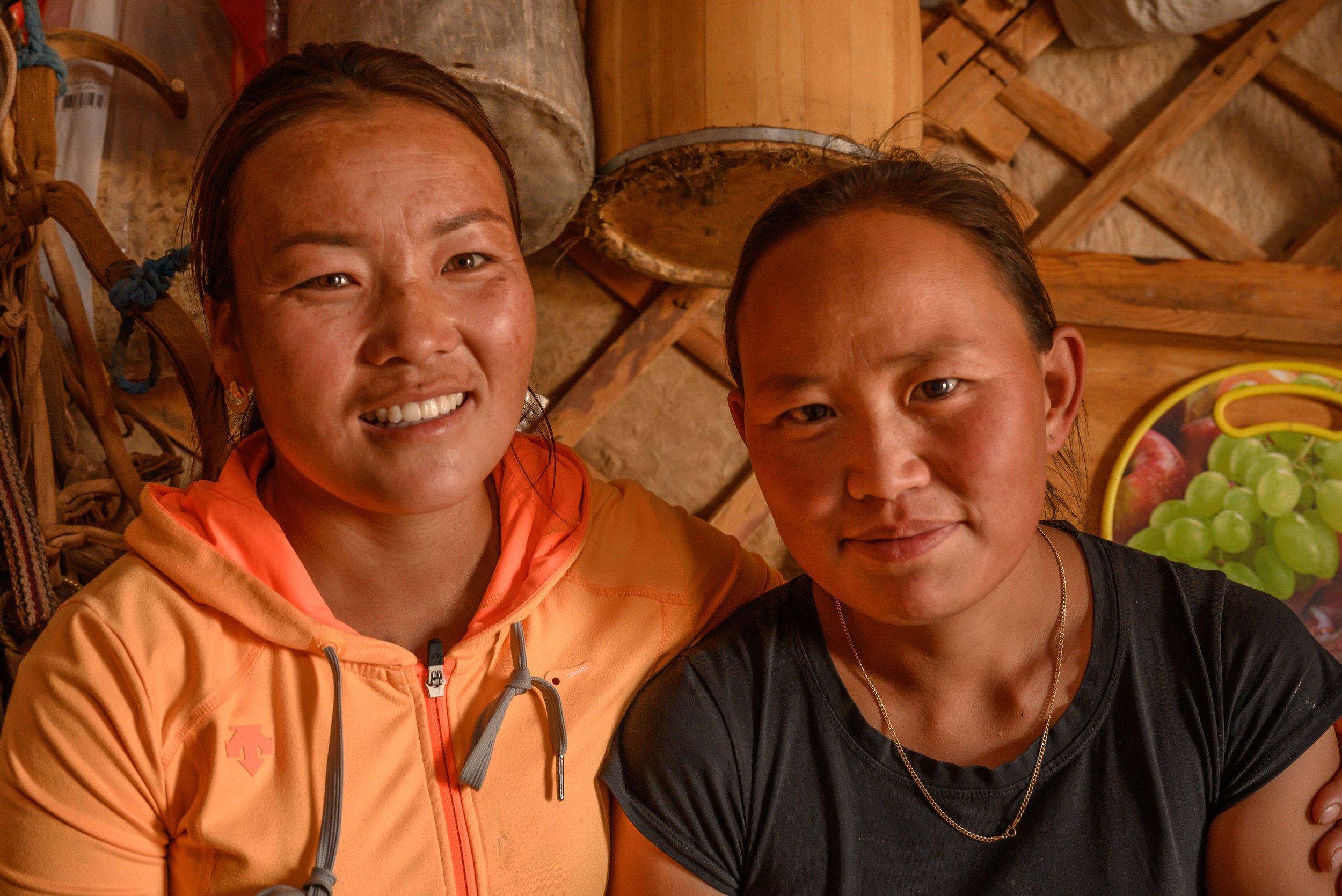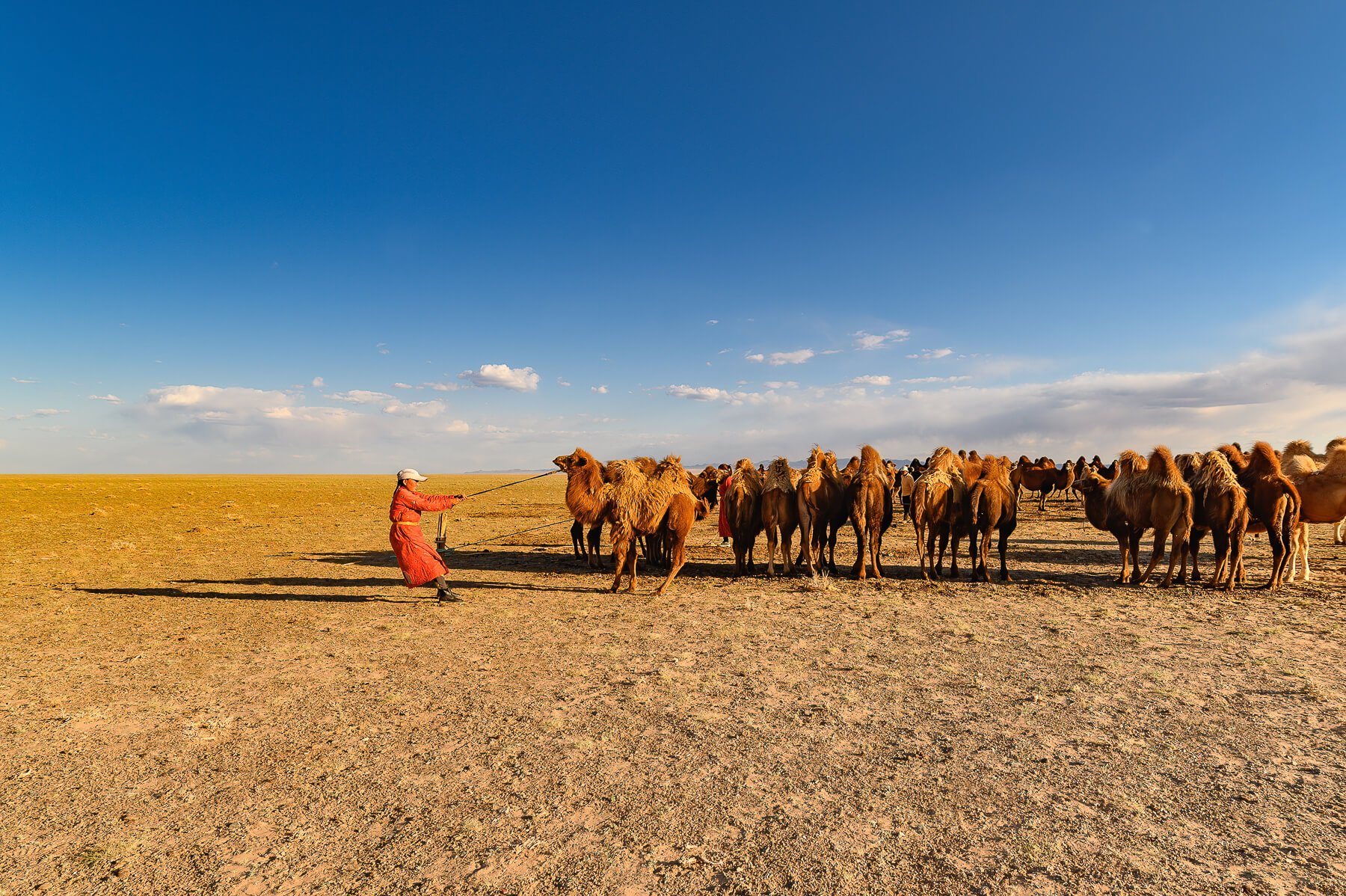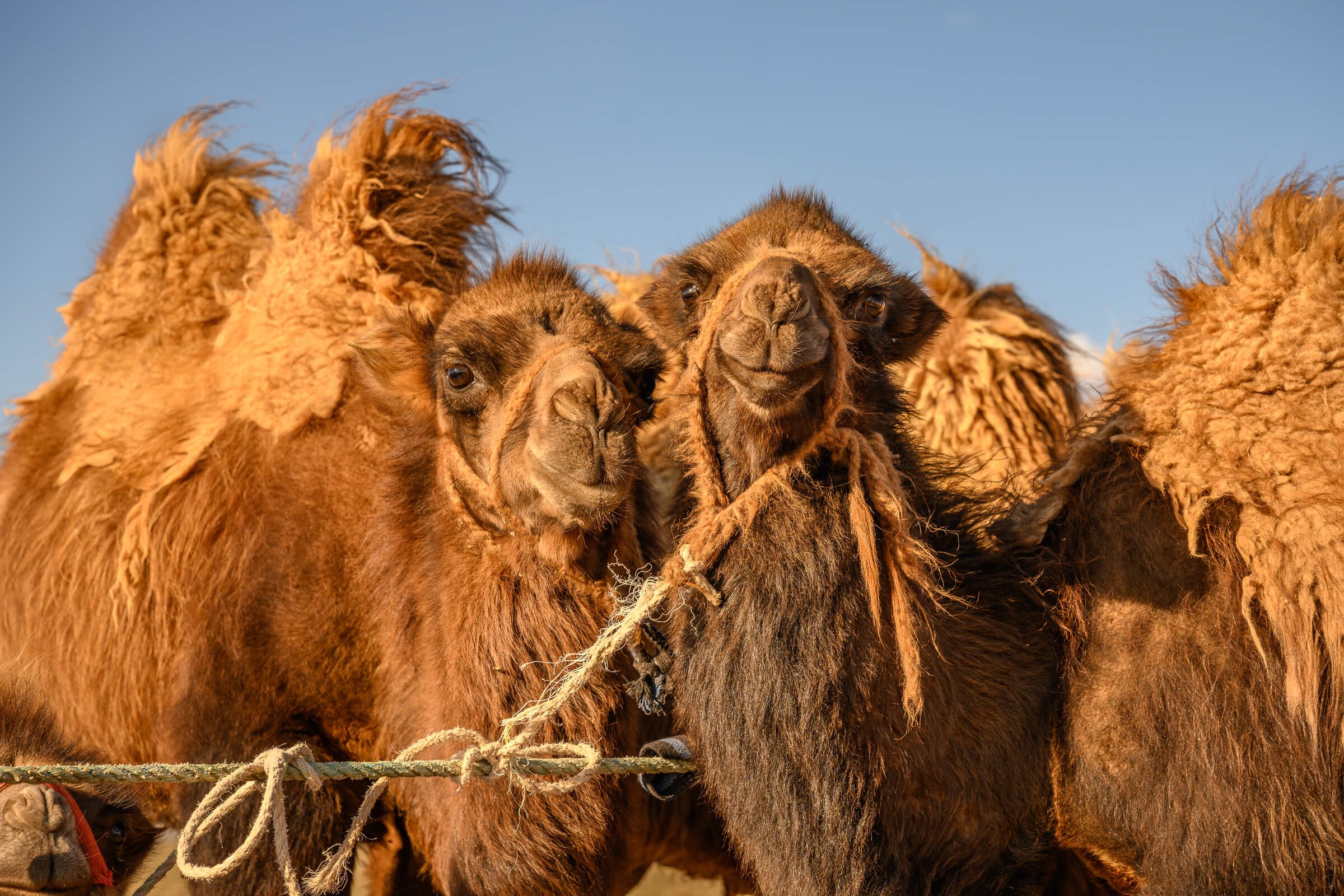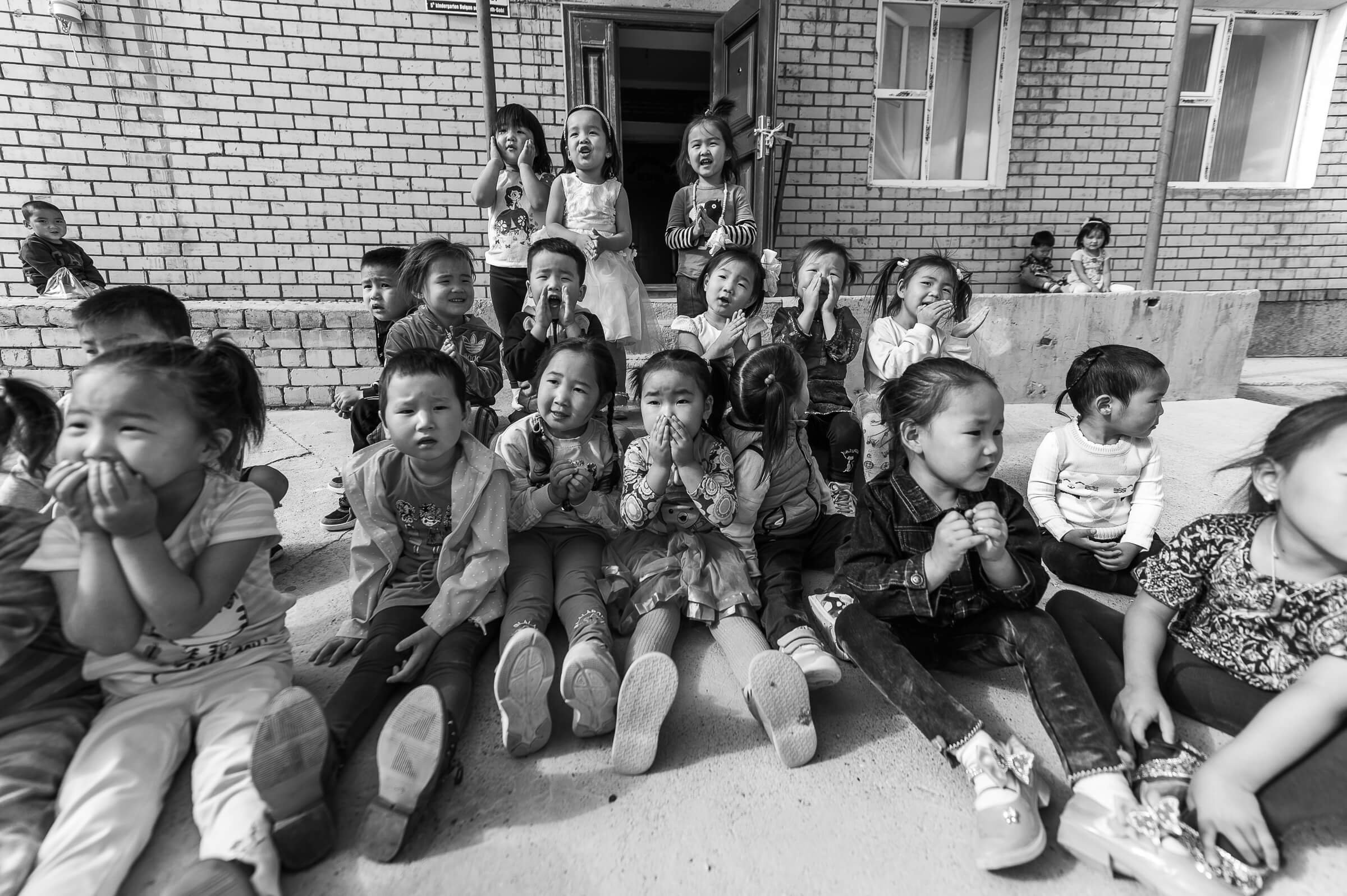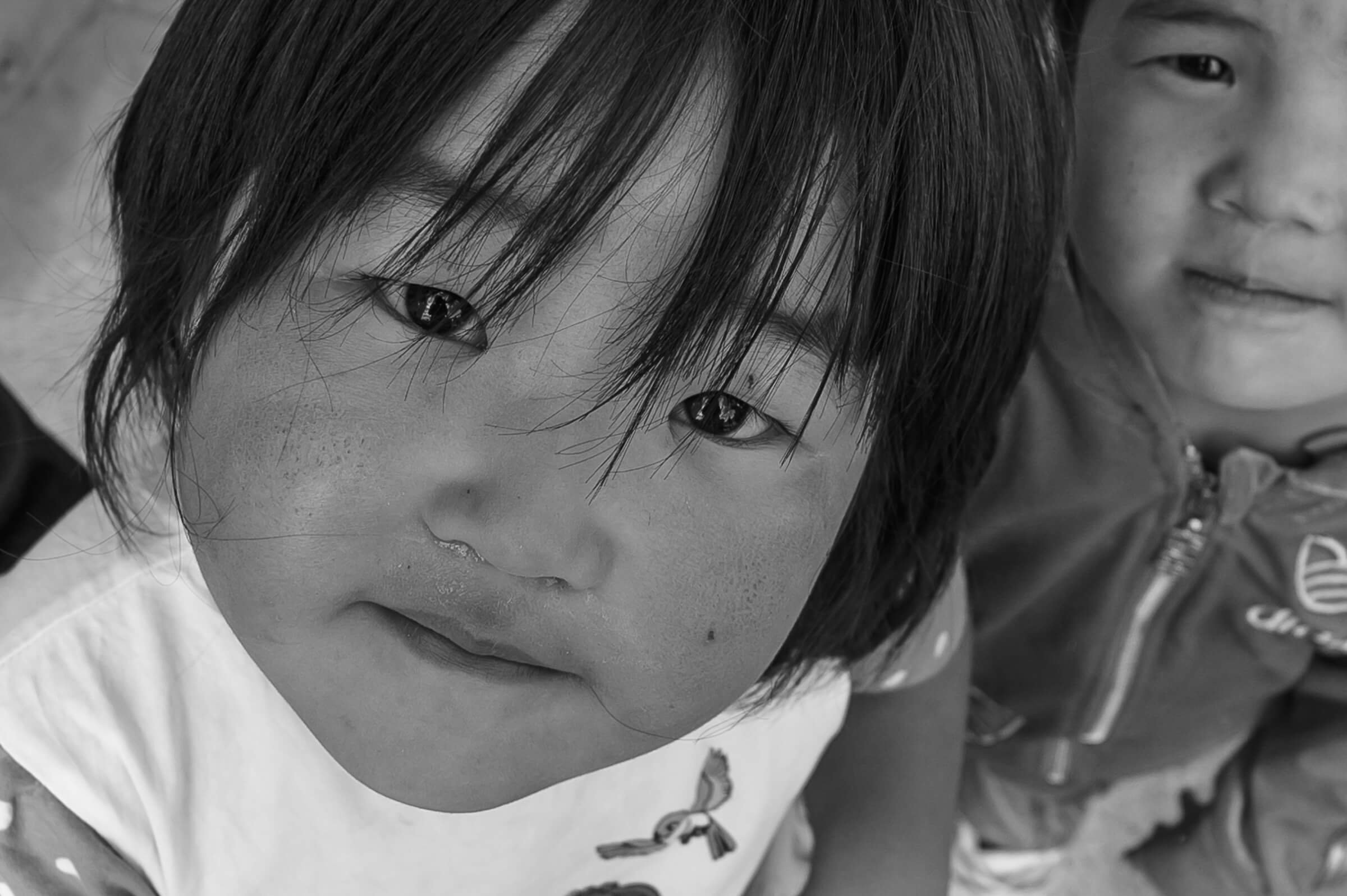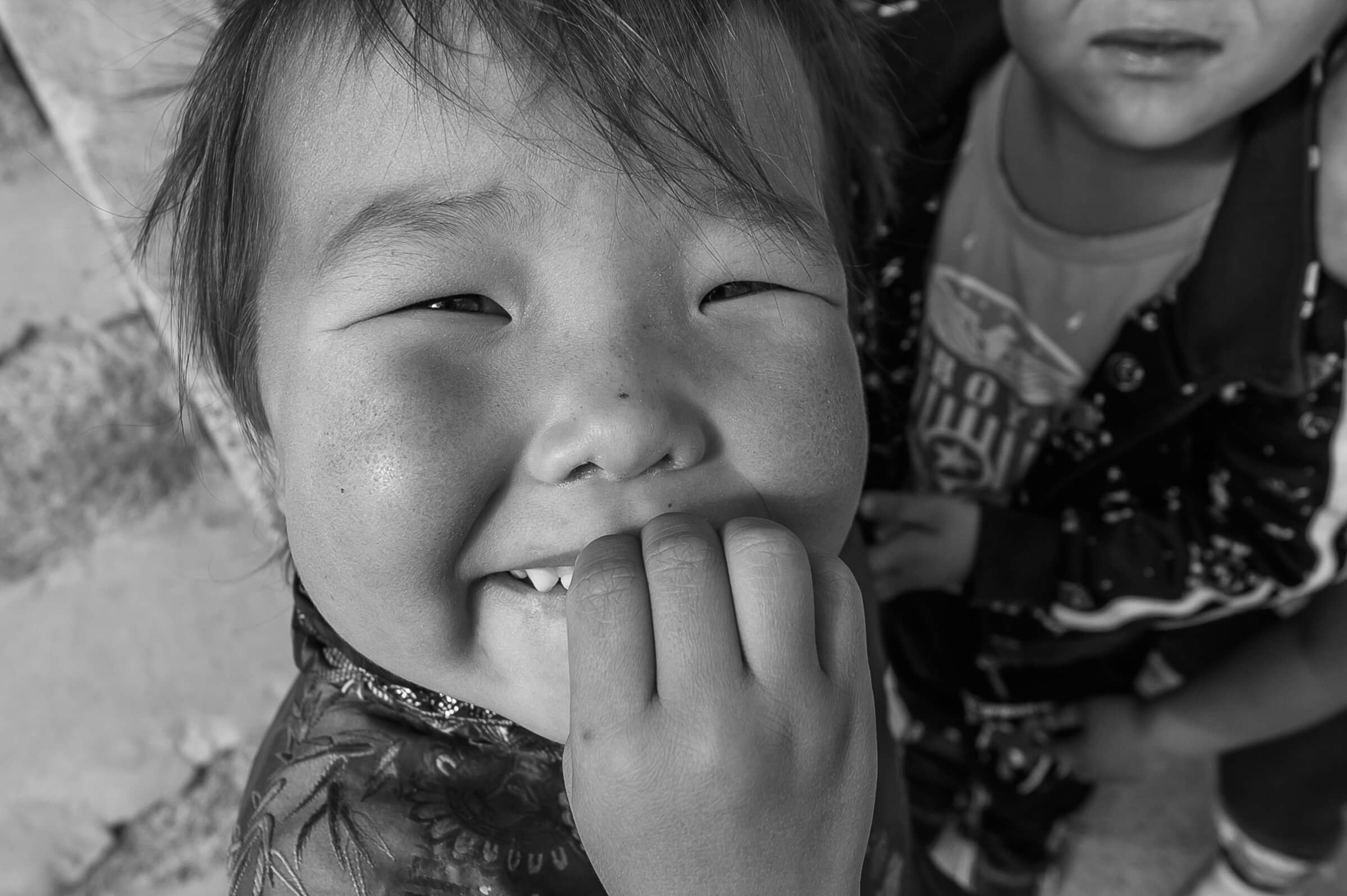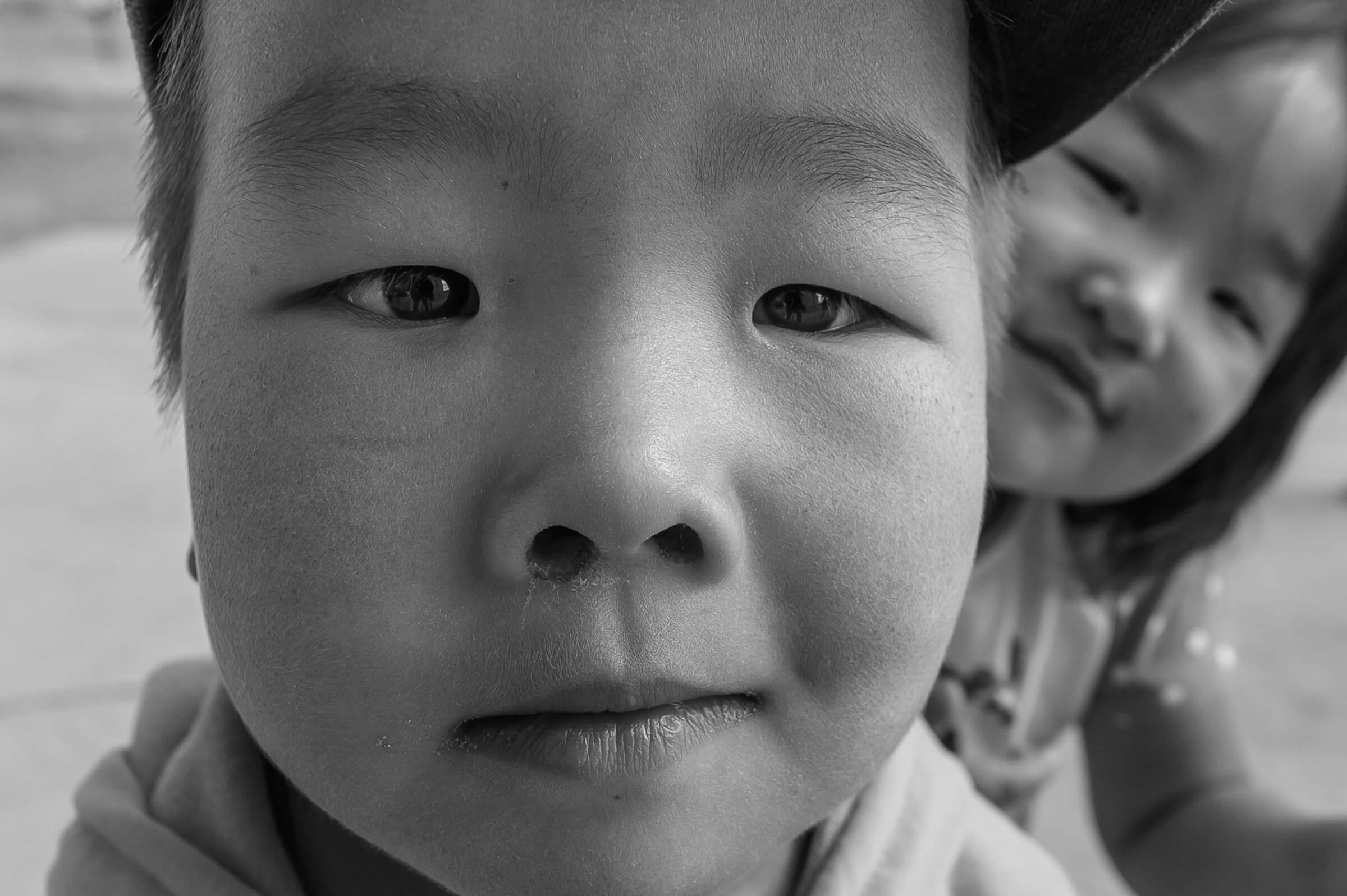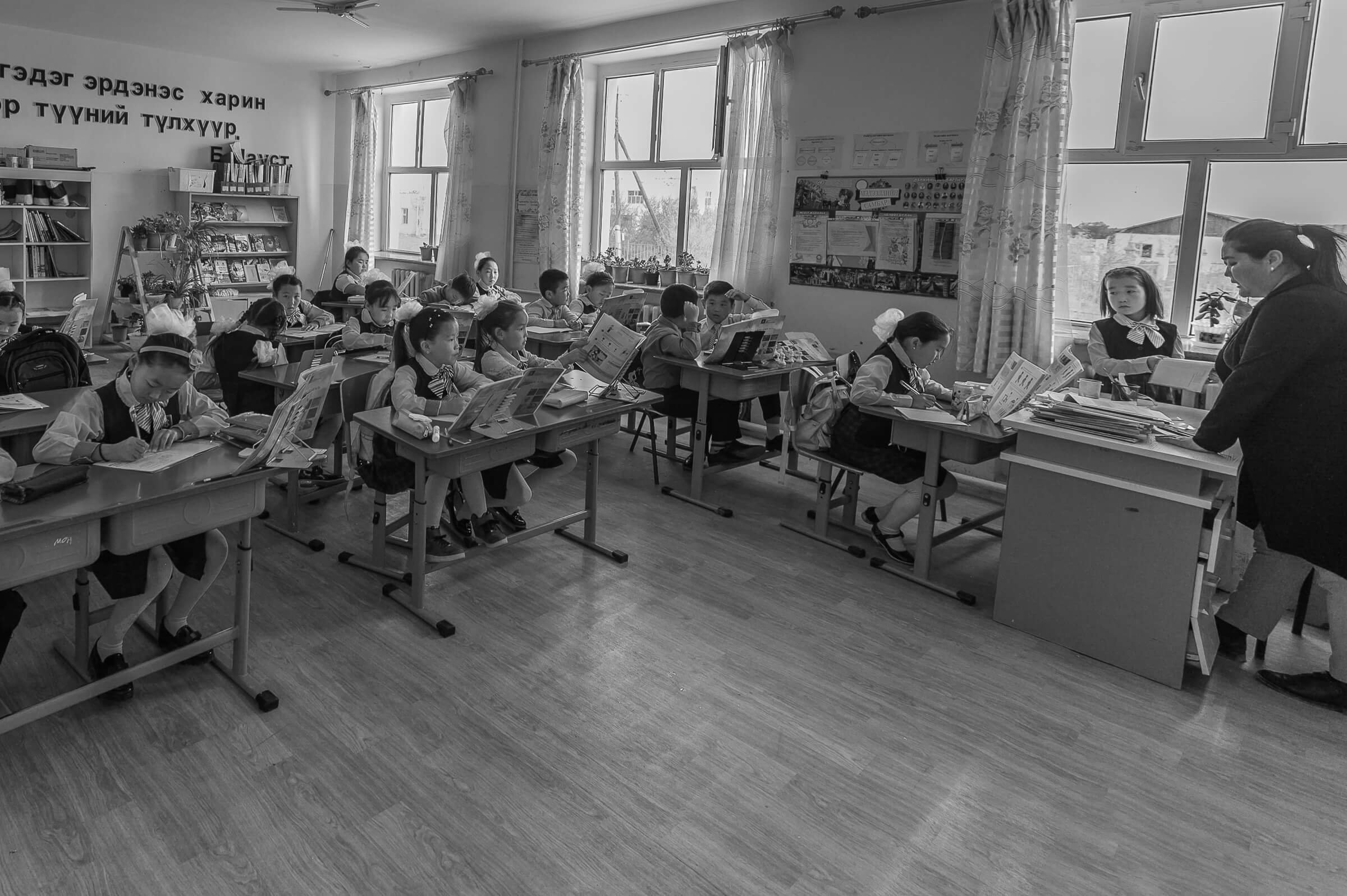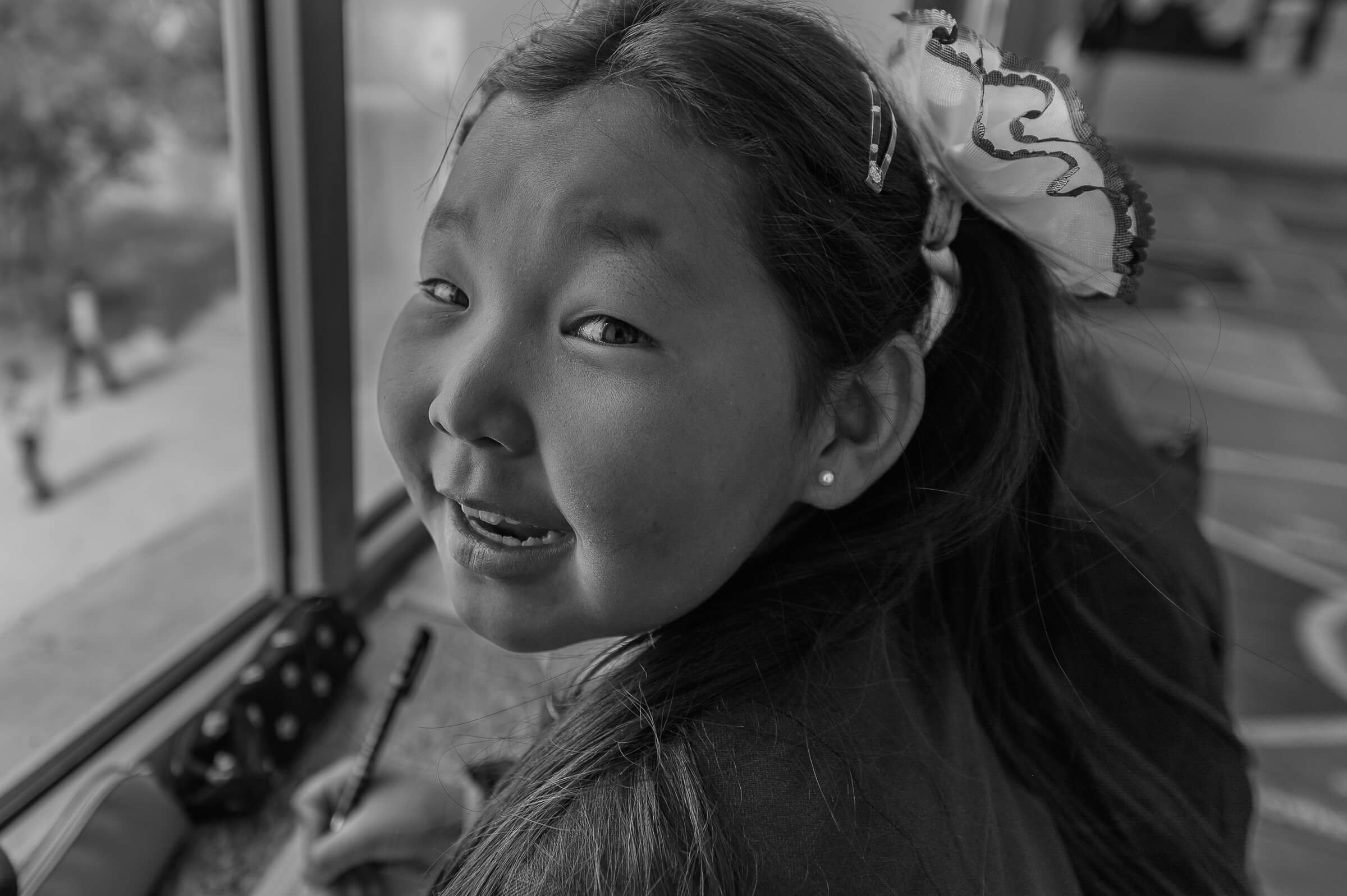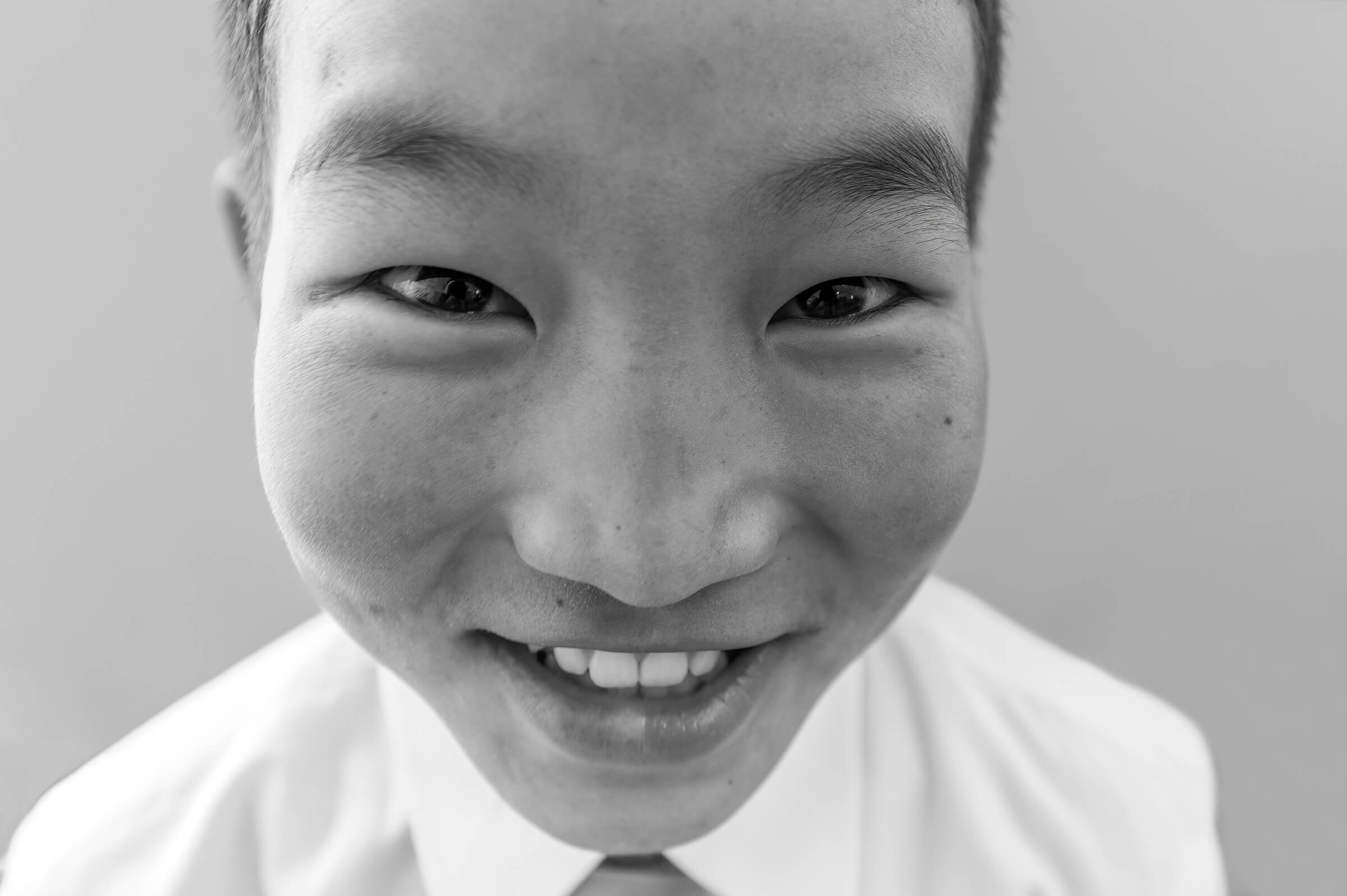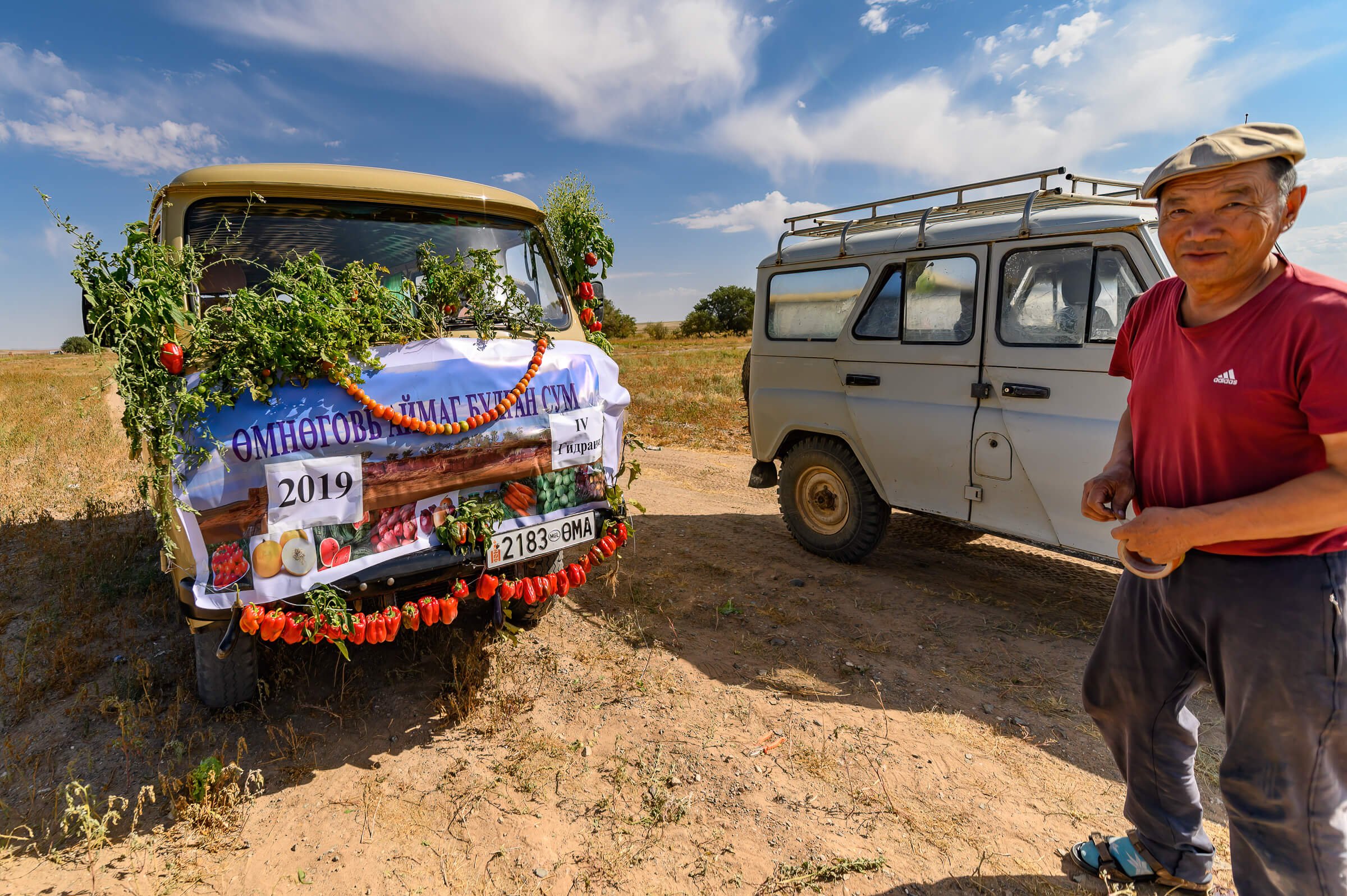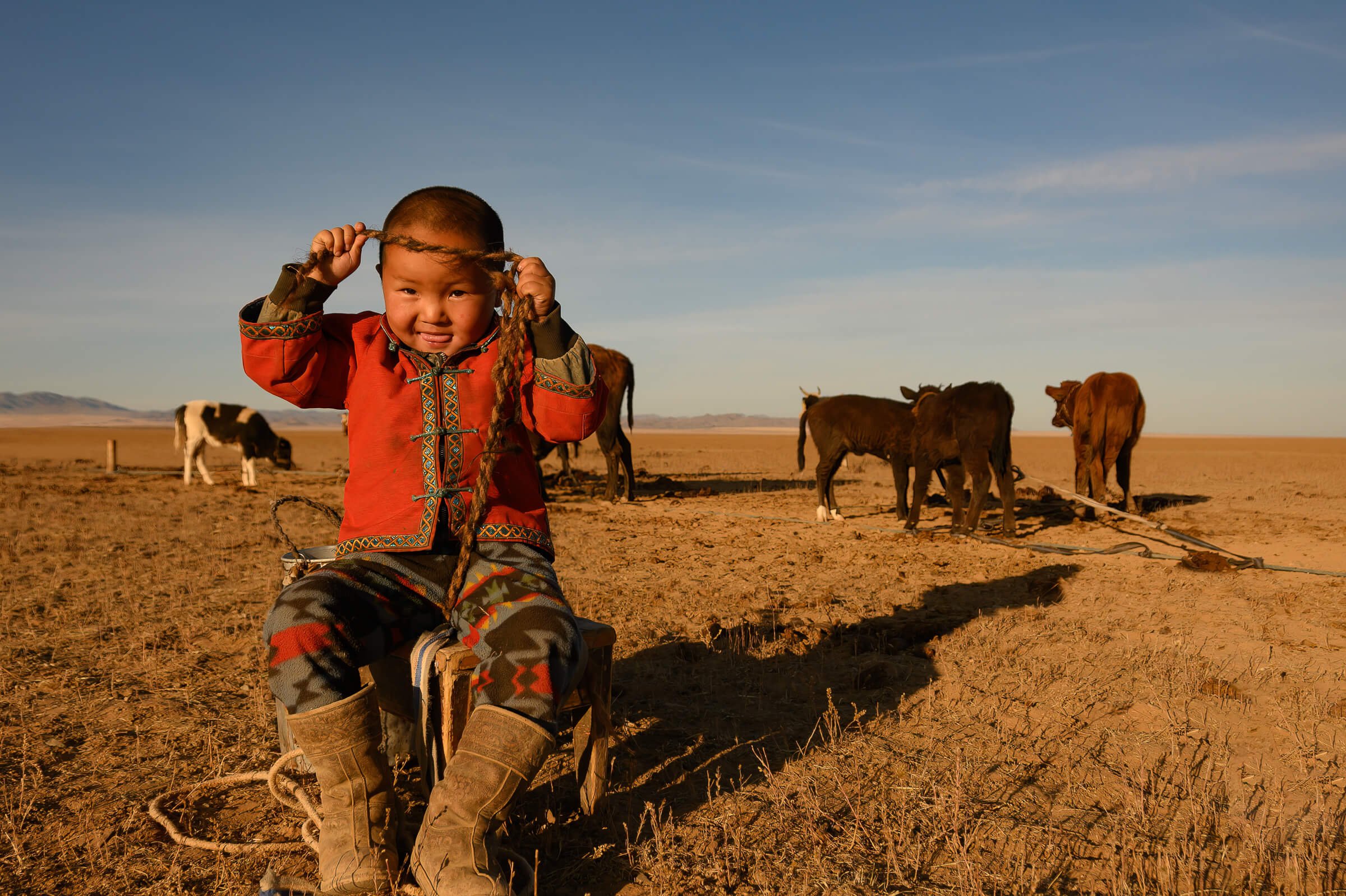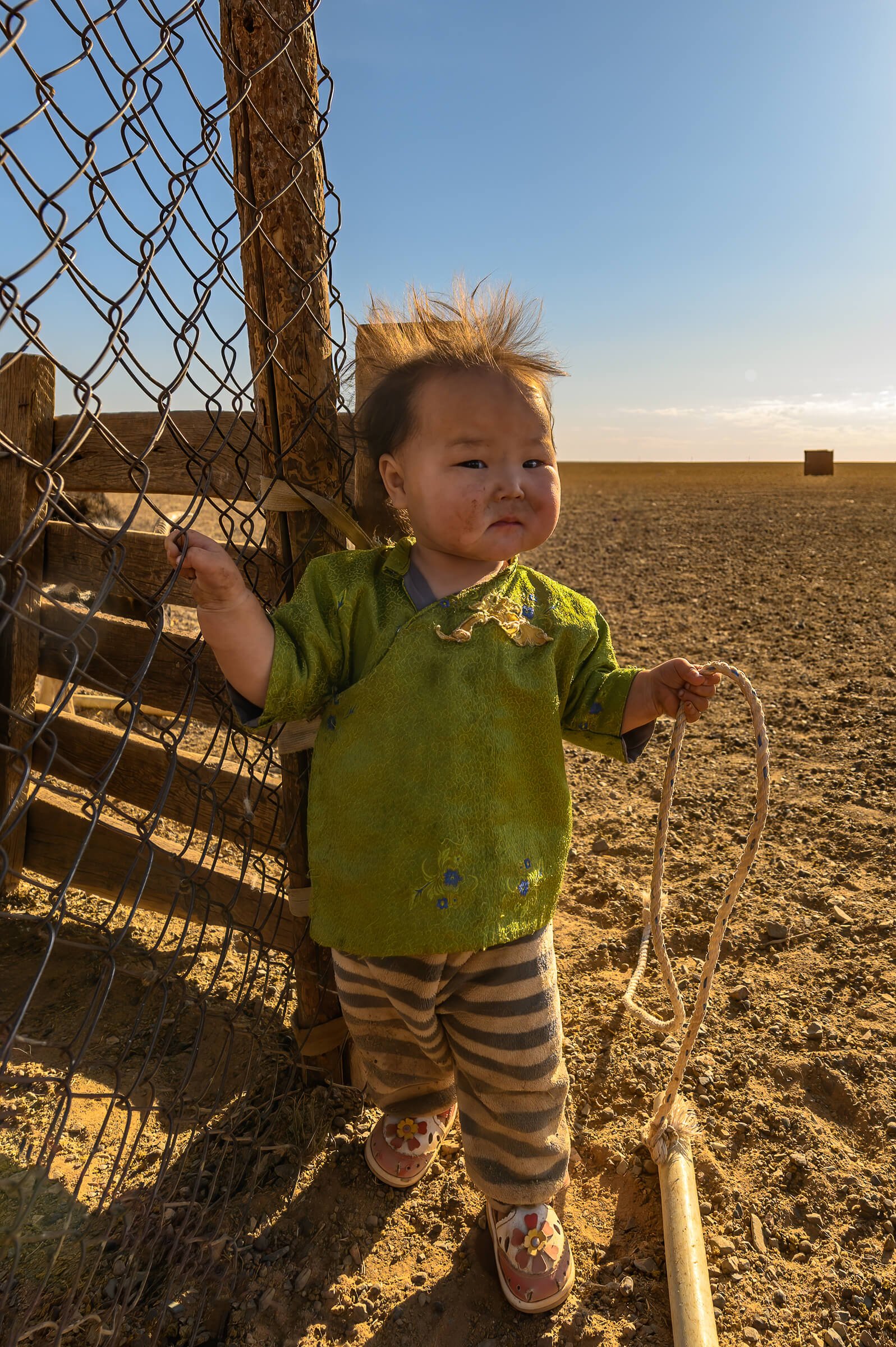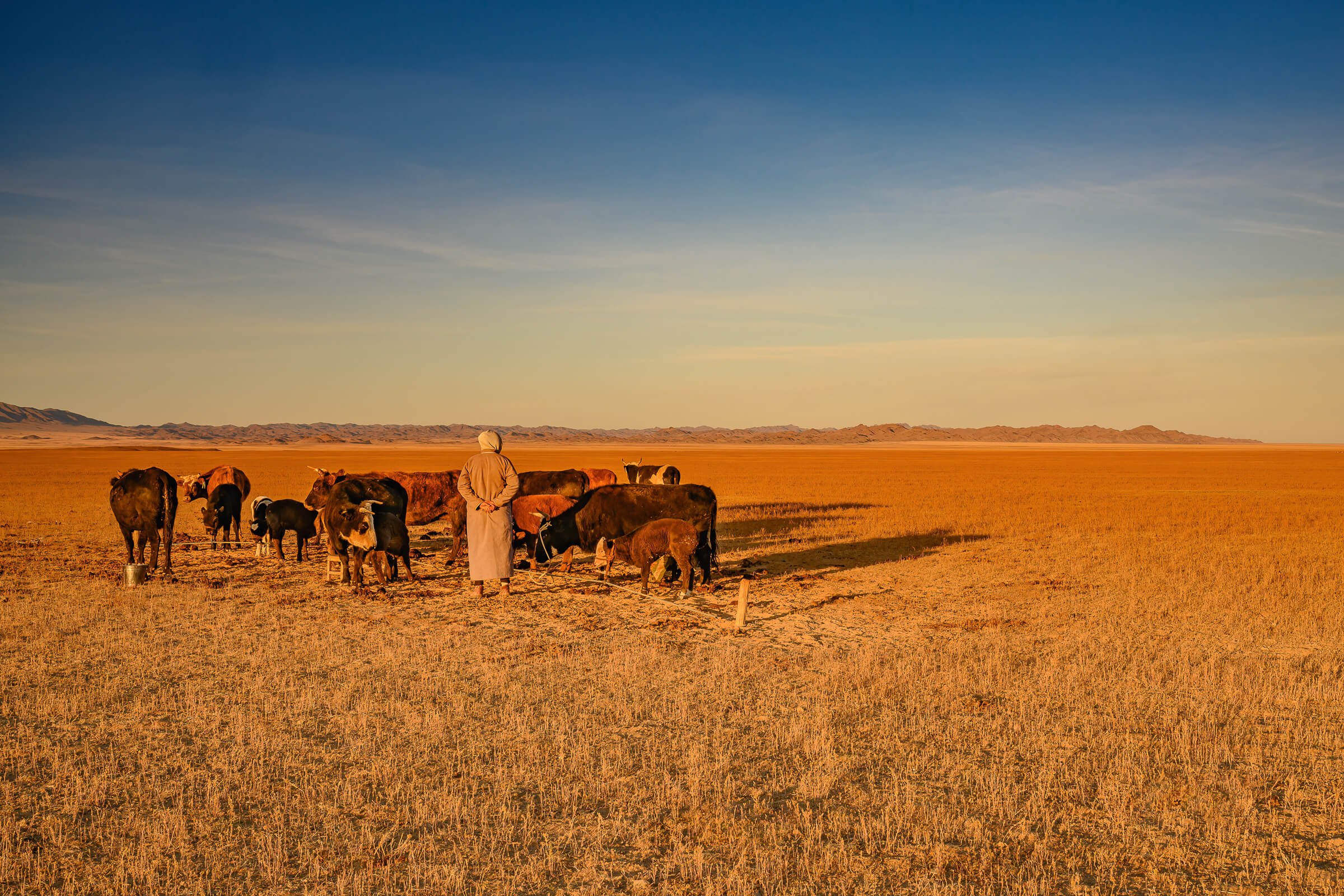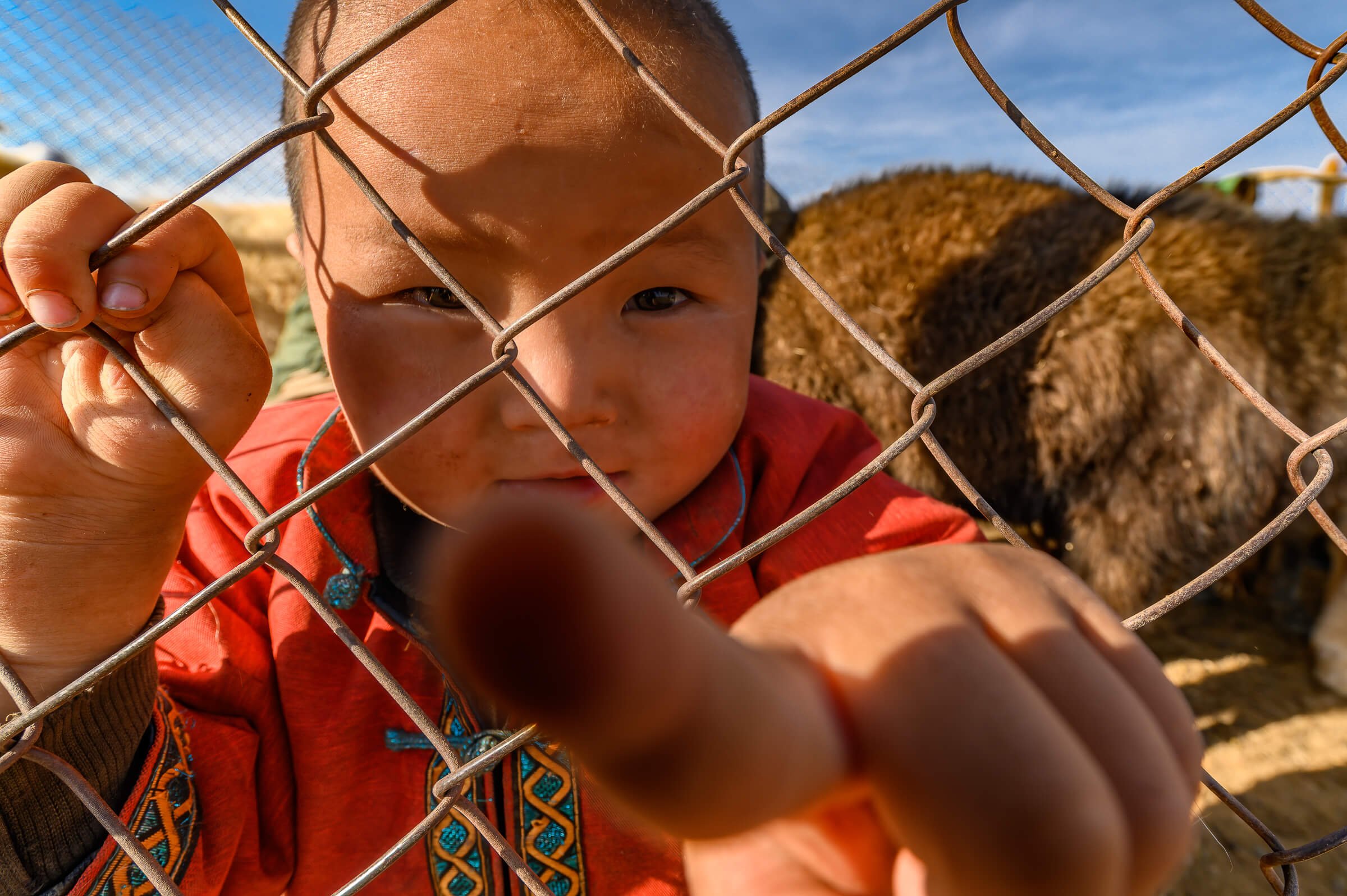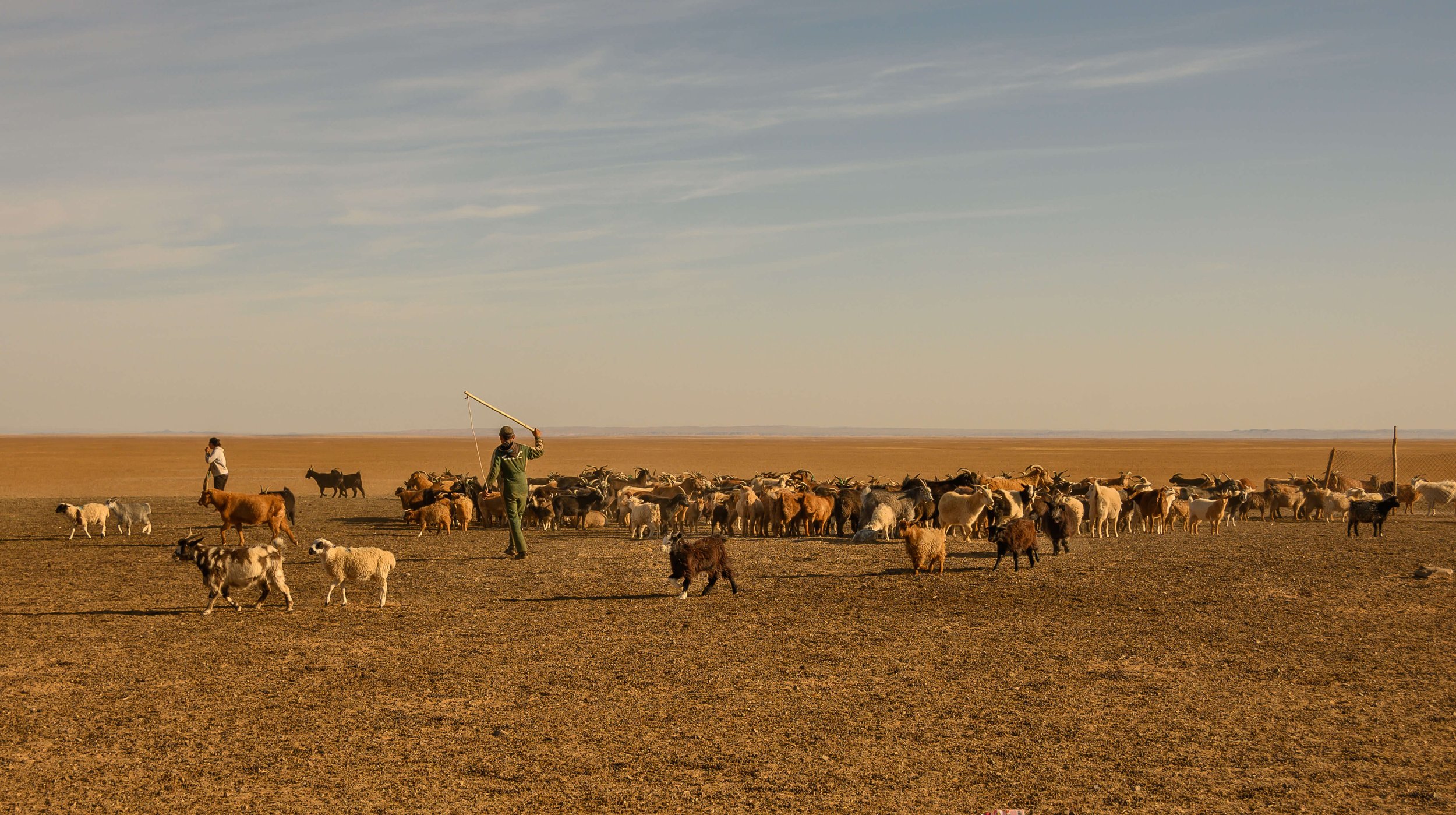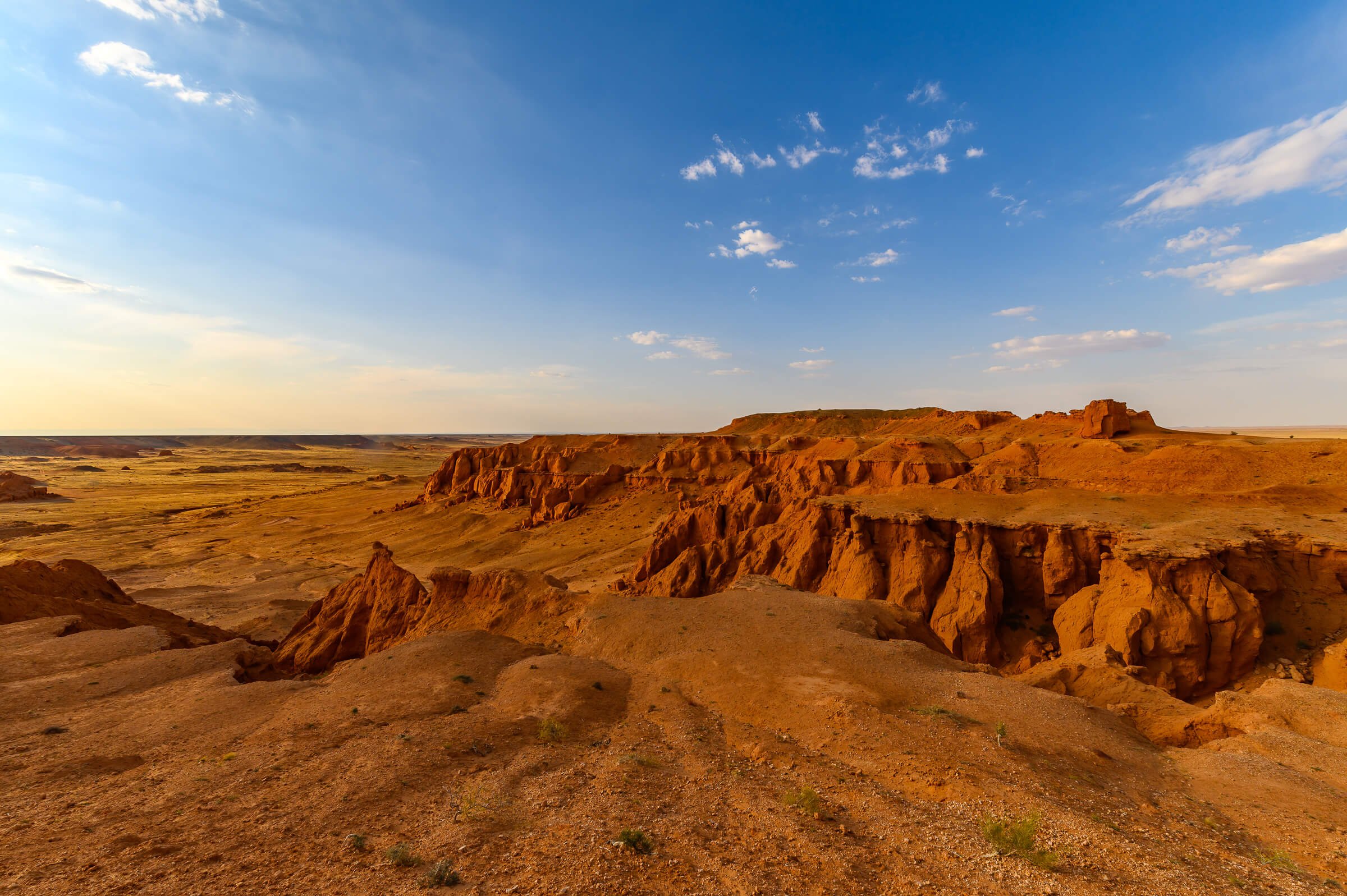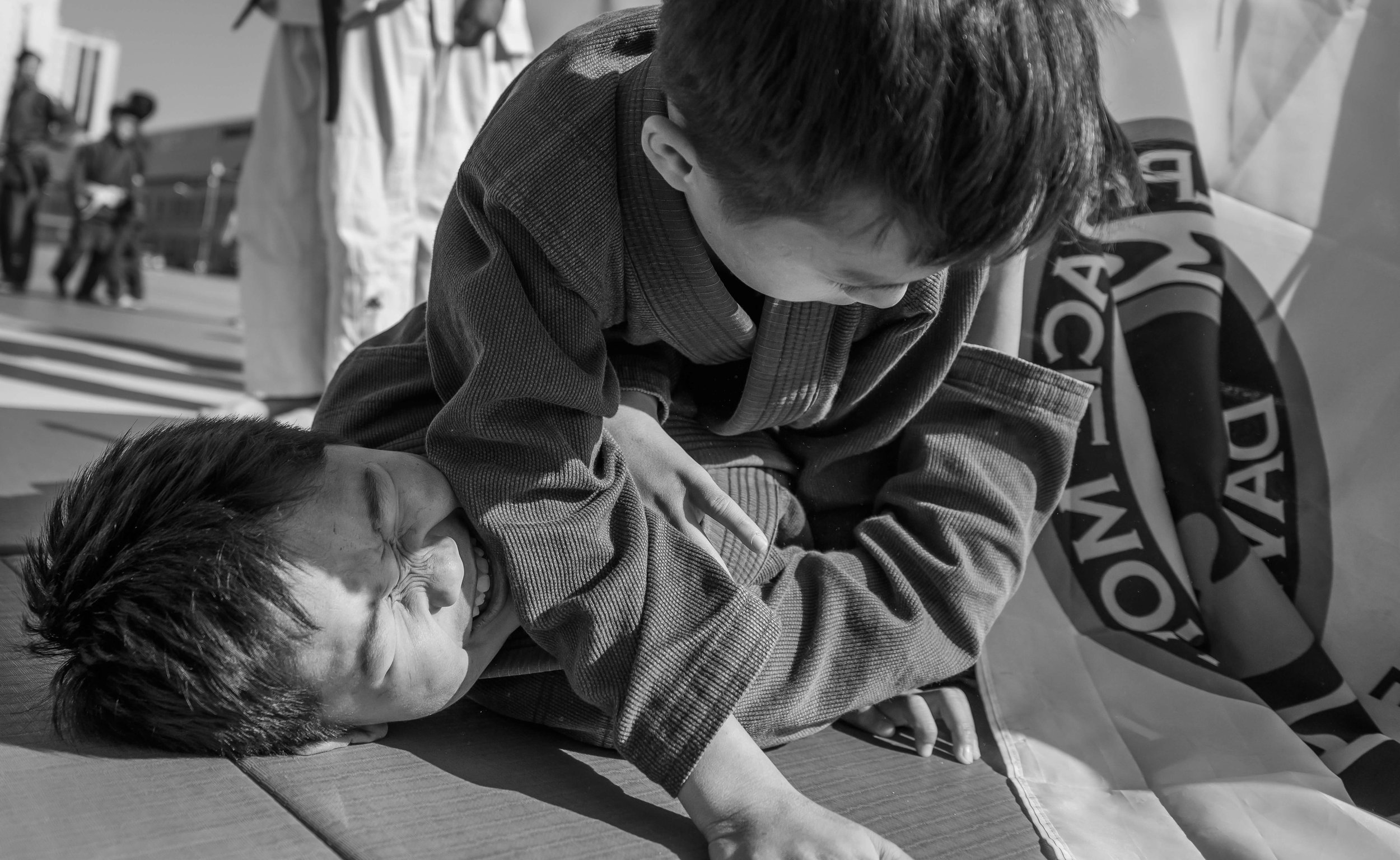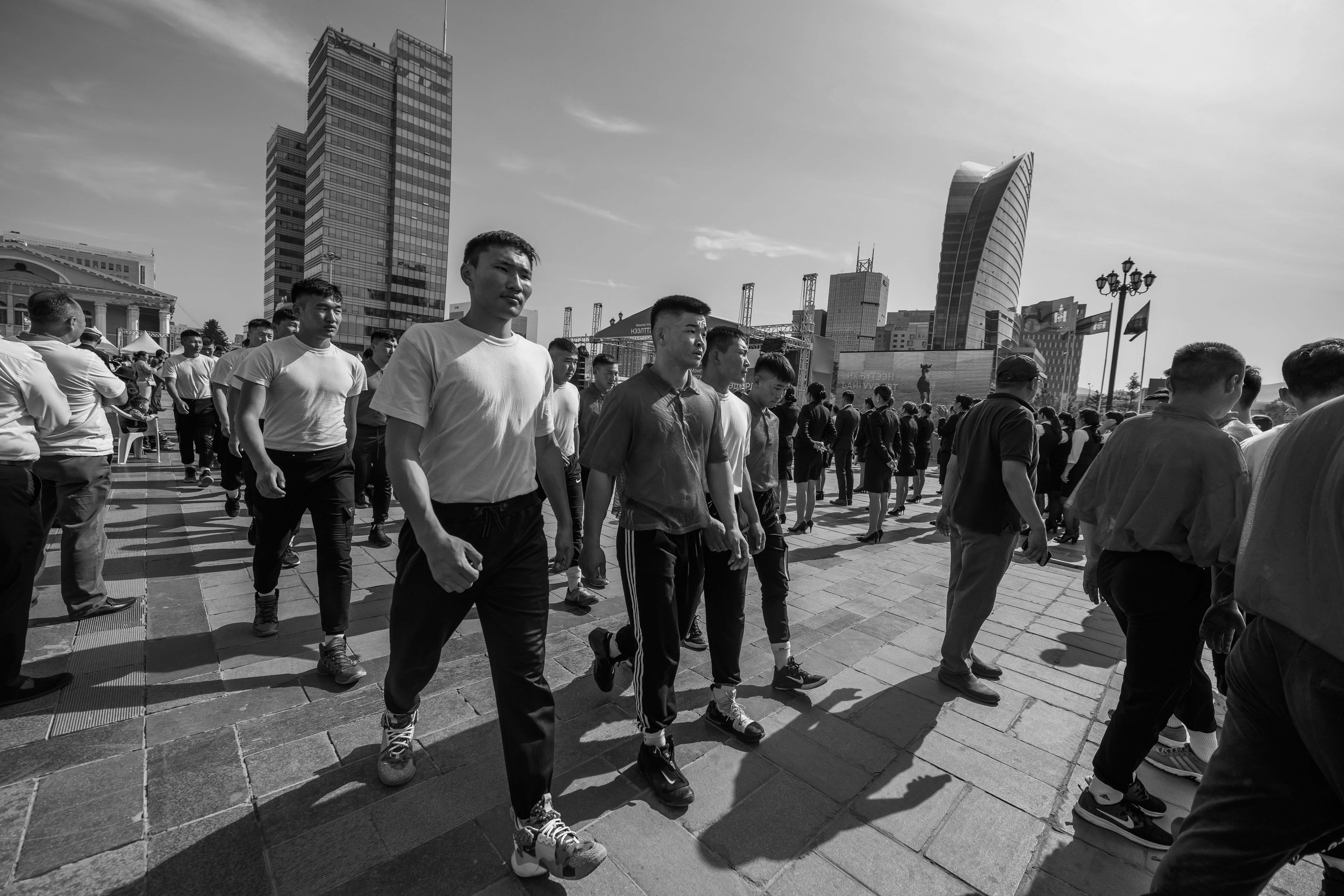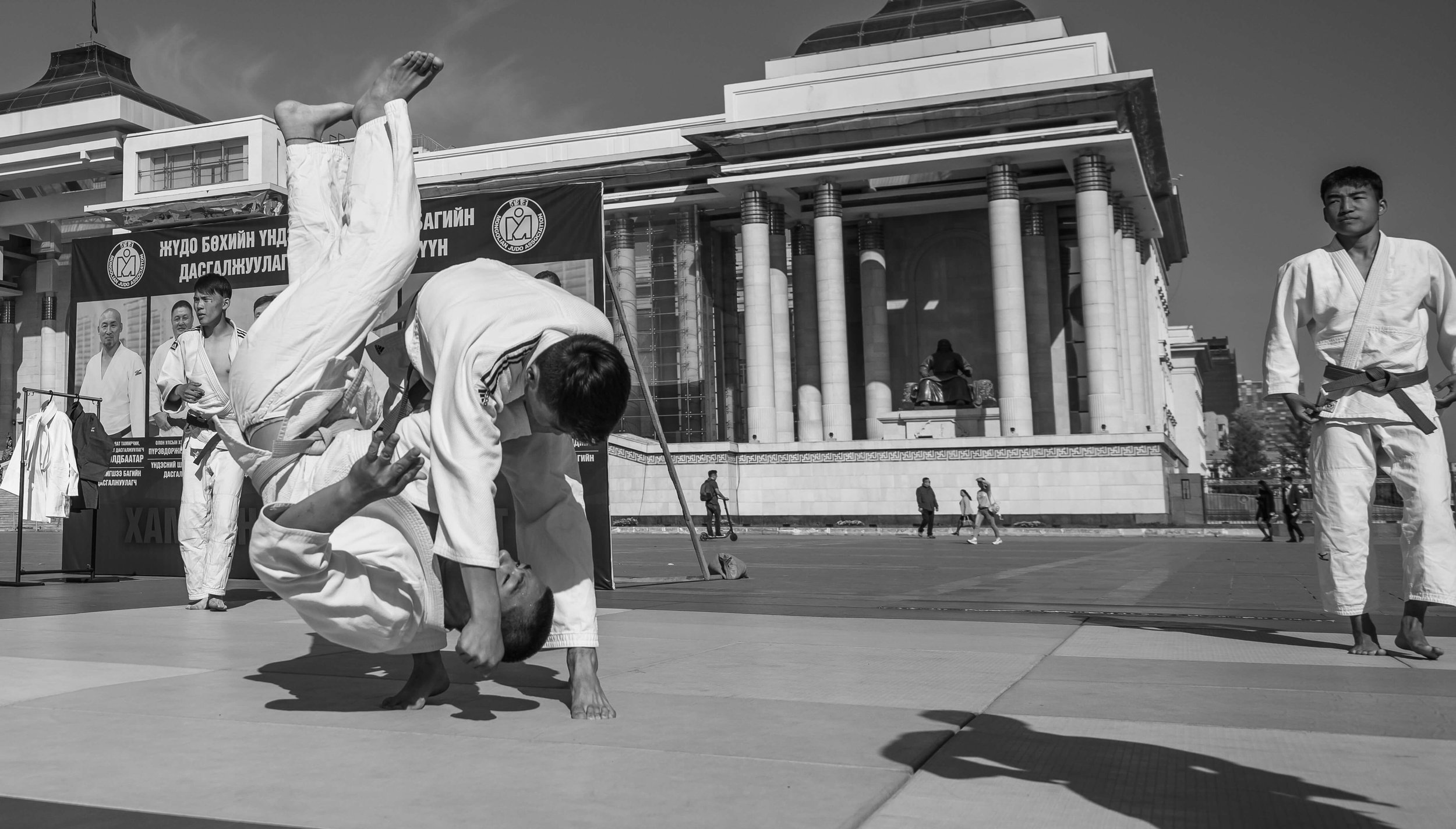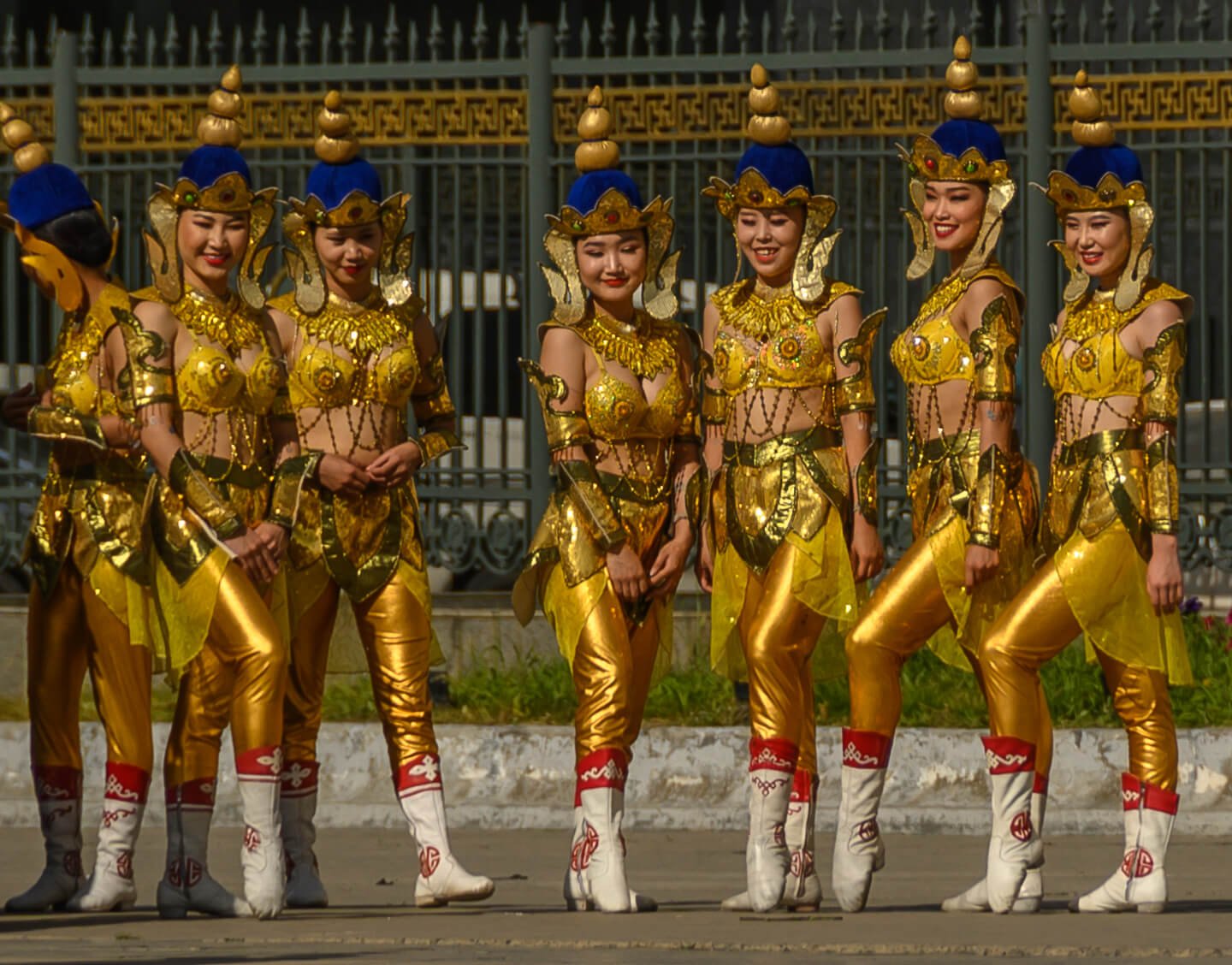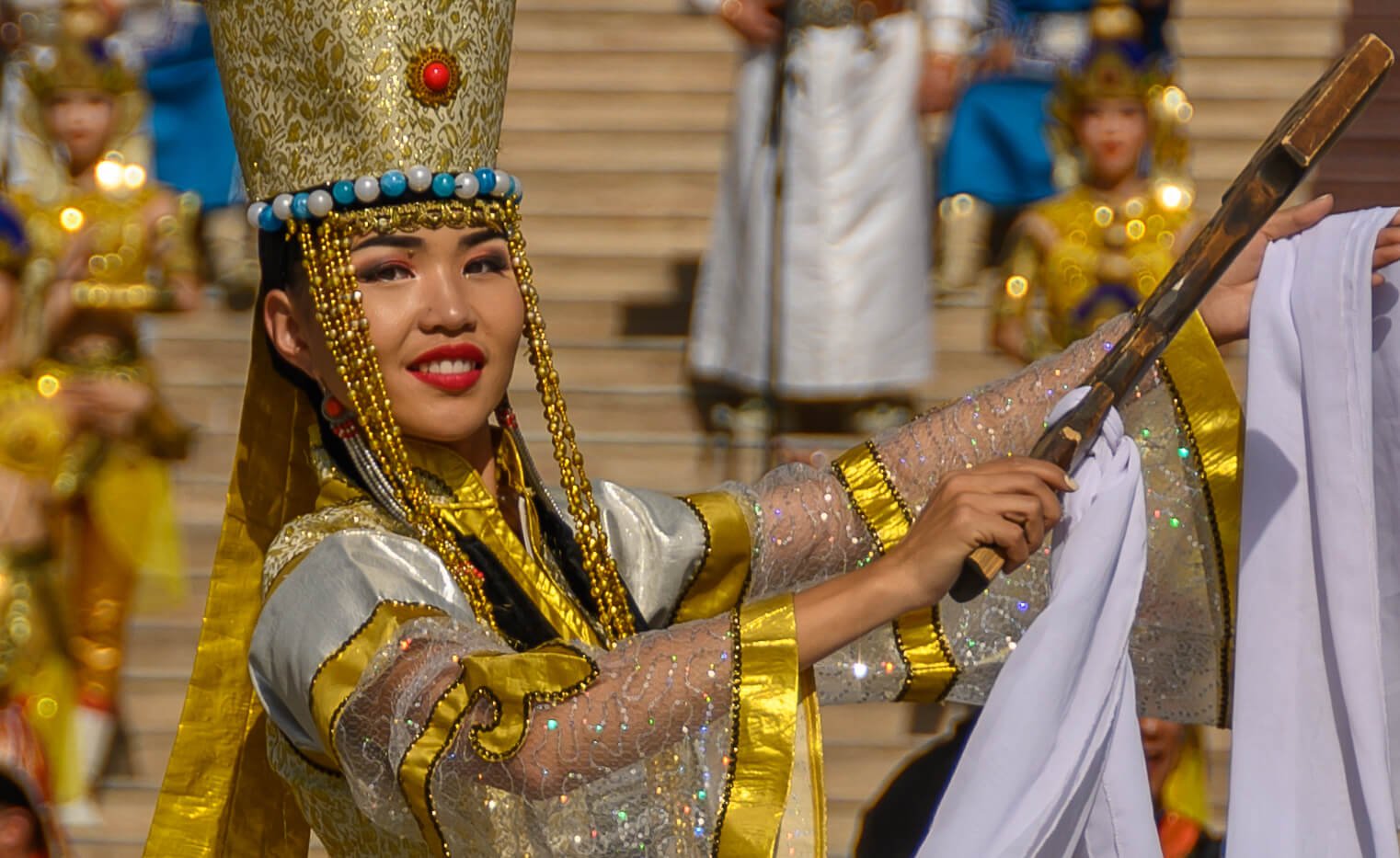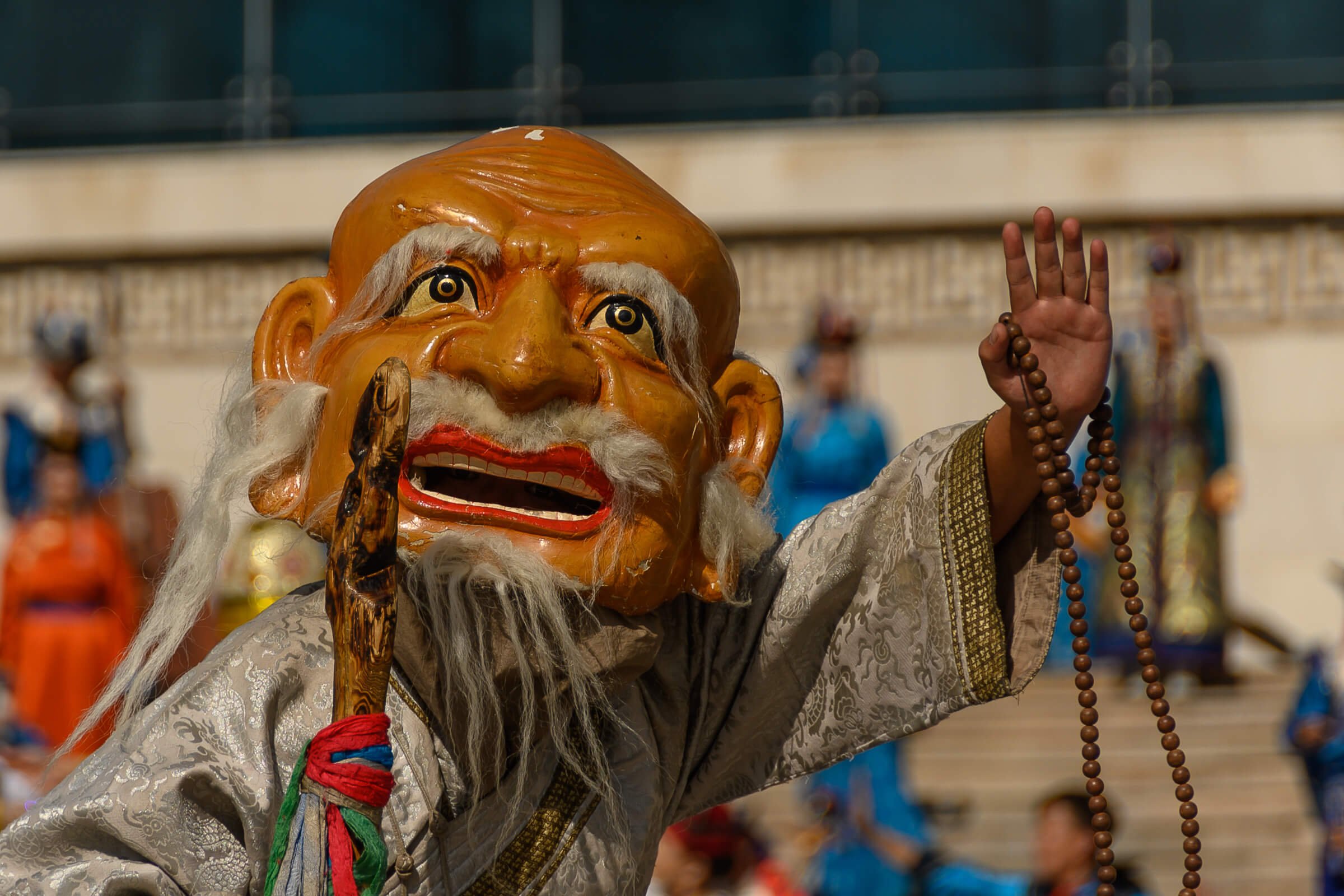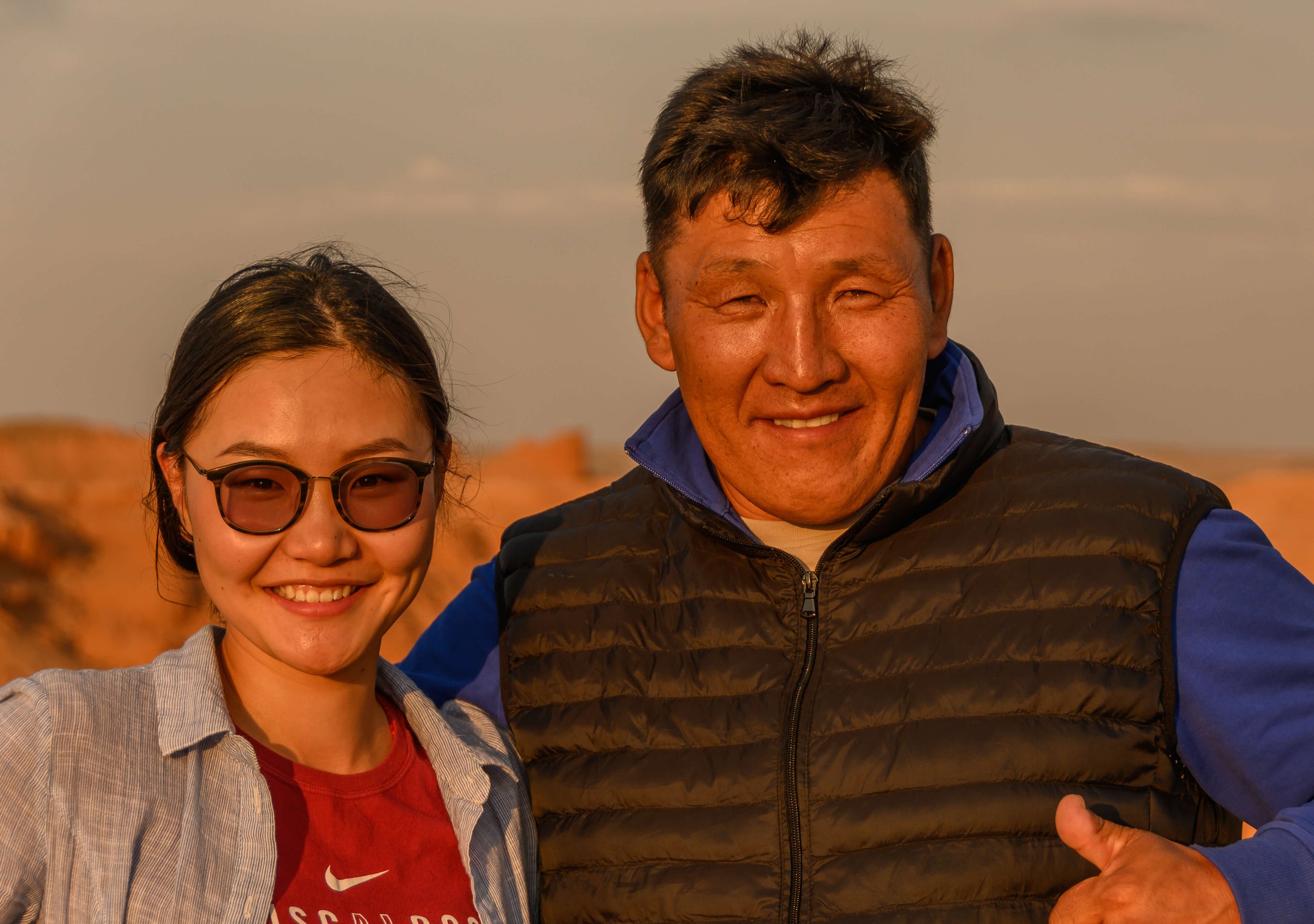Mongolia
-
My exotic Mongolian travels began in September 2019 in the capital city of Ulaanbaatar. Here I met Gantuul - a name that stems from Gan (stainless steel) and Tull (from the river Tull). I also befriended my driver Gansukh, that means Axe.
While in the capital, we drove to the Zaisan Memorial - a structure built by the Soviet Union to commemorate fallen soldiers from World War II. To get there, we took 300 steps and were awarded breathtaking panoramic views of the city and the iconic river Tull.
After experiencing the city’s delights, the following proposal was to meet a nomadic herder family in their summer pasture near Gun Galuut. When we arrived, a friendly grandmother and granddaughter pairing welcomed us and showed me an average day in their lives - for example, taking care of cattle in the summer pasture.
Afterwards, we spent the afternoon in the desert, determined to see the elusive and wild Argali sheep. Luckily, our wishes were fulfilled when one of the old lady spotted a herd high up in the mountains. The warm reception and hospitality I experienced from the nomads was unforgettable.
The following day, I was treated to a succulent breakfast before meeting horse wranglers that cared for the nomadic family’s docile temper animals. When we arrived, horses were grooming each other with their teeth, and one family was about to milk the mares. This was a bustling scene, and I was lucky to get up close and personal with my lens - especially with the sweet young boy from the family who imitated my camera.
Next on the list was Tsonjin Boldog in Gorkhi Terelj National Park - where the opulent equestrian statue of Genghis Khan is situated. I could enjoy incredible views across the Mongolian steppes when climbing to the top. While here, we also made a short stop to photograph the imposing Mongolian Golden Eagle exhibit.
After a much-needed rest in the capital, it was time to make our way to the Gobi desert. An eight-hour drive was ahead before we reached the southernmost point in Mongolia.
On this journey, I saw everything. From sand hills and dunes to dry mountain slopes, nature was bountiful. We also passed blue skies, cloudy airspaces, rocky hills, and dry river beds. The empty steppes always captivated me, especially when paired with the bright blue skies above. Gantuul told me that a small amount of rain would bring the environment to life, exposing thorn acacias, annual flowers, and bushes. Resident wildlife was also present, including lizards, insects, rodents, snakes, and tarantulas - to name a few.
On the road, we stopped to admire a group of horses running across a pond. We also caught a glimpse of camels pasturing around, and some were aware of my presence, allowing me to acquire an amusing portrait.
By dusk, we arrived at the Three Camel Lodge, a location that combines traditional style with superb service for a completely unique experience. I was lucky enough to stay in a traditional ‘Ger.’ This is a handmade wooden structure covered with layers of felt to keep the inside resistant to extreme weather: protection and gorgeous craft all in one.
Our journey continued for two hours until we arrived at the Yol Valley National Park, located in the foothills of the Gobi Altai Mountains - the northern part of the Gobi. Here we explored the surroundings, hiked through the canyon, and navigated a base stream. Gantuul and I met a yak with a bad temper, leaving us running from the area as he jealously protected his peers. Other yaks were shy but friendly, in particular the females. When we returned, it was sunset. So, I took time to admire the panoramic views from my Ger.
Once again, I was awoken by another pristine, sunny day in the desert. I asked my guide to wear typical Mongolian clothes so I could take photographs on her horse. She looked terrific, and I was privileged to have the chance to capture her beauty.
While there, I spoke with an employee at the Three Camel lodge, and I asked to see how Mongols recover a spear from the ground while at full speed on a horse
Amazing retrieve! We had free time for the rest of the day, so I spent my time wandering between goats and horses sharing a trough of water. This was provided by locals when the area was dry.
Walking back to the lodge, it was nice to discover that basketball was a hobby for almost all staff. Everyone joined together and fought to win for their teams.
The following day, we drove to Moltsog Els, a region covered by dunes and home to the Bactrian camel. Here we finally met the very welcoming Baatar family, who managed at least one hundred camels. The head of this family smiled and posed for my camera, showing his pride and love for his animals. His two daughters were also present and helped him to milk and move the creatures.
After work, the two girls invited me to their Ger. We enjoyed tea while they explained their typical day, their way of living, how they endure winter, and how they move to a warmer site when winter arrives.
Before the week ended, I wanted the chance to visit a local town. Luckily, we made a spontaneous discovery and asked locals for directions to a nearby village. We found Bulgan Soum, a village with a kindergarten where I had a memorable experience playing with the little ones. The tots sang, played, and smiled for me and my camera. Plus, we also were able to access a local school with children aged seven to ten. Here, the kids showed off their talent and commitment to studies but also had some fun posing for my camera. I loved them!
Our luck didn’t stop there, though. The day we visited the town was a local festival - the autumn harvest festival, to be exact. People visited from all around, showing off their cars decorated with fresh fruits and vegetables for the local parade.
The following day, it was time for my last visit to a new family based in the steppes. Gansukh drove for a couple of hours until we arrived at a nomadic couple’s home. The pair were busy gathering goats inside a fenced area, and we spent time observing how they milk cows and goats. The amount of work they undertook since the early morning surprised me, especially as they had two
young ones to care for. I shared a charming moment with the children, especially the boy keen on posing for my camera.
We had to leave the lodge the next day, and my gratitude to the Three Camel was endless. They were attentive, kind, and I promised to return. But we had to get moving to catch the legendary ‘Flaming Cliffs.’ A landscape that earned the name due to the orange-red sandstone which glows at sunrise and sunset. This area is rich in fossils and is famous for Dr. Andrews finding the first nest of dinosaur eggs here in 1922. History, science, and beauty all in one place.
Following a short flight, we returned from Dalanzadgad to Ulaanbaatar with an endless collection of emotions and beautiful memories from our time in the Gobi Desert. My experience meeting Mongolian nomads and their expressive children were delightful - one I’ll never forget.
On arrival, the capital was celebrating an event promoted by the Ministry of Education and sports at Sukhbaatar Square. This is where the Great Khans Memorial was built in celebration of the 800th anniversary of the Mongolian Empire.
Here we watched school athlete teams showcasing their judo skills, and young girls exhibited their acrobatic skills, spinning around all in attendance. Also, musicians played for traditional dancers in vibrant costumes. These talented performers played typical Mongolian shows for the crow - a fitting end to my journey.
That was the end of this singular journey, full of precious moments. My eternal gratitude goes out to all of the Mongolian people that I met. Needless to say, I’m eternally grateful to my gorgeous guide, Gantuul, and our superb driver Gansukh.
